
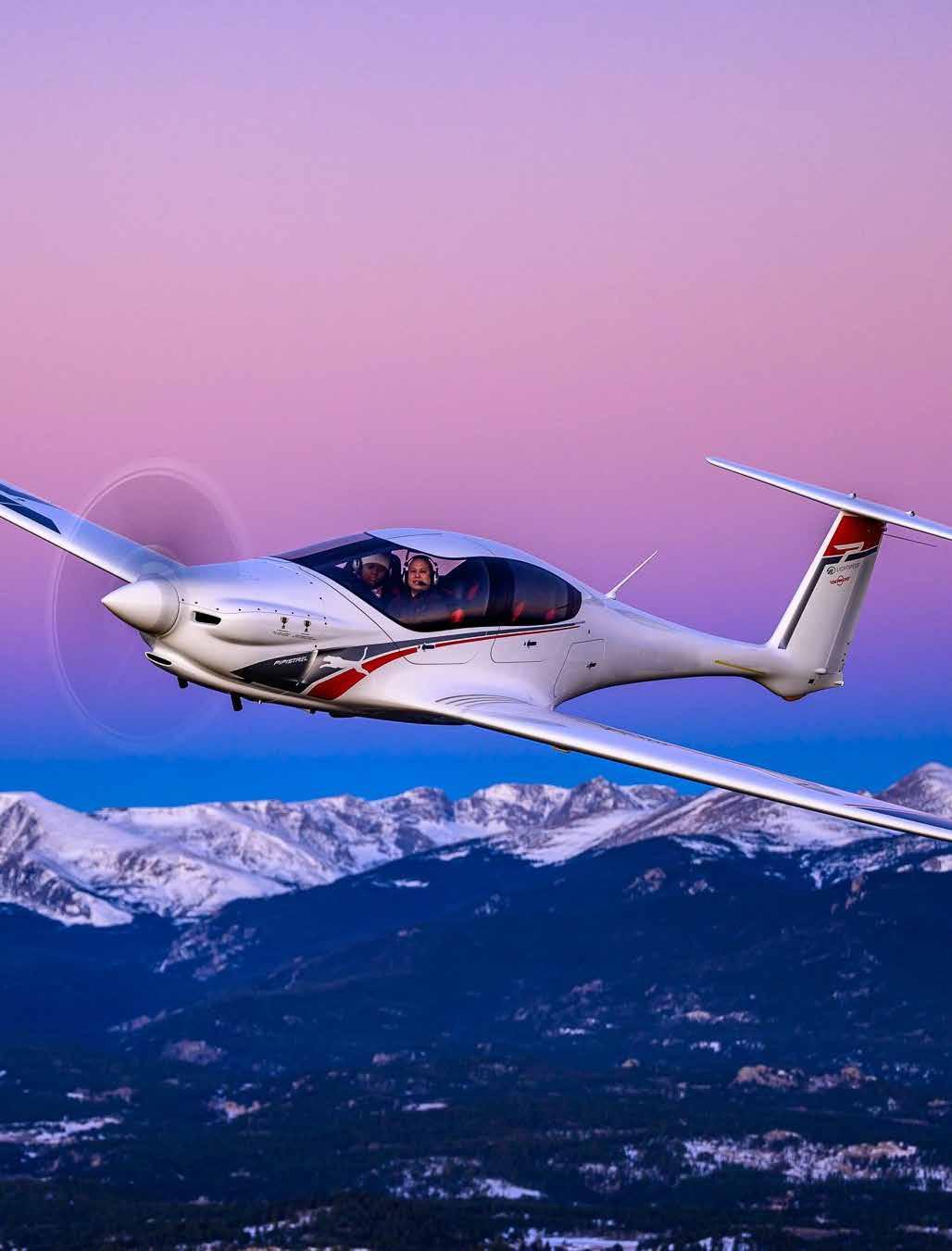



JIM: HOW TO FLY SAFE PRECAUTIONARIES
PETER: FLIES ALL-ELECTRIC
IRIS: FLYING TO THE COMOROS ISLANDS
EDITORIAL: IS GA GROWING OR SHRINKING?
LOWVELD AIRSHOW : THE BEST EVER?
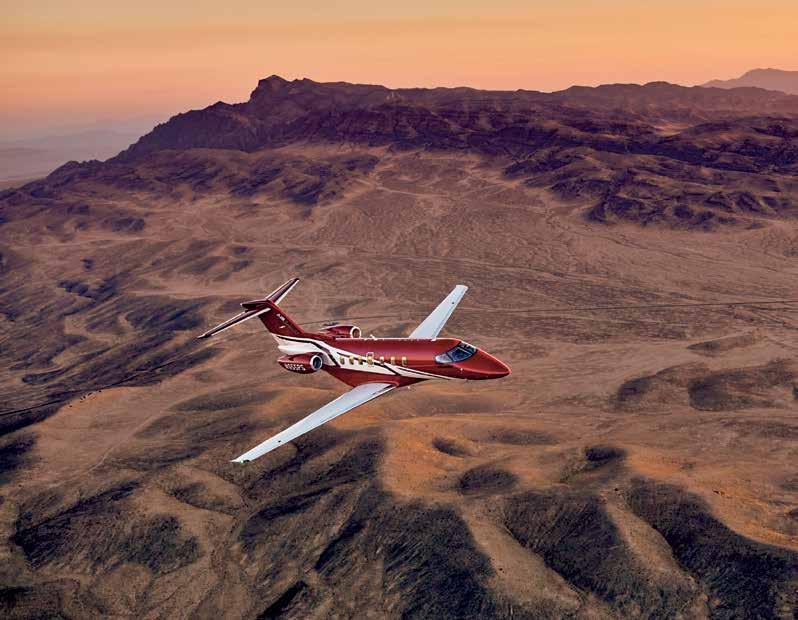
Designed from the outset to provide unmatched operational flexibility, the new PC-24 is a force multiplier.
Pilatus Centre SA
Authorised Sales Centre

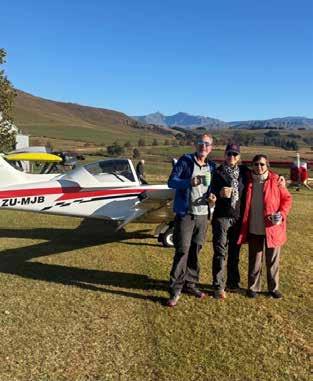
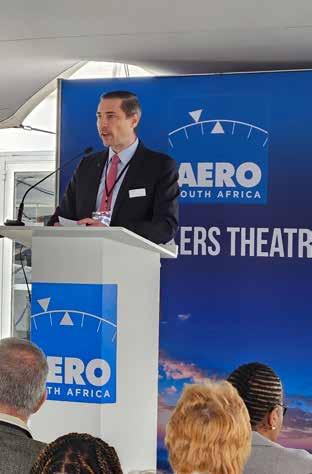
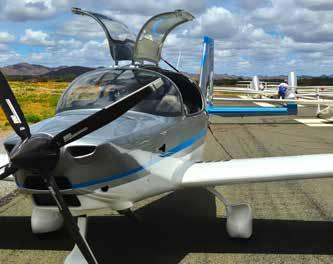
78.
10. Guy Leitch
Attitude for Altitude Leading Edge
16. Peter Garrison
22. Jim Davis Plain Talk
32. hugh Pryor
50. Jim Davis Accident Report
72. Morne Booij-Liewes Register Review





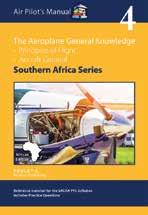

Much to my surprise, South African general aviation seems to be tougher than I thought.
GENERAL aviation is showing remarkable resilience, despite facing a continual barrage of attacks, both old and new.
The latest attack has been inevitable for those suspicious of all previous attempts to register or licence private airfields. The State Security Agency (SSA) has admitted that it has private airfields in its sights, yet very little attention seems to have been paid to this threat by the GA community.
In May there was a short press report from parliament about the government conducting security assessments at private airstrips. The reasoning is that some of the airstrips are suspected of being used for “illicit activities such as arms, drugs and human trafficking.”
The report says that since the beginning of 2025, multidisciplinary law enforcement agencies have had private airstrips on their radar as part of a government strategy to tackle serious and organized crime.
The threat is that if private airstrips are suspected of being used by organised crime, then the government is going to shut them down. This will do much damage to general aviation’s unique ability to provide essential air connectivity to
outlying areas and to tourism, notably bringing tourists to game lodges.
Another threat that has re-emerged is the notorious AIC 18.19, “twelve-year rule” for engine overhauls. For the past year the industry has been in the dark as to whether the CAA is applying this limitation only to commercially operated aircraft, or also to Part 91 privately operated aircraft. Either way, the net effect is that hundreds of planes with perfectly good engines have been grounded for no good reason.
It is difficult to quantify the harm done by bad regulations. However, the number of aviation licences has declined from 30,492 in 2014 to 27,903 in ten years. Yet the total number of aircraft registered has increased from 12,159 in 2015 to 12,906 (excluding drones).
So it would seem that the aviation industry in South Africa is almost holding its own against the onslaught of a massive increase in costs and the increasing burden of legislation. This is borne out by flying schools reporting a steady growth in demand. Also, flying schools are riding a wave of
success in their ability to attract international students to South Africa’s sunny skies, English speaking environment and still relatively affordable training costs.
Aircraft maintenance organisations and specialist operators such as avionics suppliers also report good business, particularly since Covid seems to have weeded out the weaker competitors.
So it would seem that any claims about the rapid decline of the general aviation industry are exaggerated, and the industry is still a healthy place to be. For that we can be grateful.
SALES MANAGER
Kerry Matthysen sales@saflyermag.co.za 082 572 9473
TRAFFIC
Kerry Matthysen traffic.admin@saflyermag.co.za
ACCOUNTS
Bella Leitch bella@taxfinaccounting.co.za
EDITOR
Guy Leitch guy@saflyermag.co.za
PUBLISHER
Laura McDermid laura@saflyermag.co.za
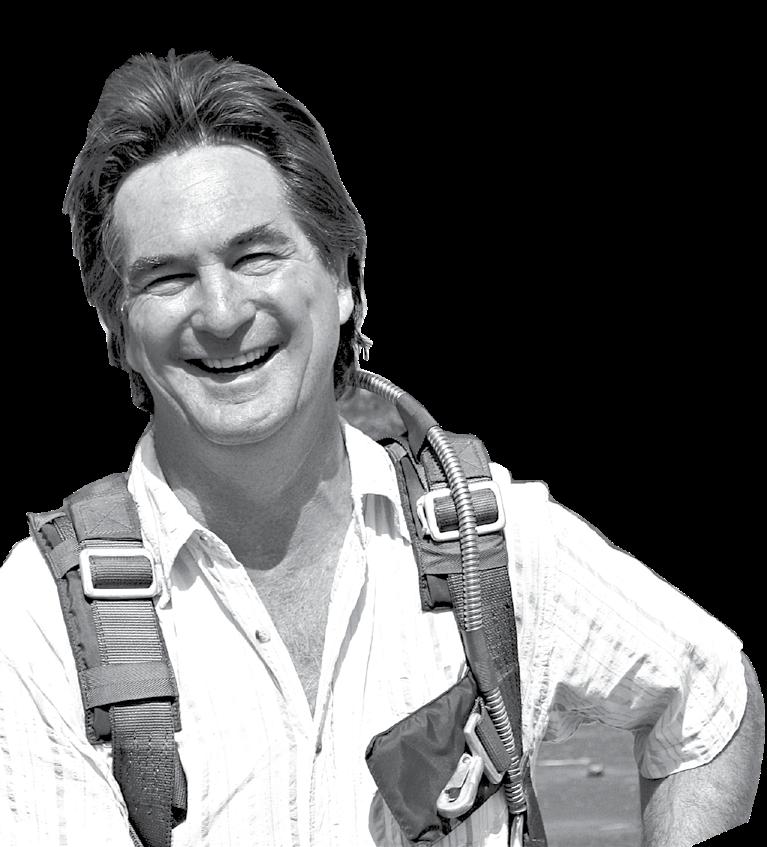

PRODUCTION & LAYOUT
Emily-Jane Kinnear design@saflyermag.co.za
CONTRIBUTORS
Jim Davis
Peter Garrison
Hugh Pryor
John Bassi
Morne Booij-Liewes
Laura McDermid
Darren Olivier
Iris McCallum
ILLUSTRATIONS
Darren Edward O'Neil
Joe Pieterse
WEB MASTER
Emily-Jane Kinnear
© SA FLYER 2025. All rights reserved worldwide. No part of this publication may be reproduced, stored in a retrieval system, or transmitted by any means, electronically, mechanically, photocopied, recorded or otherwise without the express permission of the copyright holders.
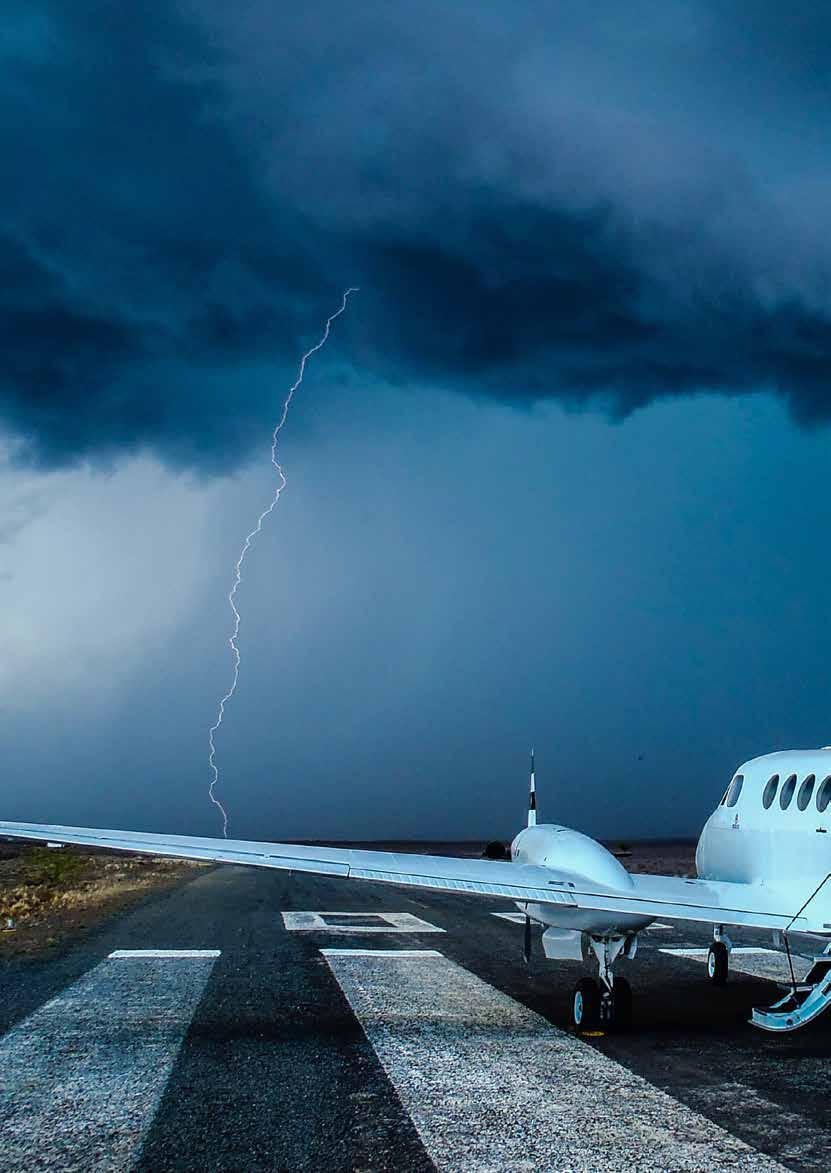
Some Opening Shots perfectly capture the drama of flying. This image by Theo Naude of a medical rescue flight at Calvinia is one such. The timing with the bolt of lightning is perfect, while on the runway, a medical rescue King Air waits with its airstair open for its patient. When the patient arrives, the captain will probably be under pressure to takeoff into the storm.
Theo used his Olympus TG610 at 250/th sec at f3.9 with an ISO of 80.
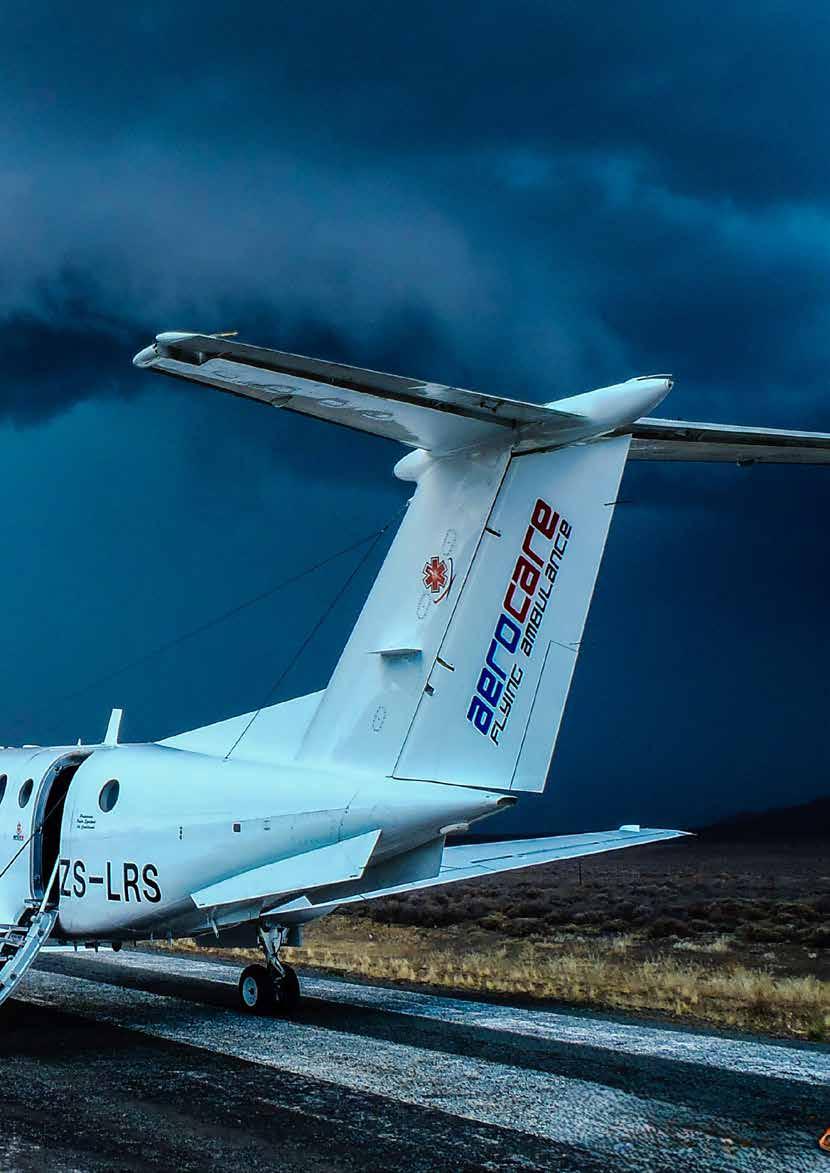
MAGAZINE -13/16

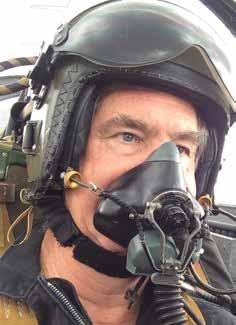
booster rockets had emitted a blast of flame onto the huge liquid fuel tank, which had spectacularly exploded.
WHEN the Autoland system was expanded to include twins, such as the King Airs, I realised that this was not just another last-resort gadget like whole airframe parachutes. While the whole airframe chute is there if the only engine quits or the pilot runs out of skill, the Autoland function is there if the single pilot quits.
Like whole airframe parachutes, a key advantage of the Autoland system is that it makes passengers feel safer. But counterintuitively, there is a case to be made that these safety innovations do exactly the opposite – that they have caused fatal accidents.
The question then must be asked: are they worth their complexity and cost?
Malcolm Gladwell became rich and famous through his best-selling books such as Tipping Point and Outliers. This success prompted his publishers to trawl through his earlier columns and they assembled an anthology called, What the Dog Saw.
Gladwell looks at the Columbia Space Shuttle disaster, which blew up after launch. After a search and recovery operation that covered 150,000 square nautical miles, they collected enough debris to confirm the cause. A faulty seal on one of the two solid
The rocket’s manufacturer, Morton Thiokol, returned to the drawing board and nearly three years later produced a redesigned seal. The first post-Challenger flight was the Discovery, and the crew held a short commemorative service. Mission commander Fred Hauck addressed the seven dead astronauts with the words, “Your loss has meant that we could confidently begin anew.”
The Space Shuttle continued to fly successfully for several years. This type of progress is called tombstone engineering, which means that it takes people to die before the engineers will fix a bad design.
Gladwell asks, “NASA was back. But what if the assumptions that underlie our disaster rituals aren’t true? What if these public postmortems don’t help us avoid future accidents?”
A number of recent studies have begun to show that tombstone engineering solutions are exercises in self-deception and in some notable cases they may increase the dangers.
In general aviation, detractors of the whole airframe chute argue that this was the case when the parachutes were first introduced as they encouraged pilots to take risks that they otherwise would not have.
Various case studies reveal that they may have a point. Gladwell writes, “Consider for example the results of a famous experiment conducted several years ago in Germany. Part of a fleet of taxi minicabs in Munich was equipped with antilock brake systems (ABS). The rest of the fleet was left alone and the two groups were carefully observed over three years. You would expect the better brakes to make for safer driving. But that is exactly the opposite of what happened. Giving some drivers ABS increased their accident rate. They drove faster. They made sharper turns. They showed poor lane discipline. They braked harder. In other words, the ABS system was not used to reduce accidents; instead the drivers used the additional element of safety

to enable them to drive faster and more recklessly without increasing their risk of getting into an accident. As economists would say, they consumed the risk reduction, they didn’t save it.”
When Cirrus introduced the whole airframe parachute, the same thing happened. Instead of the parachute reducing the fatality rate, it increased it. Pilots were consuming the risk reduction offered by the parachute and pressing on into IMC. Parachutes are no help when you fly into the fabled cumulogranatus.
An AOPA investigation concluded. “A number of Cirrus pilots broke every common-sense and legal rule in the book by continuing VFR into IMC, and often in mountainous terrain. The risk on several of these flights is far enough up the scale that you can’t help but wonder if the Cirrus’ parachute system seduced the pilots into a fatal rationalization?”
It took a concerted effort by Cirrus to train the owners of its planes to make them safer than a Skylane. There are many other fascinating examples of risk consumption. For example, the introduction of childproof lids on medicine bottles led to an increase in child poisonings. The reason is because adults became less concerned to keep pill bottles out of the reach of children.
This can also work the other way. In the late 1960s Sweden changed from driving on the left hand side of the road to driving on the right. It would be reasonable to assume that this would cause
a spike in accidents. But the opposite happened. Drivers compensated for their unfamiliarity with the new traffic patterns by driving more carefully. Over the next twelve months traffic fatalities dropped by seventeen percent.
I suppose it could be argued that countries which really want to reduce their road accident rates should switch from one side of the road to the other at regular intervals.
“Anything made by man will eventually fail.”
It’s tempting to think that Swedish drivers may be different to single pilots. The real lesson is that we have to have a clear-eyed understanding of the risks we take on.
Thus James Pitman and Mike Blyth were clear about the risks they faced in flying their Slings for twenty-four hour legs over the oceans.
When we take off on a runway in a built-up area we will crash into a house if the engine stops. If we fly a single engine at night or in IMC, we have, as Jim Davis says, ‘closed the back door’ and the risks are commensurately higher.
When asked what he thought about the PC-12’s single engine, a King Air salesman once told me, “Anything made by man will eventually fail.” This brings us back to the Challenger. Gladwell cites sociologist Diane Vaughan who wrote a paper called the ‘Challenger Launch Decision.’ The conventional view was that the Challenger accident happened because people at NASA had not done what they were supposed to do. However Vaughan concluded that, “No fundamental decision was
made at NASA to do evil. Rather a series of seemingly harmless decisions were made that incrementally moved the space agency towards a catastrophic outcome.” I reckon the same has happened to Boeing in the past ten years.
The point is, this has a profound effect on the way we view risk. Flying requires an act of faith: That the aircraft designers and certification approval process have made it safe. That the maintenance engineers have done a good job. That the materials used are strong enough. The list is endless.
But, as Gladwell points out, “If the potential for catastrophe is actually found in the normal functioning of complex systems, this assumption is false. Risks are not easily manageable, accidents are not easily preventable and the rituals of disaster have no meaning. The first time around, the story of the Challenger was tragic, a decade later, it is merely banal.”
He makes the point that Richard Freyman, the Nobel Prize winning physicist who served on the Challenger Commission, said that NASA decision making was a kind of Russian roulette.” The booster’s O rings were deemed an acceptable risk — until they failed.
Gladwell concluded that at some point in the future — for the most mundane of reasons and with the best of intentions – a NASA spacecraft will go down in flames.”
He wrote that gloomy prophesy in 1996 and was proved correct seven years later by the Columbia Space shuttle when it broke up on re-entry on 1 February 2003.
So will Autoland systems cause us to take bigger risks? Perhaps those few passengers who may have insisted on two pilots will, with Autoland, now accept single pilots. I know I would rather fly a plane that has a whole airframe chute and an Autoland system, than one that doesn’t.
I reckon the same happened to Boeing in the past ten years.
When discussing the egregious failure of ATNS to maintain the Instrument Flight Procedures, Rennie van Zyl, a former Head of the CAA and representative to ICAO, said that when he challenged a government official about the lack of accountability, he was told;
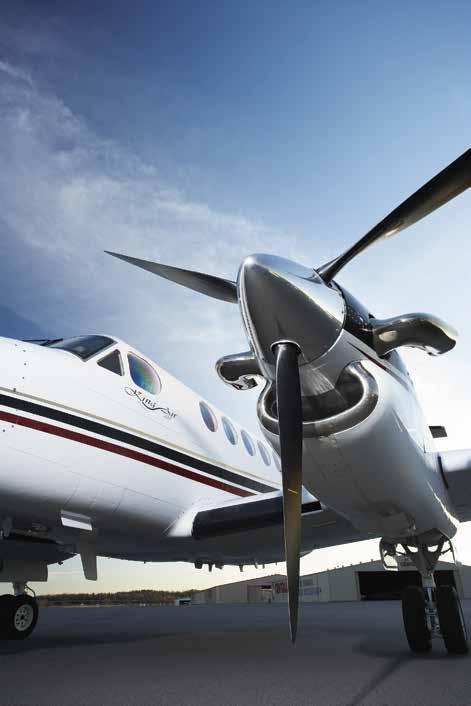
StandardAero Lanseria, a Pratt & Whitney PT6A designated overhaul facility (DOF) and the sole independent DOF approved for the PT6A-140, is pleased to support operators across Africa with Pratt & Whitney’s Flat Rate Overhaul (FRO) program for PT6A engines which combines OEM-level quality with guaranteed “not to exceed” capped pricing. Meaning that you can plan your maintenance expenses with confidence, and without any compromises.
The FRO program does not incur extra charges for typical corrosion, sulphidation or repairable foreign object damage (FOD), and PMA parts are accepted.
As the industry’s leading independent aero-engine MRO provider, StandardAero is trusted by airline, governmental and business aviation operators worldwide for responsive, tailored support solutions.

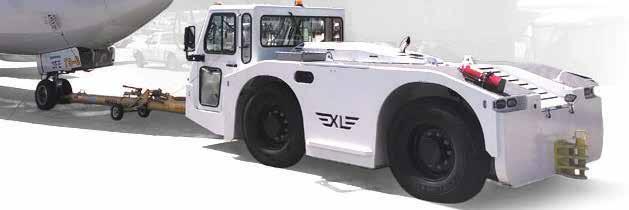

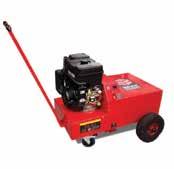
The Red Box range of jump start batteries and aircraft start units are the ideal solution for starting the majority of DC aircraft. They are designed to start aircraft from the very smallest up to the largest business jets.
This Red Box unit combines a petrol engine with a bank of batteries to offer the slickest combination unit in the world. The weight and size of this unit is unrivalled, making it the obvious choice of Business Jet owners and operators. It allows for starting and continuous power away from the normal hanger environment so that aircraft on the flightline can be serviced as an alternative to being moved via an aircraft tug into the hanger.
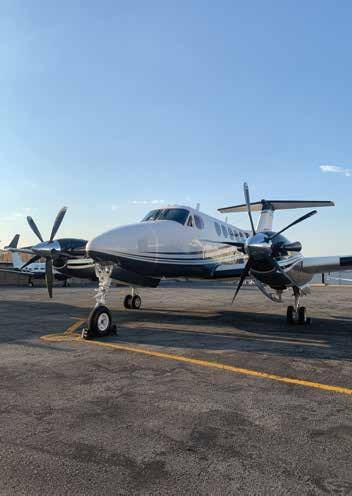
BRIDGING FINANCE
ENGINE OVERHAUL FINANCING
REFINANCING
DEALER FINANCING
RYAN FORRESTER
Ryan@airfincorp.co.za
+27 [0]82 890 6962
JASON SEYMOUR
Jason@airfincorp.co.za
+27 [0]82 326 0147
THOMAS JARDINE
Thomas@airfincorp.co.za
+27 [0]60 983 7056
JACO PIETERSEN +27 [0]82 672 2262
Jaco@airfincorp.co.za
OLIVER STRATFORD +27 [0]83 326 9408
Oliver@airfincorp.co.za
As I taxi out, a crisp shadow follows on the taxiway beside me. I give a little burst of power, then pull the throttle lever back to idle. Out of the corner of my eye I see the shadow of the prop stop. “Uh-oh,” I think. “The engine quit.” But no.

THE aeroplane is a pod-and-boom singleseat ultralight converted by Mark Beierle and Gabriel DeVault to electric power using components from a Zero electric motorcycle.
This is the first electric aeroplane I’ve been in, and I’m learning its peculiarities. One of them is that on the ground, if you pull the throttle – well, power lever – all the way back, the prop stops. You have to be careful of people standing around, since when the master switch (or “kill switch”) is on the motor is on as well, even when the propeller is not moving. It can silently spring to life at an inadvertent bump of the throttle.
The flight instruments are the minimum required, and conventional; the powerplant instruments, on the other hand, consist of a digital displays of how much power you have left, how fast you’re using it, and how hot various parts of the system are.
Having arrived at the runway, I am briefly frustrated by the lack of anything to do before takeoff. There’s no runup, and nothing to check. Not only that; the aeroplane, being an ultralight and beneath the notice of the FAA, has no N number. “Ultralight taking runway 20 for takeoff, straight out departure,” I report, with a persistent feeling that something is missing.
DeVault has told me that the full-power climb is unexpectedly steep and the aeroplane is somewhat noseheavy, and so when landing I should fly it on
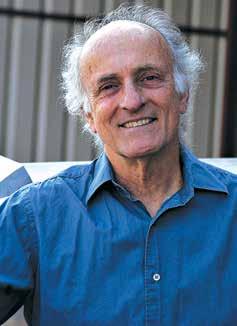
rather than attempt to stall it on. I retain the first of these warnings and forget the second.
He’s right; the angle of climb is impressive, as is the deck angle, and I’m not even using full power. I climb straight out to 1,000 feet and turn northward along the coastline of Monterey Bay.
It’s a beautiful day, the scenery is lovely, Santa Cruz serenely puffs cannabis in the middle distance. There is no vibration, but the aeroplane is noisier than I expected. You imagine an electric motor will be practically silent, and maybe it is, but the propeller, chopping its way through the disturbed wake of the pod and wing, isn’t. DeVault has posted a bunch of in-flight videos made in it and his new electric Sonex Xenos that give a good idea of both aeroplanes: search for “Gabriel DeVault” on YouTube.)
Electric cars added the phrase “range anxiety” to our vocabulary. Flying an electric aeroplane is like flying a conventional aeroplane when you’re down to the last hour’s fuel. But at least in the electric aeroplane you know precisely, to two decimal places, where you stand; there’s none of that “Does the width of the needle count?” feeling. DeVault told me to come back when I’m around 30% of charge; after 40 minutes in the air, I’m there, and do. My landing is atrocious; forgetting that I’m not supposed to stall it on, I let the plane develop too much of a sink rate and then find that I don’t have the elevator authority to arrest it. After I

collide with the runway, an inept dance on the heel brakes ensues. Luckily the landing gear is pretty stout – DeVault says that Beierle, the aeroplane’s designer, demonstrates it by veering around on rough ground like an SUV in a TV ad.
Well, I thought, that was fun, except for the end.
The fuel of electric aeroplanes is kilowatts. The watt is a unit in the metric system - our light bulbs have been metricated all along – and is the power of one volt at a current of one ampere. A kilowatt is 1,000 watts and equals one and a third horsepower. Eventually you stop having to make conversions, but as a novice I still multiply kilowatts by 4/3 to get back to familiar territory. (For instance: The 100-watt bulb in my reading lamp draws about 1/7 horsepower.)
DeVault’s motor has a peak output of 45 kW (60 hp), but at that level will soon overheat; it can run continuously at around half that power, but only 10 kW is required to maintain a stately cruising speed of 55 knots.
The battery capacity is given in kilowatt-hours, abbreviated kWh. It
is as if we measured the capacity of fuel tanks in horsepower-hours rather than gallons. A 50-gallon fuel capacity is around 650 hp-hr and will keep you aloft for five hours at an output of 130 hp.
The lithium-ion battery, with about 1/50th the per-pound energy capacity of avgas, stores around 11 kWh. Charging time is a function of supply voltage; a 220-volt outlet will top a completely drained battery in an hour, provided a 50-amp circuit is available (because 50 x 220 = 11,000). At typical electric rates, the cost of a full charge is $1.20. Alternatively, a 20 x 25-foot patch of solar cells, retail cost around $7,000, will do the same for nothing, assuming the
sun is shining. Until now, an aeroplane was never a cheap date.
The motors of electric aeroplanes are much lighter and more compact than comparable internal combustion engines. Their power output is limited by, among other things, rpm, which in aviation applications can’t exceed around 3,000 because of propeller tip speed, and, importantly, by cooling. Being so compact, electric motors do not have a large surface area to dissipate waste heat; high-performance motors use liquid cooling, and sacrifice some of the advantage of their small frontal area to the need for a radiator.
The electric motor’s throttle is its “controller”, which looks like an old-fashioned hi-fi amplifier with cooling fins. The controller works by interrupting the flow of electricity from the battery to the motor with fast solid-state switches. The more power you ask for, the more of the time the switches are “on”. The tempo of the switching is so rapid that the flow of power appears continuous.
As everyone knows by now, lithium-ion batteries have enough energy per pound to permit flight, if only at moderate speeds and for short distances. Partisans of electric aeroplanes regularly predict great increases in battery power density, but these are speculative. For the moment, what gets from a battery to the propeller is about one-fifteenth, per pound, of what we get from avgas. There are battery chemistries that are considerably more power-dense than lithium-ion, but that lack its virtues of rapid rechargeability and long useful life.
controllability of electric motors lends itself to self-stabilisation. If you believe press releases –you shouldn’t – some of these are on the verge of going into commercial service.
How suitable pure electric – as opposed to hybrid – systems prove to be for other kinds of aircraft will depend on still-unforeseeable developments in battery technology. Where there’s a will there’s a way – but it may be a long way. The electrification of flight has drawn so much investment, however, that what seemed a few years ago like a hare-brained idea may actually come to fruition.
j
(The difference between the 1/50 I mentioned earlier and the 1/15 in the previous paragraph is due to the fact that electric motors are about three times as efficient as piston engines.)
No fewer than 230 companies, worldwide, are developing one kind or another of electric aircraft. Many of these are of the short range, multi-rotor VTOL urban taxi variety, for which electric propulsion is uniquely suitable because the precise

Church Belinda Valhalla 079 636 9860 churchbs@live.com
Du Plessis Alexander Athlone Park 031 904 7460 dex.duplessis@intercare.co.za
Erasmus Philip Benoni 011 849 6512 pdceras-ass@mweb.co.za
Feinberg Rodney Lyndhurst 011 882 6010 rodneyfeinberg@gmail.com
Govender Deena Umhlanga Rocks 031 566 2066/7 deena@drdg.co.za
Head Brandon Sandton 010 448 0900 reception@drbradonhead.joburg
Maneli Lumka Sandton 083 471 2051 lumka@doyioccuhealth.co.za ✗
Toerien Hendrik White River, Nelspruit 013 751 3848 hctoerien@viamediswitch.co.za
by Peter Garrison







HELLO HAPPY INSTRUCTORS. YOU MAY NOT BELIEVE THIS, BUT I INVENTED PRECAUTIONARY LANDINGS. I HAD NEVER HEARD OF THEM WHEN I DID MY FIRST ONE. SO I INVENTED ONE FOR MYSELF.

LET me explain – there is much to learn from the story. After that I’ll get on with the serious business of what to teach your pupes, and what they will do to stuff it up.
In the 1960s PPL training was pretty rudimentary. Our aeroplanes were slow and simple, and they couldn’t go very far in one hop. We had no radios – why would we need one when Schalk Barnard was in the tower to flash a light at us so we knew what we may or may not do.
There were very few aeroplanes and concepts like controlled airspace were unheard of. If you had a wireless (sorry, radio) then you talked when you were in range – perhaps 20 or 30 miles – and every airfield had the same frequency: 118.1
Our little aeroplanes were very easy to fly, and most were easy to land – despite having a conventional undercarriage with the extra wheel at the back.
My point is that 40 hours was a hell of a long time in which to learn very little – so the whole thing was incredibly casual. The story of my solo cross-country will give you an idea.
My god-like instructor was Dirty Bossie – who really was dirty. He had the appearance of one who had spent the night repairing a sewage facility. There was a bit of a high-tide mark round his neck, and you would often see him swatting at one of those blue-bottle flies that seemed to find him attractive.
Bossie was an exceptionally good-hearted guy but vaguely malodorous and not the most conscientious instructor.
His briefing to me as I was about to set off on my first solo cross-country from Wonderboom to Rustenburg, Baragwanath and back was, "Don’t fuck it up, and don’t fly into clouds."
‘"Clouds?" I ask.
"Those fluffy white things in the sky."
"Oh those? Okay."
The word ‘cloud’ meant nothing to me. Clouds were simply nice cotton wool things which were always far away. I never encountered one at close quarters until it was too late.
The terms VFR, instrument flying, graveyard spiral, and so on were not part of my vocabulary, so I had no fear of clouds.
I did two unbelievably pansy dual cross-countries. The first was to Bronkhorstspruit, Rust de Winter Dam and back. Never more than about 40 nm from
base. The second was the same trip the other way round. 1h10m and 1h5m respectively.
After this, Bossie believed me capable of flying to the little town of Brits, thence to Baragwanath airfield, south of Johannesburg and back to Wonderboom airport, north of Pretoria. All on my own. Even today, quite an ambitious trip in a Cub.
Met reports were not part of Bossie’s grass-roots approach to aviation. He simply told me that if I could see the Albert Hertzog (Brixton) tower, I would be close to Baragwanath… “Now bugger off”.
The information about the Hertzog tower was, of course, totally useless. The strange edifice, with its rotating restaurant, 700 ft above western Johannesburg, can be seen from anywhere within 30 miles. This means, if my sums are correct, that I would have somewhere around 2800 square miles in which to locate Baragwanath airfield. Not a very helpful lump of information.
Actually despite the inaccuracy of Bossie’s directions, the tower proved surprisingly useful. Here’s what happened.
I could hardly fail to find Brits - it is only a few miles outside the Wonderboom circuit. From Brits I turned south and all went splendidly until I was about 15 minutes out of Baragwanath, when a solid layer of low cloud appeared below me. I pressed on in blissful ignorance. Then I spotted the top of the famous tower poking through the cloud. When my watch said my ETA was nearly up, I simply descended into the cloud.
The sensation seemed a little strange as I peered over the side in the hopes of spotting some interesting landmark through the soup. Then our motion started to feel peculiar, and the wind noise became shriller, and the airspeed increased. Suddenly a tiled rooftop slid past below the wing-tip. We were banked steeply to the left.
I still wasn’t worried. I levelled off, waited for the compass to stop swinging and turned gently on to my previous heading. I was still not in the least concerned as I skimmed 20 ft above the rooftops.
Suddenly a Dak loomed out of the mist. Gee, I thought, the weather must be bad if a Dak lands on a road. I had better do the same. Which I did. The ‘road’ turned out to be the main runway at Baragwanath.
When I taxied up to the fuel pump, Mike van Ginkel appeared out of the mist, striding towards me. He had the air of a man who is not at peace with his surroundings, and is going to do something about it.
Without the usual introductory pleasantries that one would expect from a fellow aviator like, for instance, “Howzit, mate?” He went straight to the nub of the matter.
“What the hell do you think you are doing flying a Cub in this weather?” he demanded. And before I could answer, he followed up with an easier question, “And where the bloody hell have you come from?”
“Wonderboom” I replied innocently.
“Don’t move from here,” he said, pointing at the ground at my feet, and strode off to phone my instructor.
An hour or two later the weather cleared so I refuelled and headed back to Wonderboom, still none the wiser, and still somewhat aggrieved by Mike’s dictatorial manner – I felt it was something he needed to work on.
I still had no idea that I had done anything wrong, stupid, illegal, and life-threatening. Even when I got back, Bossie failed to discuss my crimes. He was a wonderful character – but not the greatest instructor in the world.
Anyhow that was my self-taught precautionary landing. I landed on what I thought was a road as a precaution against bumping into anything in the mist. And it’s still a pretty good idea to this day.
Less than two years later the DCA scratched its head, flew with me in my Tiger Moth and handed me a wad of paper saying it considered me just the sort of guy they needed to teach others to fly.
Nothing much had changed – the system was still pretty slack. I had done my 20 hours of patter – all solo, no one said I had to be instructed in this activity. Lectures were not part of the deal, and no one knew exactly what patter was – thus no notes were available.
I had to write my own. Over the years I refined them and doled them out for free to anyone who was interested. Eventually those 30-odd pages became the ‘standard’. Most flying schools put their name to my document and still use them to this day.
Then the DCA got hold of them and decided they were totally inadequate so they formed a committee to make my notes better. These gentlemen then formed a sub-committee who expanded it into chapters with numbered paragraphs and sub-paragraphs and sub-subparagraphs with roman numerals. They then poured in a mixture of padding, repetition, and govspeak until my little book of notes turned into
I skimmed 20 ft above the rooftops.
a 330 page AIC that is both incomprehensible and boring.
But I digress, I will now condense the precautionary landing bit into a bunch of headings to guide you through this fairly difficult and badly taught exercise.
Precautionaries, crosswind landings and go-arounds are generally the worst-taught exercises in the PPL syllabus, so please make sure your pupes are good at them.
Precautionaries are a matter of procedure, and accurate flying in poor visibility while under stress.
As soon as you start looking for a field lower one notch of flap and go to your best rate of climb speed.
Set the pitch and mixture so you have got full power when you need it. Check for carb icing frequently.
Assess the wind early to help you choose a field. Keep the wind in mind during your circuits and correct for drift as needed.
Do at least two inspection runs – one high and one at low level. The high level one should be at whatever height you are flying at - generally 100 feet below the cloud base.
During the high-level inspection check:
• The length of the field.
• Obstructions on the approach and overshoot end.
• The gradient of the field.
• The orientation of the field on the compass or DI.
• Landmarks: dams, roads, power lines, trees etc.
• Animals – cattle, sheep, game.
• The general suitability of the field. If it looks suitable and safe to do a low level inspection, fly just to the right of the landing path at about 50 ft and check:
• The surface – mud, sand long grass etc.
• The condition – ruts, holes, stones and so on.
Make sure the airspeed doesn’t increase during your descent for the low-level inspection. This is a very common fault. You can’t inspect the surface properly at high speed. But you must also be careful not to let the airspeed bleed off during the inspection. Both these are common errors. The diagram shows a circuit procedure that usually works well – but it is not cast in bronze.
Remember the following points:
• Do not get too far from the field – you may lose it in the poor visibility.
• Do not get so close to the field that you have to do steep turns.
• Use left hand circuits if possible. They keep the field on your side and offer better visibility through the storm window.
• Do not fly too close to the cloud base – it seriously reduces visibility.
• Use your DI and landmarks to help with orientation.
CIRCUIT PATTERN
You see a field that looks as though it might be usable. Turn to fly straight over it. Select partial flap and use the best rate of climb airspeed.
1. Start looking at the general layout and prominent features.
2. High level inspection for orientation, approaches and general suitability.
3. Turn downwind and prepare for your low-level inspection.Fuel selection, pump on, mixture rich, pitch fine, carb-heat and cowl flaps as required.
4. Descending turn.
5. Note direction and reciprocal on directional gyro.
6. Low level inspection.
7. Climbing turn on to reciprocal.
8. Downwind – landing checks.
9. Descending turn on to finals.
10. Select flap and airspeed for short field landing.
11. Touch down, raise flap and use short field braking.
12. Stop.
13. Walk over ground before taxying.
Use the short field approach and landing described in the POH plus the following guide:
• Use the maximum flap that will permit a safe go-around.
• Approach speed should be the minimum safe speed considering the wind, anticipated wind-shear and load.
• The approach should not be a daisy-cutter, nor should it be so high that it is almost a glide. Establish a fairly steep approach controlled with power to bring you down to a position just short of your touchdown point.
• There should be almost no float before touchdown
• The landing should be at stall speed with the nose high.
• After touchdown, raise the flaps (not the undercarriage), keep the stick back and brake as firmly as conditions allow.
Note: If any of the above procedures are contrary to the handbook, then do what the POH says.
A PRECAUTIONARY CIRCUIT AND LANDING offers plenty of scope to display common sense and airmanship. The circuit must be planned intelligently. Keep your passengers briefed and tell ATC of your
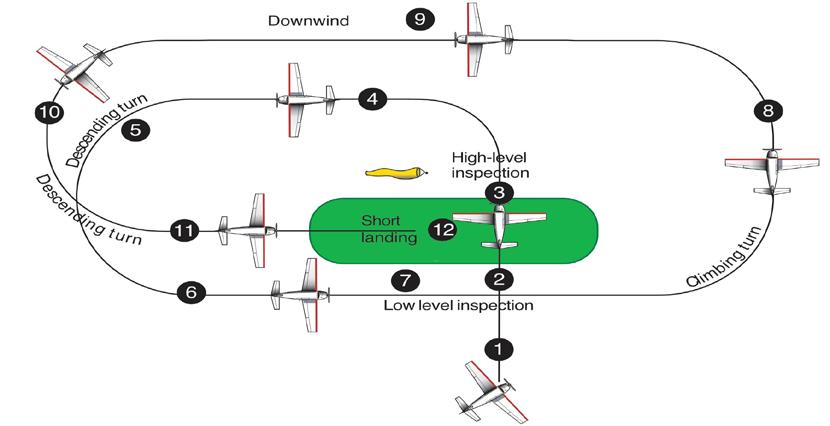
1. You see a suitable field and turn to fly over it. Select takeoff flap & best climb speed.
2. Look at general layout and prominent features.
3. High level inspection for orientation, approaches and general suitability.
4. Prepare for low level inspection. Best tank, pump on, mixture rich, pitch fine.
5. Descending turn.
6. Note direction and reciprocal on DG. Prepare to time the run.
7. Low level inspection of surface.
8. Climbing turn on to reciprocal.
9. Landing checks - BUMPFF.
10. Descending turn on to finals.
11. Select flap and airspeed for short landing.
12. After touchdown raise flap & brake firmly. Walk before taxiing. Phone ATC to cancel SAR.
intentions. Also remember to phone ATC after landing.
Carb-heat is vital – the conditions that call for a precautionary are often conducive to carb-icing. Don’t turn on to final too close and too high as this will cause the speed to increase during the descent – either for the inspection or for the landing. Remember that flying too close to the
cloud base will reduce visibility drastically. Should you choose a road or a field? This story may help you decide.
In the 1960s, Eddie Pelcher had a company called Republic Aircraft Parts at Wonderboom. He flew a 140 Cherokee appropriately called ZS-RAP.
I was the hangar-rat for Placo which was right next door. I was much impressed by Eddie. He had a reputation for blinding off in appalling weather and always arriving at the other end. But I was young and easily impressed by any Cherokee pilot. My own skills were limited to landing a Cub without damaging the environment.
Eddie flew spares all over southern Africa. If you were stranded in the bush and needed a magneto for a Stinson, Eddie was your man. He also flew to the scene of every aircraft accident, to see what might be salvaged.
His services were much in demand and his business prospered.
But I had to know his secret – how could he consistently fly in bad weather? His aeroplane was not equipped for instrument flying, and he had no rating. So what gave him the power to fly in all weathers?
Eventually I picked up the courage to enter his
office and ask him. He stopped shuffling through a pile of papers and studied me doubtfully over his half-moon glasses, as if trying to decide whether I was worthy of his attention.
Finally he said four words, ‘Roads. Now bugger off.”
It took earnest enquiry amongst folk around the airport before the truth came out. Eddie followed roads when the weather was down.
When the cloud got too low he simply landed on the road. He waited for the clouds to lift, then took off again.
Now, I don’t think this is an intelligent way to plan your flying. But Eddie had two things going for him. First, he always knew where he was. And second, he always had a nice long runway available. Obviously he kept his eyes peeled for wires, signposts and traffic. Also the roads were quieter in those days.
For weather reports Eddie used the nommer asseblief Met system. He simply rang the telephone exchange at the place whose weather he wanted to know and asked the tannie to stick her head out of the window and tell him what she saw.
I think Eddie’s main crime was that he was using an emergency back-door as a normal everyday facility.
I don’t suggest we should follow Eddie’s example. But it seems that many of us are more scared of landing on a road, than of crashing into a mountain.
So I’d generally go for a road if I needed to do a precautionary. BUT I would only use one as a last resort in a forced landing. Touching down at 45kts almost anywhere is better than flying into poles, wires or vehicles while being determined to land on a smooth surface.
So if your pupes fly immaculate precautionaries, crosswinds and go-arounds then you are a top instructor and I’d be proud to buy you a drink.
j
FLYER MAGAZINE -JUNE 2025
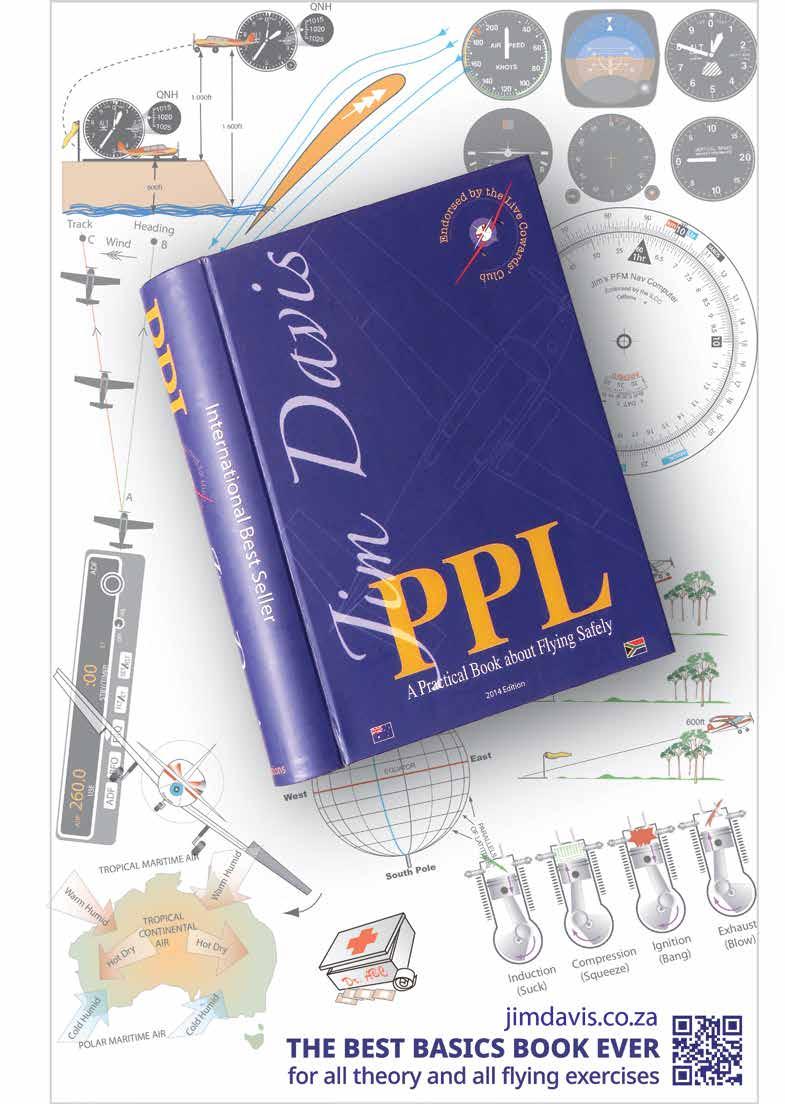
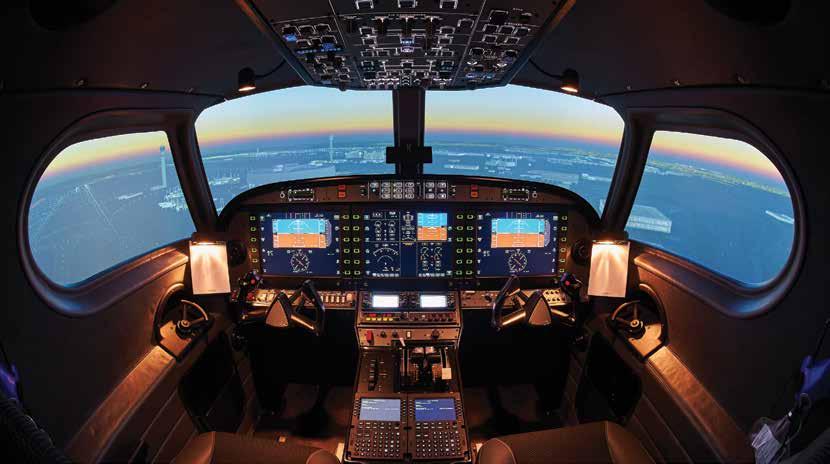
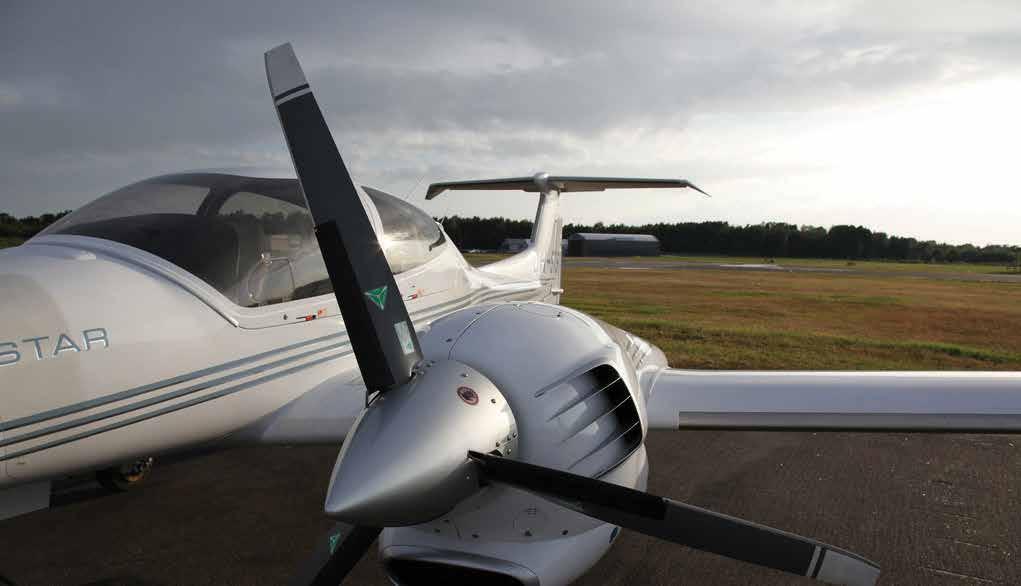
• Now certified for TCAS training.
• RNAV and GNSS Certified on all flight models from single engine to turbine.
Tel: 011 701 3862
E-mail: info@aeronav.co.za
Website: www.aeronav.co.za
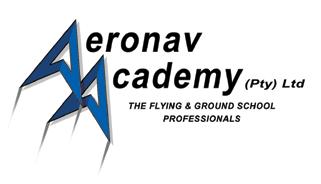

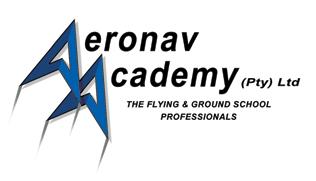





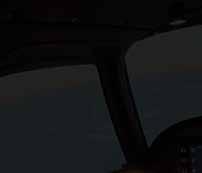







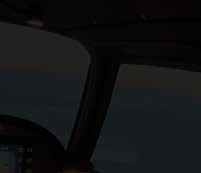
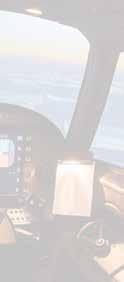






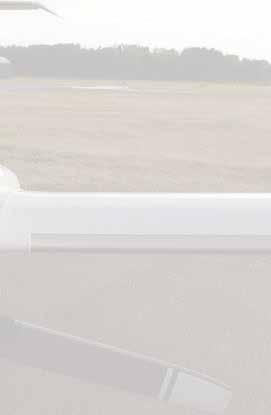
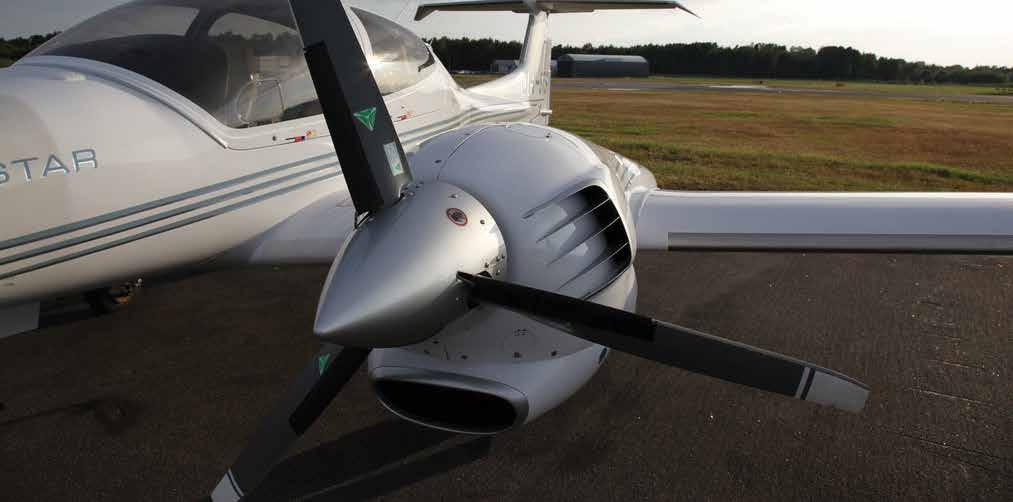
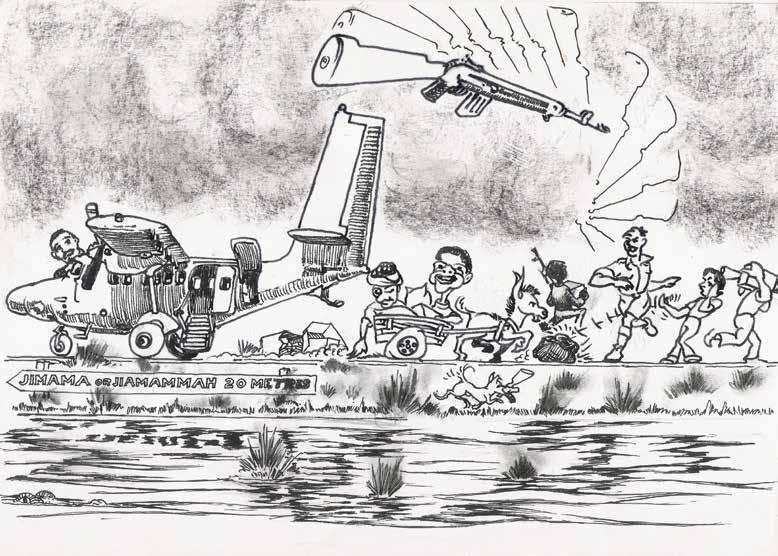
Last month Hugh Pryor described how they dramatically improved the success rate of dropping supplies out the back of a Twin Otter simply by flying higher. This month he gets into a very tight spot.
THESE lessons came in very useful at Kamsuma. John Steele, the Chief drop co-ordinator for the WFP, world-wide, came to Somalia to assess the feasibility of making airdrops in a flooded landscape.
The people of Kamsuma presented an ideal testing ground for the initial experiment. The main road from the little port of Kismayu, up the Juba River valley to the north and west, crossed the river on a substantial bridge, close to the submerged town.
Much of the road remained dry and the people had clambered up onto it to escape the raging torrent which had swept away the large banana plantations which were the basis of the local economy. They had little shelter from the continuous rain and so John’s first requirement was the plastic sheeting.
John had gone in with one of the distribution boats and he had taken a VHF radio with him so that we could communicate.
We took off from Garissa soon after six in the morning. I had removed the aft right hand door of the Twin Otter and stored it in the luggage bay behind the main cabin. Russell, a US Marine Corps Drop Master, was going to be down at the back for the drop and Pete would go and give him a hand when the time came. Both would be attached to lanyards which were secured to tie-downs at the front end of the cabin. The lanyards were

designed to be not quite long enough to allow Pete or Russ to fall out of the door. The plastic came in twenty metre by twenty metre sheets, rolled up and secured in plastic bags. They weighed around seventy kilos each and so sliding them out of the door would challenge Russell’s ingenuity and experience.
We discussed how the drop would be organized. Basically, we would treat the drop zone (DZ) like a runway and set up a standard left hand circuit pattern around it. Initially we would make a very low run over the DZ so that I could get an accurate altitude reading and assess the clearance between the trees. I would be using the Public Address System to keep the two guys in the back up to date with our position in the pattern and to advise them when to drop and when to stop.
We had the co-ordinates of Kamsuma installed in the GPS and, as we approached through the skeins of rain and low cloud, we spotted the bridge.
“Kamsuma Mobile…Kamsuma Mobile…This is UN-Tango-One, do you read?”
“Morning, Hugh John here.”
“Morning, John. We’re inbound from Garissa with a load of plastic sheeting. We have Kamsuma in sight and should be with you in a couple of minutes,” I replied. “Where do you want it?”
“Have you got the bridge?”
“Yeah, we have the bridge in sight.”
“There’s about four hundred metres of straight
- june 2025
I had landed at the right place and then taxied to the wrong one.
road to the south of the bridge. That’s the DZ. Can you have a look at it?”
So we did. I saw John standing on the road by some bushes, waving his arms like a windmill in a force ten. We lined up on the stretch of road and swept in low over the bridge. John disappeared under the nose and I pressed the aircraft down to within feet of the road. Trees and bushes approached us from the far end.
“What’s the altitude, Pete?”
“Two sixty feet,” said Pete. We pulled up and curved away to the left, over the brown flood waters which flowed across the ruined banana plantations. Pelicans crowded in groups around an outflow where the water surged through the remains of an old berm which had
succumbed to the irresistible weight of the floods.
“Drop altitude should be just over five hundred feet then.” I said, glancing at Pete for confirmation.
“Sounds good to me.” He nodded.
“You want to pop down the back and give Russ a hand?”
“OK. See you.”
“Check the lanyards, eh. You’re the barman this evening!”
“Will do,” he said as he took off his headset, hooked it on the bulkhead and ducked through into the main cabin, clambering over the stacked rolls of sheeting.
“OK in the back?” I called over the PA system, twisting round to catch Russell’s thumbs-up. “Can you hear me OK?” Two raised thumbs indicated that the show was about to begin.
We flew round above the drop zone again and I called John to tell him we were ready for the drop.
“Okay,” he said. “Try and get the sheets on the road please, ‘cos if they go in the water, we’ll lose ‘em.”
“We’ll try our best, John.”
We bore away from the road again in a wide gentle left turn. I wanted to give everybody lots of time to get sorted out for the drop.
“Okay,” I shouted into the mike. “We’re down wind for the drop. Prepare to drop… Prepare to drop.” I glanced into the back and Russ and Pete nodded enthusiastically that they were ready.
“Turning Left Base for the Drop.” I called. “Prepare to drop… Prepare to drop.”
We turned to the left again and the road slid into view over the nose.
“Finals for the drop,” I called, trying to gauge the precise moment when Russ should start heaving the goods out of the door. “Ten… Nine…Eight… Seven Six
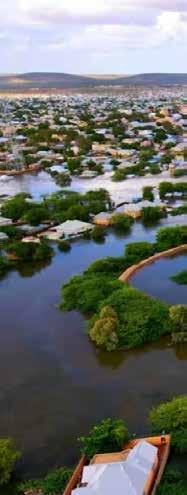
Five……Four...Three…Two……..
One…..DROP NOW…DROP NOW… DROP NOW!” I felt the Twin Otter rumble and lift as each package left the aft door. The trees were rushing towards us.
“STOP THE DROP… STOP THE DROP!”
We once again hauled up, away from the road. This was serious FUN! “How did we do, John?” I asked the radio.
“They’re all on the road!” shouted John.
“Encore! Encore!”
We did two more drops and the guys in the back didn’t lose one roll of sheeting to the surging tide which flowed down each side of the road.
In the days after that, we dropped food bags onto the road
and never lost one. John waxed lyrical about the accuracy of our deliveries. It really was extraordinary how a couple of guys down the back end of a Twin Otter could place 25 kilo bags onto a five metre wide stretch of road from two hundred and fifty feet. Some of us couldn’t even hit the toilet from two feet, after the beers we drank that evening!
After each drop we went back to Kismayu for another load. Not one bag went into the drink at Kamsuma. The WFP were so pleased with us that they actually sent us a letter of thanks and those don’t grow on trees at the UN!
Kamsuma wasn’t the only place screaming for food, of
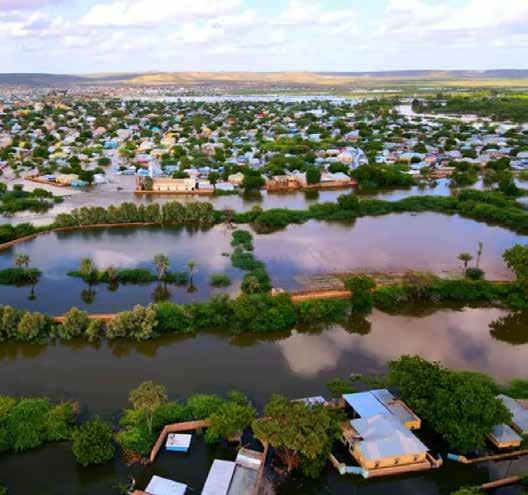
course. Jamama had to be re-supplied constantly, so that the boat crews had something to deliver. So we were kept quite busy. We had an arrangement with the South African Civil Aviation Authority that we could continue operating until the job was done, with no restrictions on flight hours or duty times. I did 222 hours in January 1998. That sounds almost criminal, but, as you can see, we were having the time of our lives and it is amazing how quickly the hours pass when you’re having as much fun as we were.
Each landing at Jamama was an adventure. The challenge of the actual landing was spiced by the uncertainty of the reception awaiting us after our arrival, which brings me to Beneingi, the original subject of this story!
Final approach to the road at Jamama was over the neighbouring village of Beneingi. The people of Beneingi were acutely aware of the supplies being delivered to the people of Jamama. They were not, however, aware of the fact that most of the supplies were being redistributed by the boat crews to the more distant victims of El Niño. Jealousy reared its purulent head among the amphetamine soaked youths of Beneingi. One of the ironies of the flood catastrophe was that lack of food was causing death by starvation, but if you needed an amphetamine fix, you just
popped round to the local Khat dealer and paid your money.
After the landing on the road, the aircraft had to be reversed back along it because there wasn’t enough room to turn the plane around.
On one occasion, I landed in Jamama and reversed back about ten metres too far, thus crossing the boundary into Beneingi territory. I had landed at the right place and then taxied very definitely to the wrong one. I only discovered my mistake when I opened the airstair door to unload. I was immediately confronted with a screaming mass of fighting humanity. The door was wrenched out of my hands and fell open with a crash. Before I had time to gather my wits, the aircraft was invaded by a crazed hoard of shouting, gouging, kicking bodies. Within minutes it was all over. The cabin had been stripped of all movables. I noticed with horror that one of the movables was my flight bag. In stunned disbelief, I searched every corner of the cabin and the flight deck, without success. I raced to the open airstair door and leaped out. I hit the ground running. Not fifty metres away up the road towards the village, I saw a tousled figure trying to run from the scene. Over his right shoulder was a large G3 assault rifle and hanging heavily from his left hand was my black nav bag. I stormed up the road after him.
As I approached, he must have heard the pounding of my feet and he turned. I reached out and grasped the muzzle of his rifle, tearing it out of his hand. Shock spread across his features. He had obviously badly misjudged my intentions.
“THAT IS MY BAG!” I shouted, my voice amplified by the fury boiling in my chest. “There is NOTHING in that bag that you want!” Not strictly true, I suppose. The Kenya money would have kept him in Khat for a month. “GIVE IT BACK!”
Reluctantly the youth threw the bag to one side and I hurled his rifle high in the air to land about thirty metres away, in the swamp. Honour now satisfied on both sides, he scampered off into the water to search for his weapon, if he could find it and I swung round to retrieve my own property. I turned at the exact moment when the wheel of the passing donkey cart bounced onto the ground after crushing my bag under the combined weight of the cart, about three hundred kilos of emergency relief
rations and three slightly dazed Khat communicants.
Of course my Psion palm-top computer was mince-meat and the toothpaste and shampoo had mingled to make the inside of my wash bag look like something designed to give Sigourney Weaver a heart attack in an Alien Movie. Various other accoutrements were also shredded, but, by some miracle, the GPS survived unscathed. The bag is sitting on the floor beside me as I write, four years later, in the middle of the Algerian Sahara. The scuff mark where the wheel rim cut into the webbing is still there like a reminder of our past experiences. You see, we’ve been around together for rather a long time, the old bag and I, as has my wife.
The euphoria of being reunited with my old friend did not diminish my resolve to identify the actual spot where Jamama became Beneingi, and never to cross it again. Which brings me back to my original point. It takes unusual circumstances for someone to land in the right place, and to taxi to the wrong one and if you are thinking of doing this yourself, please don’t do it, like I did, in Reverse. It’s so much better if you can see the hole you are going to fall into! Then you might even avoid it!




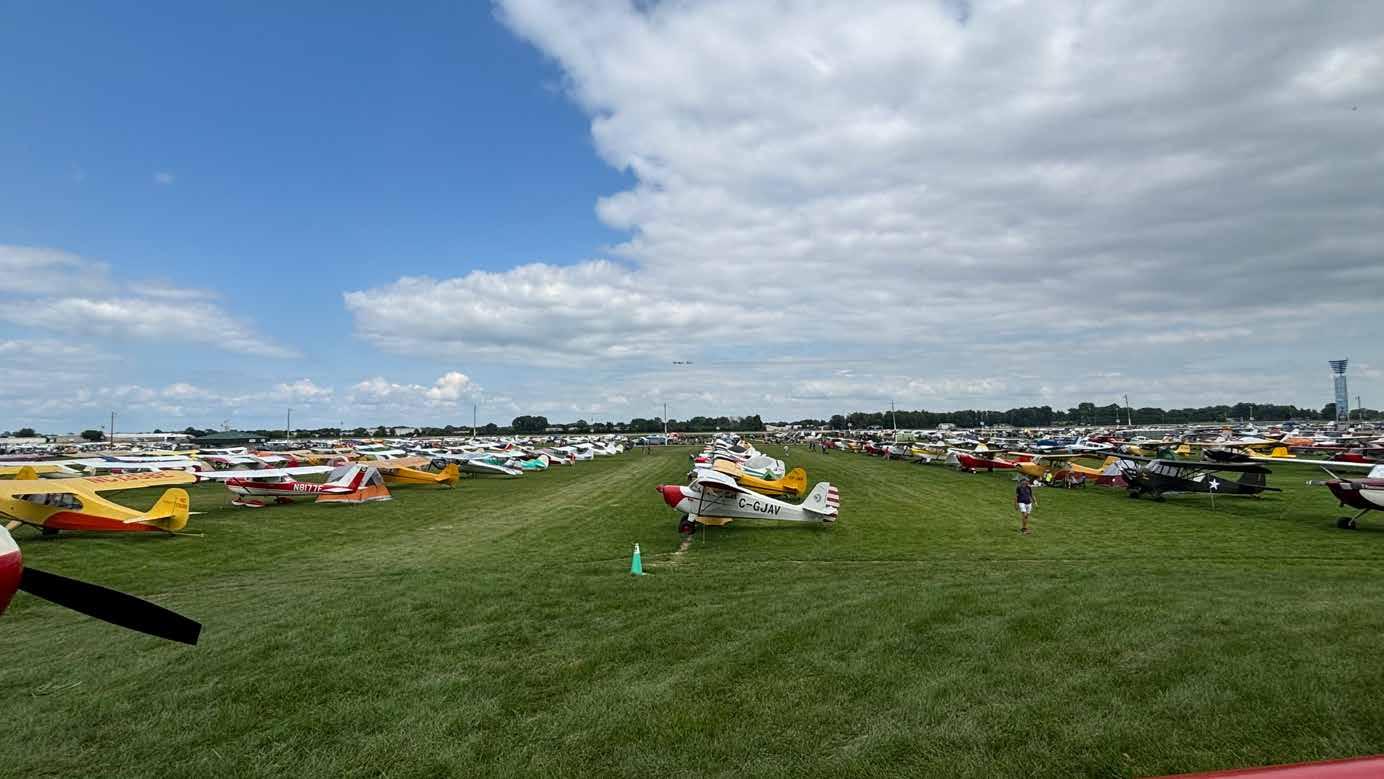
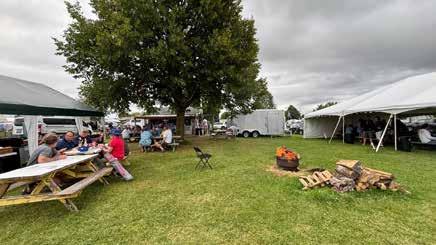
Day and night, the fun doesn’t stop!
Our catered camp site on the airfield means you won’t miss out on any of the activities – the early morning wake up call of P 51’s getting airborne, the evening ultralight parade, the STOL competitions and of course, the incredible night airshows! Plus all the camaraderie and fun only a camping group can offer.


Our campsite offers you a home from home at Oshkosh, tents and bedding, meals and beverages, charging facilities and sheltered seating – no camping gear required, bring only your clothes!
Tours depart Johannesburg, Durban or Cape Town Friday 18th July and return Tuesday 29th July 2024.
Prices from R40 650, Early Bird specials available!
Neil +27 84 674 5674 info@airadventure.co.za www.airadventure.co.za Secure your place HERE



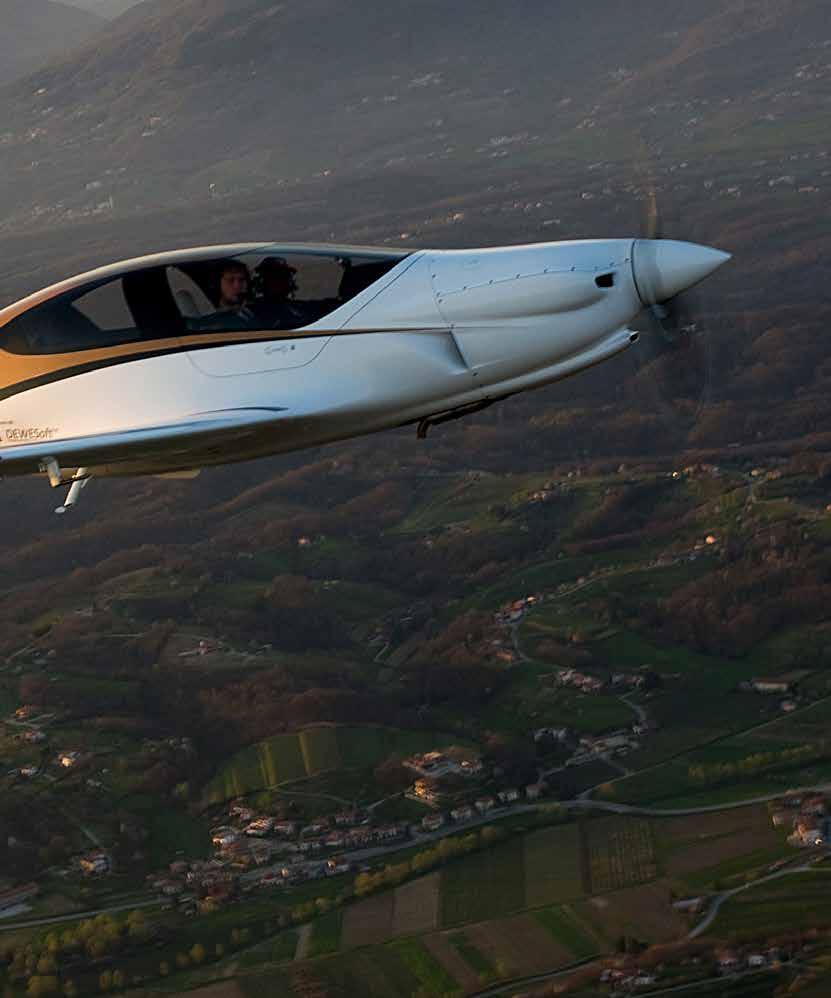
One of the world’s most eagerly awaited piston single engine aircraft designs has finally arrived in South Africa. ZU-KTR is a long awaited Panthera, proudly owned by Bertus Kritzinger, a Free State trucker, and based at New Tempe in Bloemfontein.
PIPISTREL have won many prizes for efficient planes and so the Panthera generated much excitement when it was announced at Aero Friedrichshafen in 2012. If it had been any other company, the claims would have been laughable.
The key claim was that the Panthera was going to manage, “four seats, 200 knots and 1,000 nm.” These were the magic numbers Pipistrel CEO Ivo Boscarol set as a challenge for his engineers in 2007. This was taken to mean a 200 knot cruise – on just 210 hp. Considering that the sleek Piper Comanche 400 cannot do that on 400 hp, many observers just quietly shook their heads and adopted a wait and see approach to the Slovenian plane builder’s aims.
Time passed and it seemed that Pipistrel were indeed having problems making their numbers come true when Panthera development was moved to a back burner. Then it was quietly announced that the engine had been increased from the original’s 210 hp to 260hp.
So the big question is – has Pipistrel managed to nonetheless create a 200 knot speedster that can comfortably seat 4 for 1000 nm?
Founded in Slovenia by the charismatic and brilliant Ivo Boscarol in 1989, Pipistrel has always been committed to efficient aircraft. Significantly he has now certified the first electric trainer, the Velis Electro, built on the uniquely named Pipistrel Virus base.
After the Panthera’s launch in 2012 things went quiet. “The main reason it was held up was because Pipistrel was contracted by several governments, including the U.S. government, to convert their two-seat airplanes into unmanned aerial systems for surveillance use by the military,” the company said in a later announcement.
The Panthera was designed from the outset to have not just one – but three, different engine options: an all-electric version, an
SA FLYER MAGAZINE -June 2025
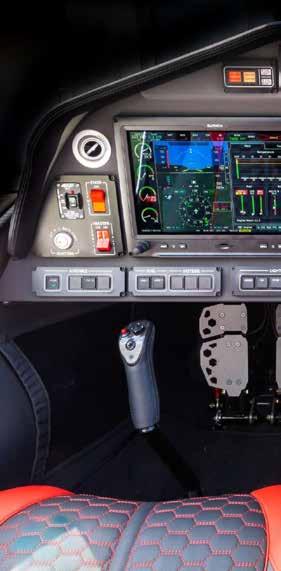
electric hybrid and a conventional internal combustion engine (ICE). Perhaps unsurprisingly so far only the ICE version has made it to market. However, in 2016 a Panthera mock-up received a hybrid-electric engine, being powered by either a 200-kW electric motor driven by batteries only, as well as by a 100-kW generator-only, and by both combined. In October 2021 Pipistrel announced that the hybrid version had completed the first phase of its flight test programme.
Pipistrel had originally

specified the IO-390 because of its good power-to-weight ratio and because it could burn Mogas (car petrol) . Except, in the end it couldn’t, as Lycoming said that the IO-390’s 8.9:1 compression ratio was too high for Mogas. So Pipistrel switched to the 260-HP IO-540-A5V4, which does allow Mogas. The extra 50 hp no doubt helped with the elusive top speed goals.
The IO-540 weighs about 100 pounds more and is longer. Pipistrel addressed the centre of gravity by adding additional length to the rear airframe. The extra power also helped with high density altitude operations. The max all up weight was increased by 210 lb to make up for the extra weight of the engine.
At the time of the engine change, Tine Tomažič, the Director of Engineering, said, “A lot of this decision was made because customers want good hot and high performance. We have lots of people coming from South Africa, from Argentina, from Mexico, from Colorado, places that would otherwise demand a turbocharger solution. But instead of going to a turbocharged four-cylinder, we decided to go for a normally aspirated six for maintenance and operational simplicity,’ he said.
The Panthera is the low-slung sportscar of the air. Its commitment to a low profile is reminiscent of the iconic Ford GT40, which was only 40 inches high. To get this low, sleek look, the canopy is not far from horizontal and, like a glider, needs

to be kept spotlessly clean if it is to be properly transparent, with minimal distortion.
Composite construction may be sleek, but it’s not necessarily lightweight. The 260 hp Panthera is now a 2,900 lb MAUW plane with a useful load of about 1,100 lbs. That makes it comparable with the Mooney Acclaim and 240 pounds lighter than recent Cirrus models – and even about 130 pounds lighter than the Diamond DA50.
Interestingly Tomazic said, “Fuel capacity remains the same, 220 litres (58 USG) because for the given mission, the airplane will not consume
more fuel. We are targeting the same cruise speed of 200 knots true and the same 10.5 gph.”
Dimensionally, the Panthera is the same length as the Cirrus SR22, but the wingspan is almost three feet shorter. And even with its tall T-tail, the Panthera is nearly a foot shorter than the Cirrus. Notably, the cockpit is low and wide, but at 47 inches, still narrower than the Cirrus’s 49 inches. Once seated inside, the limited headroom makes it feel tighter than an SR22.
The cabin has two large gullwing doors on either side, and, for the rear occupants, an even larger gullwing hatch, similar to Diamond’s DA40. It’s surprisingly easy to step down into both the front and back seats.
Gullwing doors did not become popular because they let the rain in, and if the plane is lying on its back, may be impossible to open. Yet accident reports suggest that occupants being trapped after a crash doesn’t appear to be a real problem. Either planes don’t flip much or, if they do, survivors manage to get out okay. Further, the Panthera’s rear hatch doubles as an emergency exit – a glasscutting hammer is provided. Gullwing doors opening in flight is another concern, because the door is likely to be ripped off and hit the tail. Pipistrel has addressed that with a robust closing mechanism that uses an over-centre lock.
Unlike the Cirrus, which has a long single-piece wing and thus has to be flown from the factory to South Africa, the Panthera has removable wings. The whole aircraft fits into a standard shipping container. Like composite gliders, the wings have overlapping spars that are mounted to the fuselage and each other with hefty steel pins with locks. Also like a glider, the controls use push rods for the ailerons and elevator.
Getting aboard requires stepping onto the wing. The flaps are about two-thirds of the span, so the wing walk area on both sides is protected with a solid surface.
The flaps and the gear are electric, driven by rods and tubes. The gear backup is a crank located in the centre console between the two front seats. It’s a pity they could not make a gravity free-fall system.
The Panthera has a whole-airframe parachute
as standard, but unlike the Cirrus, it is not required as a condition of certification, and so may not need expensive 10-year servicing.
Getting in is easy. From the wing you can step onto the cockpit floor and use a handgrip to lower yourself into the seat. But getting out requires considerable upper body strength to pull yourself up with one hand.
ZU-KTR has a two-display version of Garmin’s G3X Touch, driven by a GTN 750 with autopilot. While this provides plenty of capability, some buyers may view it as a step down from the G1000 NXi found in new Cirrus and Diamond models. Because of the Panthera’s smaller panel, the G1000NXi may not fit.
ZU-KTR does not have Garmin’s ESP envelope protection, even though it is available for the autopilot and is a planned addition. And while the NXi/GFC 700 in the Cirrus and Diamond may eventually get Garmin’s Autoland option, it’s not contemplated for the Panthera. ADS-B is via the
GTX 345 transponder.
There is a secondary battery to power an essential bus that includes the primary flight display and one of the two ADAHRS units. Additional backup is provided by a Mid-Continent SAM MD302, plus the Touch display has reversionary capability for primary attitude.
There’s plenty of space for maps, engine monitoring and the primary flight display. There is a clever sub-panel that shows the cabin air status. Push the test button and it shows the status of gear, flaps and fuel remaining as a percentage.
Taxi is smooth, thanks to the beefy trailing link gear. The bottom-hinged rudder pedals are comfortable to use and the Beringer toe-brakes effective. Thanks to a steerable nosewheel, taxiing is easy and accurate.
Having plenty of glass makes the cabin hot on a sunny day, however you can taxi with the gullwing doors open, and this provides more than enough cooling from the prop.
Unlike the Americans, the latest European designs have control sticks, which provide a more precise, uncompromised feedback.
Given that it was designed for speed – the question is how does it compare to its competitors? Its natural competitors are the similarly built-for-speed Mooney Ovation, the sleek Diamond DA50 RG, and the 315 hp Cirrus SR22.
Pipistrel elected to avoid the weight and com-

Upscale leather seats with textured surfaces and accent trim give the look of a highend sports car—maybe a Ferrari or Lamborghini.
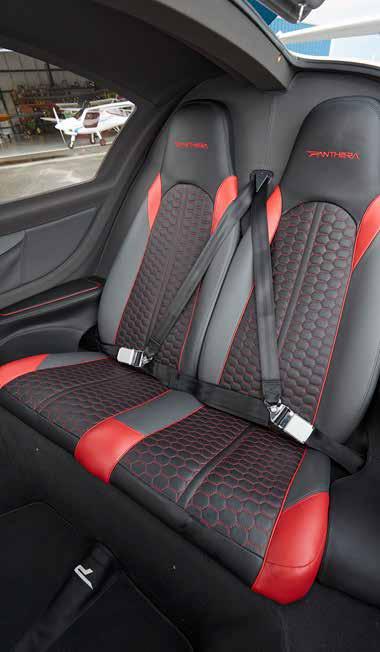
range is a generous 9 inches, so loading it out of limits takes effort. As a sample weight and balance, with 375 lbs in the front seats and 300 lbs of pax in the back and 100 lbs of bags, the plane is at gross and still within CofG.
The Panthera gets airborne at about 65 knots with a moderate but not over-light pitch force. During initial climb, the restricted forward visibility is no worse than over the nose of a Saratoga or 210. The Panthera climbs well, with, at best rate Vy, 1600 fpm available initially. A cruise climb at 130 knots still yields a 600 to 800 fpm climb.
It’s all about the cruise numbers. And impressively the Pipistrel beats its book figures. On a typically hot ISA +30 day, at 8000 feet, it delivered 184 knots true on 13 GPH at 65 percent power. At 55 percent, it cruised at 174 knots on about a gallon less.
The stall isn’t as benign as say a Diamond DA40. If held deep into the stall, it will drop a wing.
Pitch stability is lower than its competitors. If the nose is high and the stick released, the Panthera takes its time damping the phugoid. In a dive it almost reached Vne before heading back up.
plexity of a turbocharger and the Panthera is faster than the turbo Cirrus SR22T all the way to 18,000 feet. The Panthera is about 5-knots faster than the normally aspirated SR22 G6. However the 310 hp turbo Mooney Acclaim Ultra is still the fastest.
Pipistrel is not just about speed, it’s about efficiency. For this, the measure is how far a plane flies on a pound of fuel. Here the Panthera easily beats both Mooney models but with its turbocharged diesel, the Diamond DA50 RG is the efficiency champion.
The Panthera has about 1100 pounds of useful load and the CofG
Despite its super-slippery design, Pipistrel have not given it speed brakes. So it takes careful speed management and planning to get slowed to the relatively low 106-knot gear extension limit. (The Mooney Ovation is 140 knots.) Max flap speed is also a low 106 knots.
Seventy-five knots is the recommended across the fence
RIGHT:
Beautifully smooth composite wing worthy of a competition glider.
BELOW:
The ICE engine was originally 210 hp, but now upgraded to 260 hp IO-540 for Mogas use.



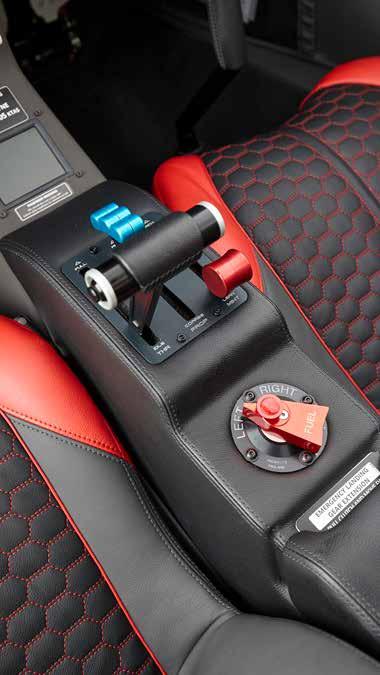

1: Rear-seaters also get own doors - cockpit may appear tight but has good legroom.
2: Fit and finish are good enough for high end sportscars.
3: Emergency gear extension hand crank, located in a compartment in the center console.
Vref speed The trailing-link main gear smooths out bad landings. Although the Panthera was never designed to be a STOL plane, a proficient pilot should easily manage a 2500-foot runway at light weights.
If you want responsive handling, efficiency and head turning styling, the Panthera is for you.
It carries a little more than a Mooney, but less than a Cirrus, and it’s faster than
both, including the SR22T at lower altitudes. It’s more efficient than both, but at the expense of a less spacious cabin than the Cirrus.
The Panthera promised a 200-knot plane that would be more efficient than anything else – and greener too, since it would eventually be offered in both pure electric and hybridelectric versions. What it has, at least for now, is a not-quite200-knot top speed plane with better efficiency than modern Mooneys, an adequate, albeit not capacious cabin,
and sporty, well-harmonised handling.
For more information
Contact: Sizwe ButheleziDirector - Sales and Marketing on email: sizwe.buthelezi@absolute. co.za or call + 27 063 779 9545.
Price (as tested): about Euro 850,000
Engine: Lycoming IO-540V-V4A5
Horsepower: 260 hp
Propeller: MT three-blade constant-speed composite
Seats: 4
Length: 26 ft. 6 in.
Cabin Width: 3 ft. 11 in.
Height: 7 ft. 2 in.
Wingspan: 35 ft. 8 in.
Max Ramp Weight: 2,900 lb.
Full Fuel Payload: 770 lb. as equipped
Power Loading: 11.15 lb./hp
Useful Load: 1,100 lb. as equipped
Max Usable Fuel: 54 gal. plus 40 gal. opt long-range tanks
Rate of Climb: 1,300 fpm at max gross weight
Maneuvering Speed: 143 kias
Fuel Burn: 13.6 gph at 75% power at 7,500 ft.
Stall Speed, Flaps Up: 60 kias
Takeoff Over 50 Ft. (ISA, sea level) 2,155 ft.
Max Operating Altitude: 25,000 ft.
Cruise Speed at 65% Power: 185 knots at 7,500 ft.
Never-Exceed Speed: 220 knots
Stall Speed, Full Flaps: 55 kias
Landing Over 50 Ft. Obs: (ISA, sea level) 1,130 ft


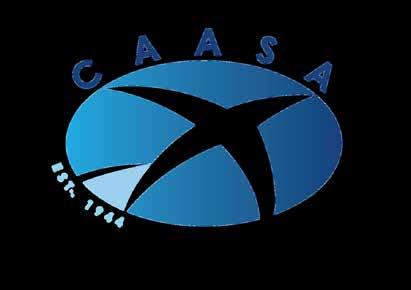
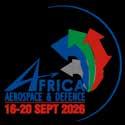






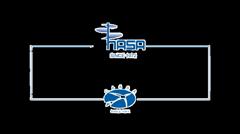

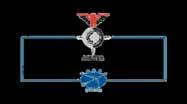


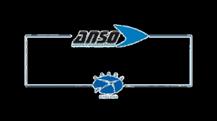



The Transportation Safety Board of Canada investigated this accident to advance safety – not to assign fault or determine liability.
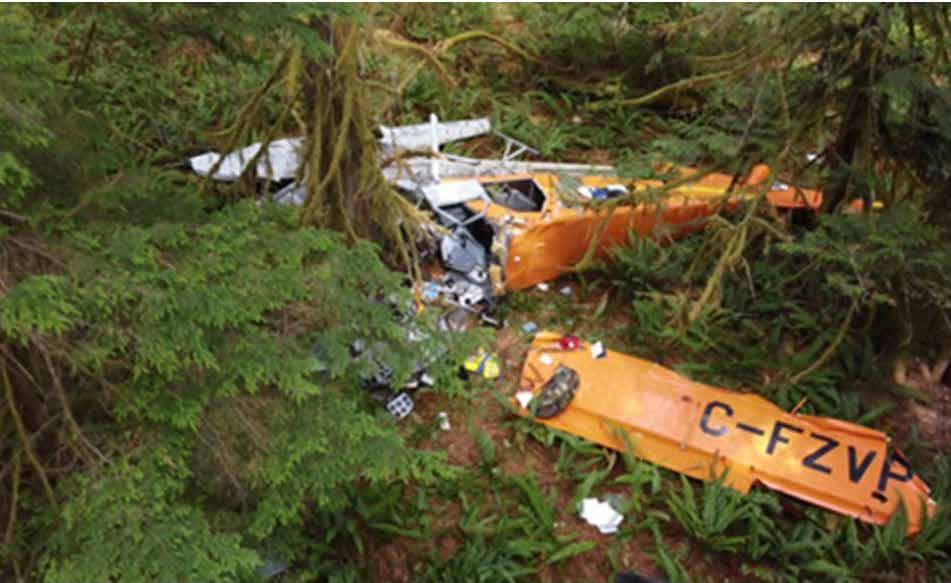
The Beaver stalled and crashed into trees.
10,000 hr PILOT
CANADIAN ACCIDENT REPORT - PRECIS AND ANALYSIS
AIRCRAFT: De Havilland DHC2 Mk.1 (Beaver), C-FZVP
SITE: Gold River Water, British Columbia
Date: 28 July 2023
The aircraft was doing a VFR repositioning flight from Louie Bay on Nootka Island, British Columbia (BC), to Gold River Water Aerodrome (CAU6), BC, with only the pilot on board.
On arrival the pilot noted a rough sea state in the company’s primary landing area and elected to land in the secondary area, a tree-lined river to the east of the base.
The aircraft was seen overflying the dock to the north and then turning right, aligning with the southwest direction of the river. When descending on the alignment turn to the final approach, the
aircraft experienced an uncommanded yaw and roll.
It abruptly turned further right, heading west, and continued to descend toward the trees. It was reported that opposite aileron input, to try and arrest the uncommanded yaw and roll, increased the roll rate.
At approximately 1720, the aircraft struck the forested area on the west side of the river. There was no post-impact fire. The pilot, who received serious injuries, was extracted by local firefighting personnel, and attended to by local paramedics. He was then airlifted to hospital by a search and rescue helicopter.
The pilot held a Canadian commercial pilot licence – aeroplane, endorsed for landplanes and seaplanes – and a valid Category 1 medical certificate; the licence and ratings were appropriate for the flight in accordance with the regulations.
He had over 10,000 hours in floatplane and coastal operations. There was no indication that his performance was affected by medical or physiological factors.
The aerodrome routine meteorological reports indicated favourable conditions for the flight and landing.
The coastal geography and features can complicate coastal weather forecasting. The location of the occurrence was on an inlet that can, for example, funnel the prevailing winds, increasing their speed well above the surrounding areas.
The bay is more than 10,000 feet long and over 5,000 feet wide at its midpoint.
When the sea state is undesirable, the operator’s recommendation for takeoff and landing is to use a secondary area – being the southwest portion of the Gold River mouth which provides about 1,700 feet of surface. This area may be shielded from the winds affecting the inlet, but the winds aloft are sometimes unpredictable.
The aircraft was manufactured in 1956. There were no recorded defects outstanding. The investigation determined that the weight and centre of gravity were within the limits. There was no indication that a component or system
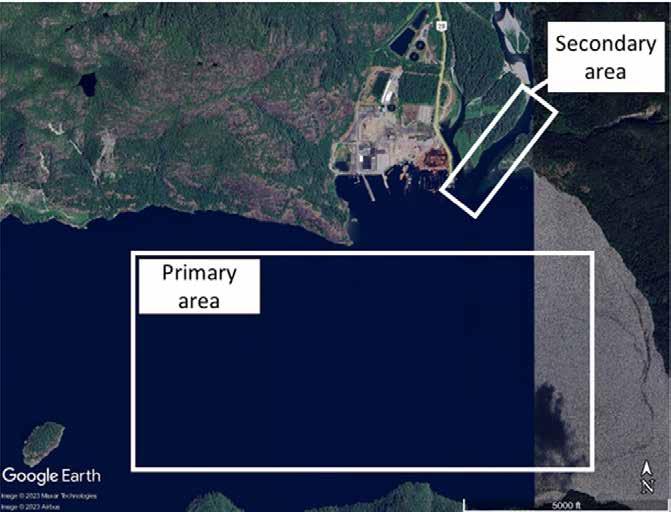
The two landing areas.
malfunction played a role in this occurrence.
The aircraft was not equipped with a stall warning system, nor was it required to be.
The aircraft was proceeding westbound when it struck the trees. Its right wing separated and lodged in a tree.
The aircraft continued into the wooded area while rolling to approximately 90° of bank before impacting a large tree and coming to rest. The damage to the aircraft and the wreckage trail were indicative of a steep angle of descent with low forward velocity, consistent with a stall.
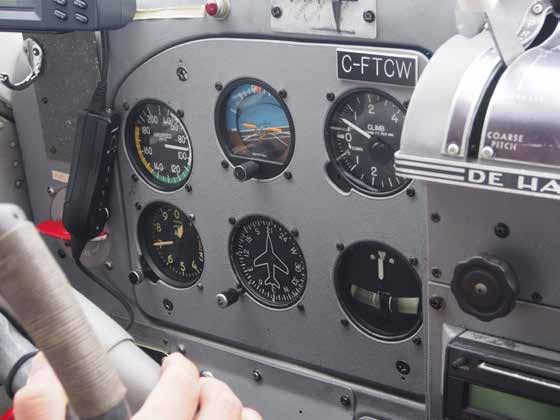
The Beaver has an unusual flap actuation system.
The 3-blade propeller was significantly damaged, with 1 blade being ejected from the propeller assembly. All blades showed chordwise scratches with bending patterns consistent with an engine producing power at the time of impact.
Flight controls and associated linkages were examined, and no indications of failure before impact were noted. There were no indications of a loss of control due to mechanical failure before impact.
A Spidertrack satellite-based flight tracking unit was aboard the aircraft and was functioning at the
time of the occurrence. However, the frequency of position reports was approximately once every 15 seconds and, therefore, it did not assist investigators in understanding the final seconds of the flight.
A Garmin GPSMAP 296 device was found, however the memory chip was too damaged to recover any data.
While on the right turn to final, the aircraft experienced an uncommanded yaw and roll. The
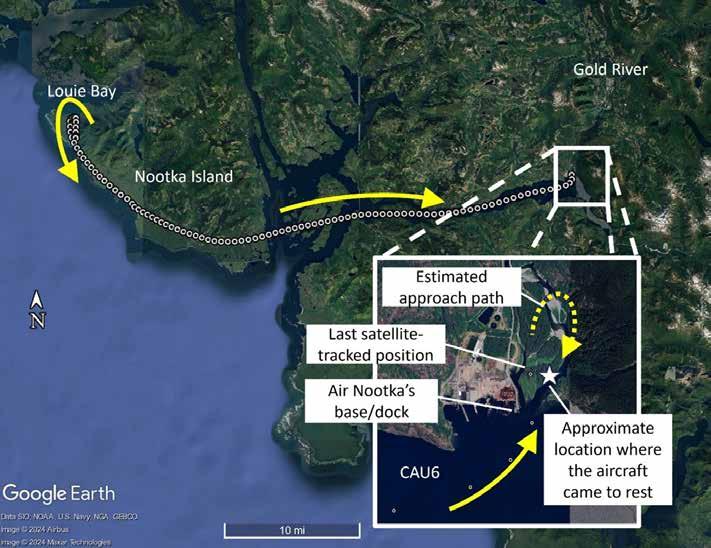
application of aileron in the opposite direction made the condition worse.
While stalls occur at a given angle of attack, they can happen at any speed.
The speed at which a stall occurs depends on several things, including the load factor, the weight of the aircraft and the centre of gravity.
The DHC-2 manual says, …the stall is gentle at all normal conditions of load and flap and may be anticipated by a slight vibration, which increases as flap is lowered. If yaw is permitted, the aircraft tends to roll. Prompt corrective action must be initiated to prevent the roll from developing [Jim's emphasis]. In tight turns, load factors may reach the limit, and may increase the danger of an unintentional stall.
Certification flight tests found that the buffeting near the stall was a clear and distinctive
stall warning. This was deemed to have met the design requirements, so no stall warning system was mandated.
Since 1998, the TSB has investigated 17 occurrences involving a De Havilland DHC-2 stalling and crashing, resulting in at least 38 fatalities.
The pilot was found inside the cockpit of the aircraft, with the lap strap and shoulder harness attached and buckled. The livable space within the cockpit was badly deformed, indicating high deceleration forces at impact.
Aircraft originally certified without stall warning systems can benefit from aftermarket systems.
When a pilot who has 10,000 hours on a simple aircraft crashes it with no sign of any mechanical failure, then one must look for things that were unusual, or things that took him by surprise.
For instance, a bird-strike at a critical stage of the approach could have done it – but there was no evidence of that.
Equally, the sun in the pilot’s eyes can be disastrous close to the ground. Let me sidetrack for a moment and tell you about that.
Some years ago Tommy Thomas, a fairly stroppy controller at Port Elizabeth, shat on me because I had apparently not taught my pupils to fly a square circuit. It seems that some were converging on ‘his’ runway during the downwind leg while others were actually diverging.
He demanded that they desist from this reprehensible behaviour immediately, otherwise he would report me to head office, and there was no telling what they might do to me.
My explanation that they had the sun in their eyes, simply didn’t wash. Surely I had taught my pupils to take the average of the swinging compass disk and reset the directional gyro? Actually no I hadn’t, these were people practicing landings – resetting gyros to compasses was a skill they had yet to acquire.
So I asked Tommy if he would like to do a circuit in my Cherokee. He had apparently flown before, so he twiddled his RAF moustache and declared that he would love to get his hands on the old stick and rudder again, don’t you know?
It turned out that on the downwind leg he hadn’t a clue where the airfield had disappeared to – let alone his precious 08/26. He bought me a beer in the club that evening and we were the best of friends for ever more.
Good viz is the key to a long and happy life. I won’t fly an aircraft with a dirty windscreen – in my book it’s unserviceable. Was this a factor here? I don’t know, but something caused the pilot to tighten his turn and run out of airspeed just above the trees.
So what did cause the accident?
The Transportation Safety Board of Canada doesn’t want to stick its scrawny neck out – which is not much help if they are trying to spread the safety message. So I will take two, hopefully educated, guesses. Even a 10,000 hour pilot is not immune from using too much rudder in the turn on to final approach. This is something the gentle Beaver really doesn’t like at low speed. It drops the wing and needs a lot of opposite hoof to prevent a spin. However, the report says he used opposite aileron. This is unbelievable for a pilot of his experience. It undoubtedly turned a bad situation into a crash.
I also suspect the problem may have been aggravated by the aircraft’s curious flap operating system.
There’s a handle that you either move into the UP or DOWN position – depending on where you expect to need the flaps next. You then grab a – bigger lever between the seats – like a Cherokee or Cessna flap handle – and pump that up and down to pressurise the system and move the flaps in that preset direction.
Do you see the problem? If you have forgotten which way you previously set the selector then you can actually retract the flaps when you expect to have more.
This could have happened when the pilot was fighting the turbulence, when he needed more lift, he accidentally dumped the flaps.
I’m surprised the investigation didn’t consider that.
Experience is no guarantee of safety if it causes complacency.

Continental® Jet-A retrofit kits have landed. Three crates with hundreds of benefits. From lower operational costs to significantly reduced CO2 emissions and reduced pilot workload. Whether you want newer technology, easier or greener flying, or just want a simple way to save, talk to Continental® and unpack the positives of Jet-A.
The numbers speak for themselves.
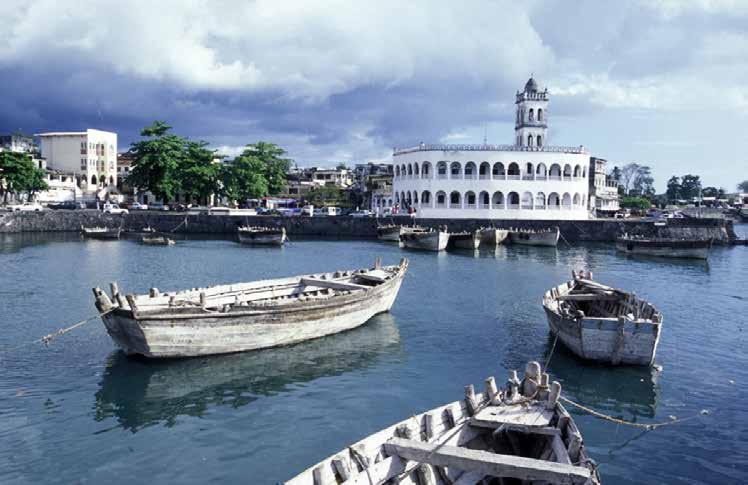
Moroni, the capital city of the Comoros in the Indian Ocean. Having recently flown Prime Minister Pierre Trudeau and his party to stay with Adnan Khashoggi at his Ranch, Ol Pejeta, I was asked to fly the Ambassador from Oman, His Excellency Mushtaq Abdullah Jaffer CDA, and his Second Secretary, Issa Ahmed Ali Moosa, to the Comoros, landing on Grand Comoro, Moroni Airport.
WE were to fly in my now trusted Piper Aztec Turbo 5Y-WKA.
Some serious Flight planning had to be done as to what was the best, shortest and safest route to get to Moroni. We did not have GPS at the time and obviously no navigation aids to help get you there. Just your compass heading and watch.
when you need to? It is not as if I knew any pilots who practiced ditching as a safety measure. The advice I was given was to land (!) parallel to the waves or swells to minimize impact. Read the Pilots Operating Handbook for your aircraft on ditching!
The Comoros archipelago consists of four main islands: Granda Comoro (Ngazidja), Anjouan (Nzwani),Moheli (Mwali), Mayotte (Mahore). They are all administered by France. They are northwest of Madagascar, between Mozambique and the northern tip of Madagascar in the Madagascar Channel.
The Comoros Islands got their name from early Arab Seafarers who named the archipelago Djazair al Qamar - Islands of the Moon. Qamar became Comores in French and SA FLYER MAGAZINE -June 2025
Long and serious conversations were had with experienced pilots like Dave Leonard and Dicky Bird. We had a dinghy on board, but that was a psychological plaster. If you had to end up ditching in the ocean, you were probably on your way to the bottom before you could get your dinghy out of the aircraft and afloat. The other matter was, how do you ditch
Comoros in English.
We were breaking up the journey by spending a night in Mombasa and a night in Moroni. We took off from Wilson on 27th October 1981 at 1100Z (1400 local Kenya time) and arrived at Mombasa 1245Z. My charming passengers were duly collected and taken to the Nyali Beach Hotel where I was to join them after checking and refuelling the aircraft. I remember we had a 7-hour endurance on the Turbo Aztec and I made sure that all the fuel tanks were completely topped with Avgas.
We took off from Mombasa at 0430Z (0730 Kenya time) and turned right, following the coastline south towards Tanzania. My IFR flight plan
climbing to FL 110 was to keep close to the coast of East Africa until I came upon Mtwara, which is just before the Tanzania & Moçambique border. I would
True Air Speed for flight planning was 180 Knots, so an hour and ten minutes from Mtwara we should see Moroni. This was the shortest route from the Mainland to Moroni Grand Comoros. (If I had chosen to turn left from Dar es Salaam, I would have 672 nm of ocean to fly over).
then turn slightly left to a heading 120 degrees and the last 200 nautical miles would be across the ocean, leaving mainland Africa behind me. My
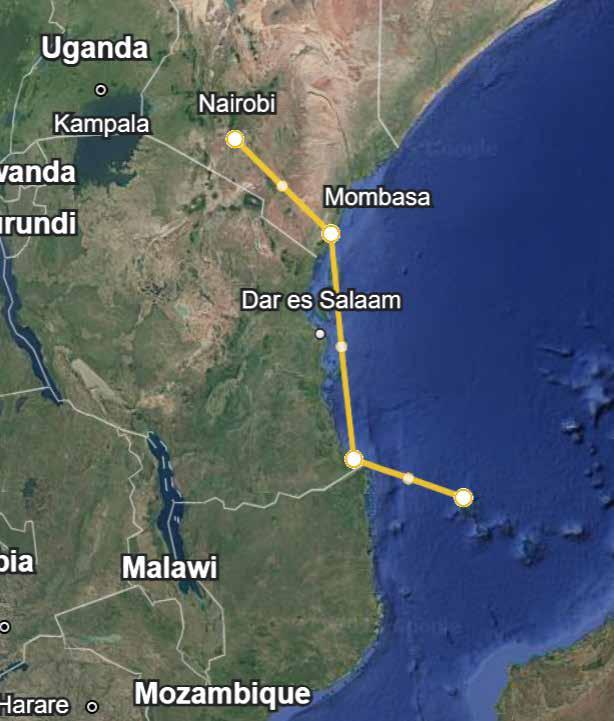
Iris's route from Nairobi to the Comoros.
My passengers were a joy. They were both true gentlemen with impeccable manners. You always bond with your passengers when your first landing with them is a good one. An evening spent in one another’s company getting to know each other. I addressed the Ambassador as your Excellency and the Second Secretary as Sir. The Ambassa-
dor was the shortest of the two and he chose to sit by himself right in the back (third row) and the Second Secretary was a very tall man, well over 6 foot and he sat behind me in the second row of the aircraft configuration. They could move around and look through either side of their windows. Over the years having met a few Diplomats and aristocrats, I am always impressed by their grace and how they put people like me at immediate ease.
After about two hours into the flight, I felt the passengers moving about in the aircraft and holding a serious and agitated conversation. I asked what the problem was and the Second Secretary said that his Excellency needed to have a pee. As there was no toilet on board, did I have a suggestion to ease his discomfort?
AtMAPt,turnleft
ABOVE: The Moroni Approach plate.
This brought to mind a story from the Professional Hunter Robin Hurt who was on a charter flight, much like ours, with his client Prince Radziwill who was married to Jacquie Onassis’s sister. The pilot at that time offered an empty Coca Cola bottle to the prince as something to urinate into. Well, that was not well received but they had to make a plan with it as nothing else was offered. I suggested that he use our sick bags, they were well lined and waterproof. He could use as many as he
needed. They also sealed very well. Very acceptable plan.
Overhead Mtwara, I turned left and called them up on 118.1 and advised them that I was now heading out to sea. We had been flying for nearly two and half hours. I fixed my heading 120, wrote down the exact time I was overhead and said goodbye to Africa.
Pilots always talk about PNT (Point of No Return) when one does a trip like this. You go past your PNT because all is well. As the pilot you become very attuned
to your aircraft and your eyes are peeled for the first glimpse of any land ahead of you, and hoping that you won’t be like Amelia Earhart, who had the misfortune of bad visibility and never found her island. I had beautiful weather that morning.
How would I know there is land ahead of me, even a small Archipelago like the Comoros? I was told to look for clouds on the horizon. Moroni had an active volcano, Mt. Kharthala standing at 7746 feet which should create clouds.
I also looked at the ocean, trying to figure out how the waves and swell were in case of “In the unlikely event”. Your whole body gets switched on by a new energy until you actually see, after about 50 minutes of flying, clouds forming in the distance. Looking behind me, both men were comfortably asleep in their chosen seats.
I called Moroni tower and was very happy to hear them. I was also getting an indication on my VOR, 114.7 HAI giving out a reasonable signal to show that it was straight ahead. Twenty minutes before my ETA, I requested a descent clearance, I was cleared down to FL8000. The elevation was 64 feet, so a long slow descent was preferable for our eardrums, due to the cabin not being pressurised. We were blessed by good weather and I was able to continue down and requested a visual approach straight in on Runway 20.
Landing time was 0810Z (1110 Local). The whole flight time from Mombasa to Moroni was 3 hours and 42 minutes. It would be good to stretch those legs.j
We elevate the ar t of aviation design to new heights. Our innovative approach blends cutting- edge technology with timeless elegance, transforming aircraf t into personalized sanc tuaries of comfor t and style. From bespoke seating & advanced cabin layouts to exquisite liveries, we craf t ever y detail to ensure your journey is as ex traordinar y as your destination.

Liver y Design

Photorealistic 3D previews
Photography





Bespoke Aircraf t Completions


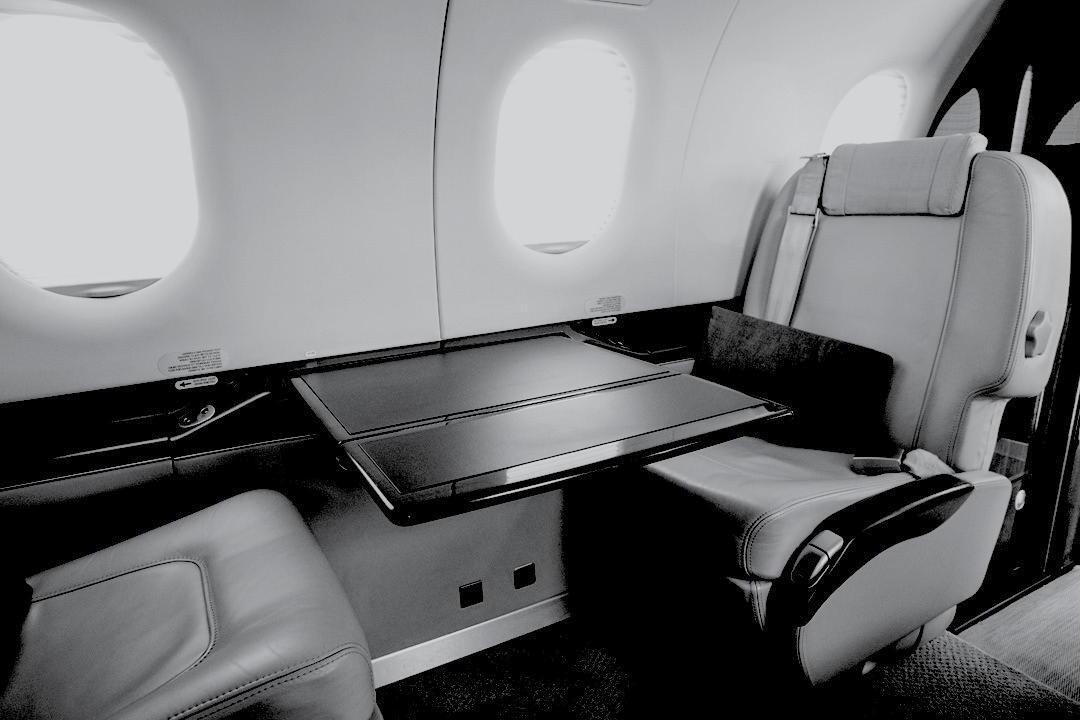

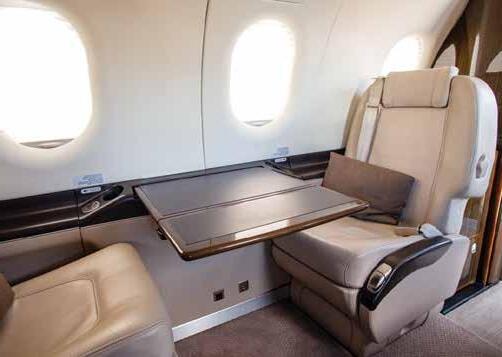

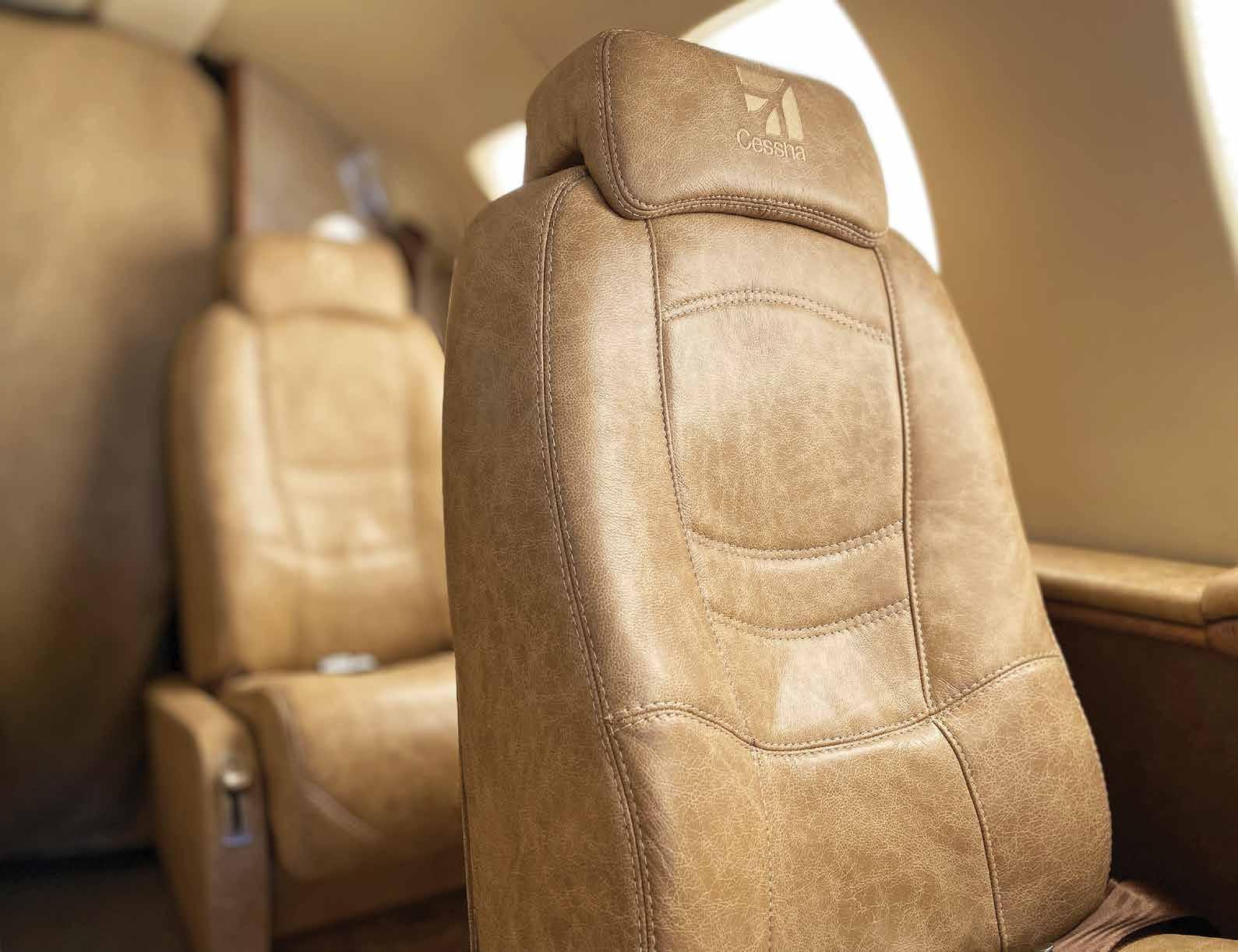






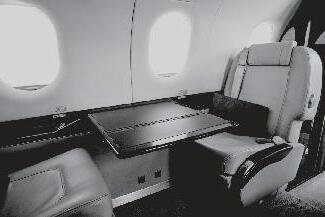




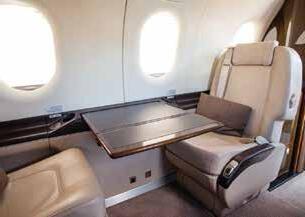













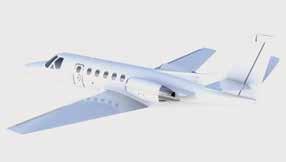




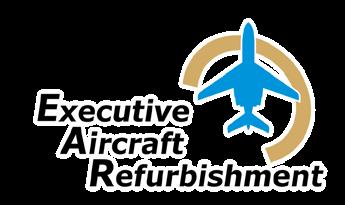
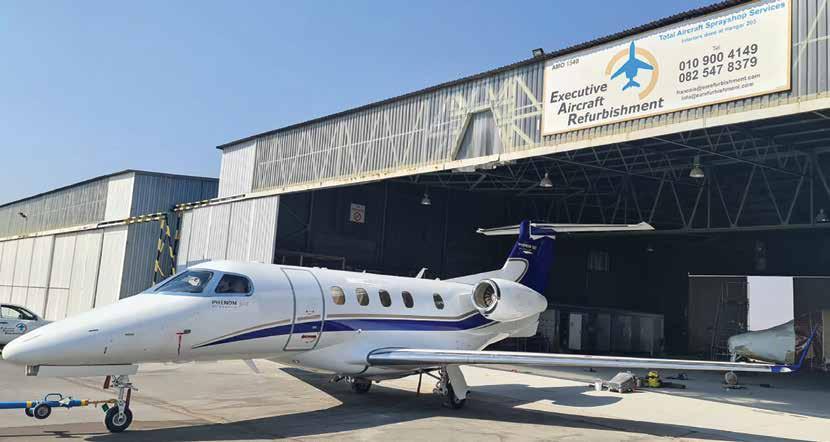
21/June/2025 Potchefstroom Airshow
08/June/2025 Maputo Air show
16-22 June 2025 Paris Air Show Paris-Le Bourget https://www.siae.fr/en/
18-22 June 2026
Carnival Air show Virginia
25 -27 June 2025 AERO South Africa Wonderboom https://aerosouthafrica.za.messefrankfurt.com/pretoria/ en.html
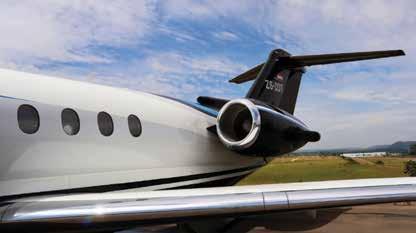
28/June/2025 Virginia Air Show Virginia Airport Durban
18 - 22 July
12 July
25/July/2025
Royal International Air Tattoo Fairford UK https://www.airtattoo.com/
Piertrmarizburg Air show
Polokwane Airshow
21 - 27 July 2025 EAA AirVenture Oshkosh
02/August/2025 Wonderboom Air Show
09/August/2025 Bethlehem Airshow
30/August/2025 Botswana Airshow Francistown
20/September/2025 Rand Airshow
Polokwane Limpopo
Contact Neil Bowden: 084 674 5674 info@airadventure. co.za
Rand Airport Germiston 27/September/2025
04/October/2025
01/November/2025
Polokwane Airshow
Krugersdorp Air how
Newcastle Airshow
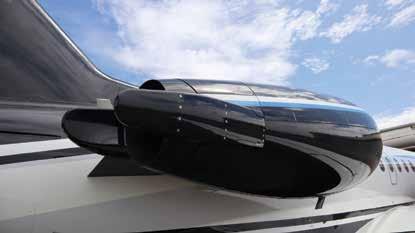
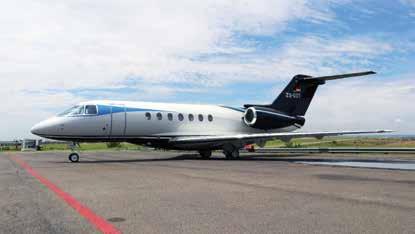
17-21 November 2025 Dubai Airshow UAE https://www.dubaiairshow.aero/ 07/December/2025 ICAD Airshow
25 July 2025 Polokwane Airshow
21 - 27 July 2025 EAA AirVenture Oshkosh
Polokwane Limpopo
Contact Neil Bowden: 084 674 5674 info@airadventure. co.za
20 September 2025 Rand Airshow Rand Airport Germiston 17 - 21 November 2025 Dubai Airshow UAE https://www.dubaiairshow.aero/
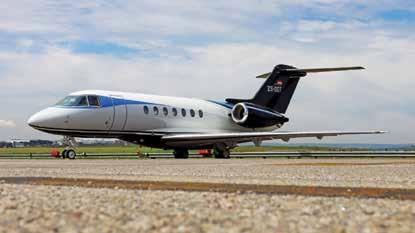



We were headed over the looming Drakensberg escarpment for the EAA Chapter 1502 gathering at Baynesfield Airfield, and decided to make the most of the long weekend with a couple of days in the Drakensberg. But there were questions about the weather.
ICHECKED the weather apps on my phone for the umpteenth time that day — toggling between Krugersdorp, Harrismith, and Himeville. After a process of elimination I settled on Windy as the most trustworthy app — it wasn’t showing bright yellow suns (when a frontal system was clearly moving in) nor an endless parade of dripping clouds. Instead, it painted a promising picture from Krugersdorp’s Jack Taylor to Aero Farm, although the trailing edge of the front still lingered, clouds clinging stubbornly to the mountains like a baby baboon to its mother’s back.
Whichever way I looked at it, there would be inclement weather somewhere. The only thing to do was pick a day and fly the plan.
We lifted off from Jack Taylor around lunchtime on Friday and headed south, passing over the Vaal Dam — bursting its banks, the complete opposite of six months prior, when it was a shrivelled puddle sitting at 17%. Not for the first time, I mused at how reliant we are on this body of water which was essentially the lifeblood of Gauteng — and how inconveniently perched on a ridge Johannesburg is.
Images: Laura M c Dermid
An hour and a half later, we reached AeroFarm in Harrismith,
where the orange windsock snapped and strained, stretched taut at 90 degrees to the runway. I silently thanked HMS Krugersdorp for all the crosswind practice and put the Pioneer down smoothly on runway 36 in the 20 kt wind.
We topped up with mogas, stretched our legs, and called Bryan Berkeljon in Himeville, who confirmed clear skies overhead.
As we flew down from the escarpment, I could see the mountains corralling the clouds, just as Windy had shown. Bryan was confident there’d be a path through, but the closer we got, the thicker the clouds grew.
To get a better view of what lay below, Stuart climbed to 11,000 feet and although we could see pockets of sunlight illuminating distant peaks and valleys, we couldn’t be sure how far we’d have to fly over solid cloud or whether we’d even make it before it closed.
Our recently renewed EasyCockpit app, bundled with EasyWeather, confirmed that it was better not to chance it.
The sun was setting fast as we made the call to head back to Harrismith — our plan B all along.
The wind had calmed by the time we landed. Gareth Pollock, the airfield manager, was away in Cape Town with his young family, but his parents, Peter and Mandy, welcomed us warmly.
They made space in a hangar for ZU-MJB and handed us the key to the flatlet adjoining the offices.
Accustomed to more basic airfield digs, we were blown away by the comfort that awaited us. While I soaked my weary bones in a hot bath, Stuart lit a fire in the cast-iron fireplace.
Dinner was an emergency stash of two-minute noodles, tuna, and wine; but nestled on the plush couch in front of the telly, with the fire’s warmth

enveloping us, we couldn’t have asked for more.
Next morning, the airfield was VFR, but the clouds still hung low over the escarpment, right on cue as per Windy.
With no choice but to wait, we borrowed a car from Peter and drove to Berg View for breakfast. By the time we returned, the FAKR gang had arrived and were enjoying coffee and rusks in the clubhouse while Peter helped refuel aircraft, offering avgas or mogas.
The cloud base slowly lifted, and by 13h00 we had a gap — just enough for a short hop over Spioenkop Dam to Glenside Airstrip, where we stopped for a bite at the Waffle Hut across the road.
With our sweet tooths satisfied, we continued over the lower reaches of the Drakensberg, skirting Giant’s Castle, until the picturesque village of Himeville came into view — home to Himeville Airfield. We flew straight in on runway 22, touching
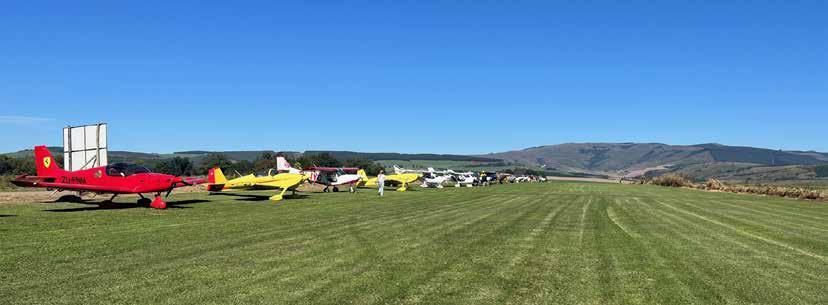


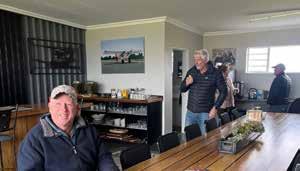



1: Peter and Mandy Pollock, owners of Aero Farm with Laura McDermid.
2: The meeting in the Baynesfield Clubhouse was well attended.
3: Sean Cronin enjoying coffee and rusks in the clubhouse at Aero Farm.
4: Aero Farm Airfield in Harrismith.
5: The cloud was solid over the Drakensberg.
6: A privilege viewing the Drakensberg from the air.
down gently on the 800m grass strip which was as smooth as a bowling green.
The EAA Chapter 1502 team greeted us warmly, making us feel instantly welcome at their beautifully maintained airfield.
Stuart and I had booked into Scott and Lesley Williams’ Meadow Lane Country Cottages, a beautiful 13-hectare farm in Underberg, a scenic fifteen-minute drive from Himeville.
Once again, Natalian hospitality shone through: Bryan had even arranged a farm bakkie for us to use.
That evening, we revelled in each other’s company by a roaring log fire, enjoying a glass (or five) of wine, while Kevin from Karmichael Farm laid on a hearty dinner of butternut soup and butter chicken.
The next morning, we gathered at Himeville airstrip at 08h00 to depart for Baynesfield.
As the mist lifted, it revealed an autumn tapestry of russet and gold; the air was crisp and still — textbook flying weather.
The twenty-minute hop was like gliding over glass,
leading us to the emerald fields of Baynesfield, already bustling with around thirty aircraft.
On the ground, we were greeted by the irresistible aroma of bacon and burger patties courtesy of the Chapter 1502 crew.
It was heartening to see how many local pilots had flown in, and there was a keen eagerness to get the meeting underway.
Unfortunately, Eugene Couzyn’s Alouette III wasn’t in the mood to fly that morning. Stepping up without hesitation, Chapter 1502 chairman and owner of Berg Aero Works, Jayson van Schalkwyk, gallantly took off in his Bearhawk to fetch Marie Reddy and Eugene — though it meant missing the talk by EAA 322 chairman Neil Bowden.
We departed Baynesfield at 11h30, following the N3 up the escarpment to Aero Farm where we refuelled.
I was unable to get above the clouds on the flight to FAKR, so we endured a bumpy flight all the way back.
The essence of recreational aviation lies in seizing opportunities as they come and embracing the sheer thrill of flight.
Over three days, we had the privilege of

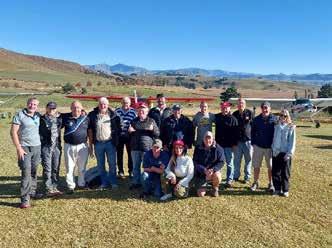
viewing one of South Africa’s national treasures from the air. It was a journey that reminded us why we fly — not just to reach a destination, but to savour the adventure, the camaraderie, and the boundless freedom our big skies have to offer.
Aero Farm: Gareth Pollock 082 497 0773
Meadow Lane Country Cottages: Lesley Williams 082 568 5243
Berg Aero Works (Himeville Airfield): Jayson van Schalkwyk 082 322 5722
Karmichael Farm: info@karmichaelfarm.co.za






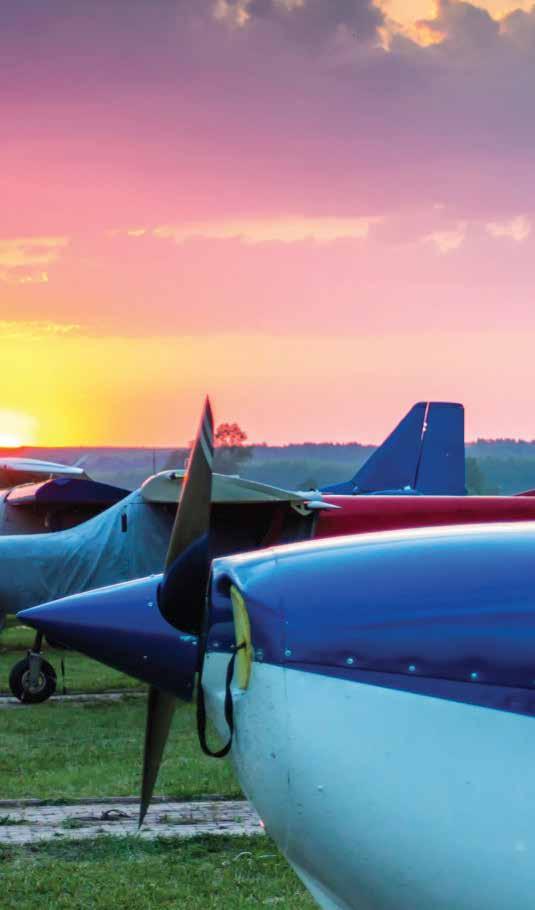









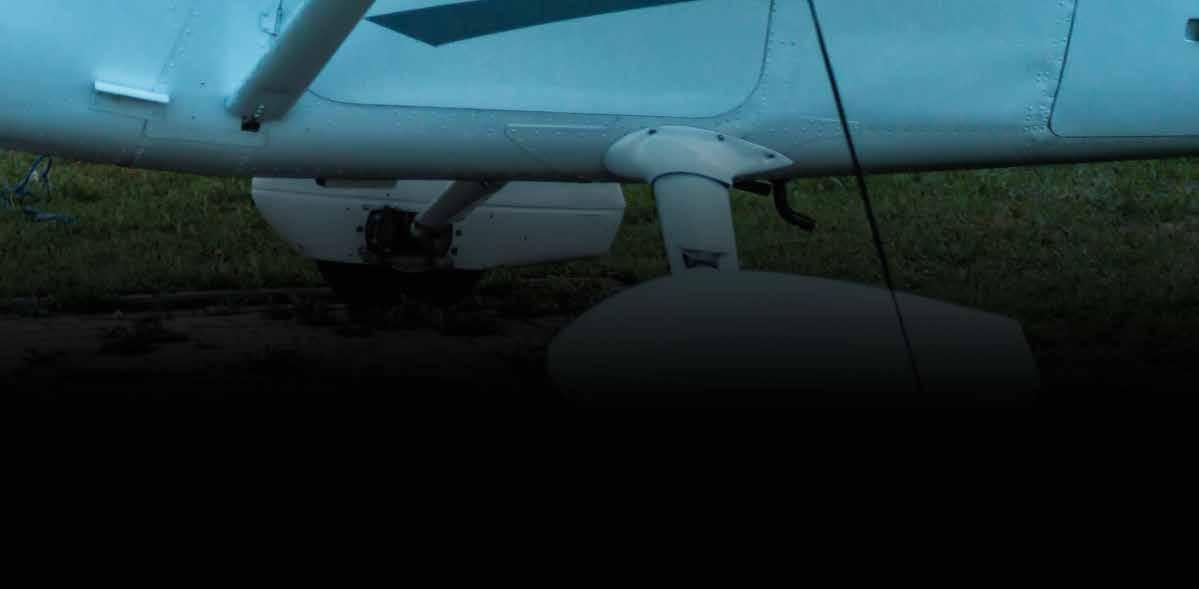











Warren Eva is the kind of aviator who brings as much passion to the sky as he does to the summits of the world’s highest mountains.
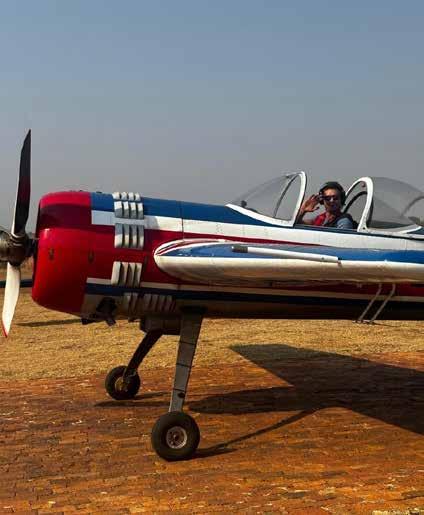
Yak-55.
BORN and raised in Benoni, he still calls it home 43 years on. His life is grounded in aviation and elevated by adventure — a perfect balance between throttle and altitude, both in the cockpit and on the slopes of his beloved mountains.
Warren is most at home upside down — quite literally. He flies in the advanced class in a Yak-55M based at Kitty Hawk (FAKT) and also drops skydivers from an Atlas Angel for The Ranch Skydiving Club out in Delmas. His two favourite things to say in aviation? “Taking off, left out into the box,” and “Caution below.” Both signal that something exciting — “something cool” — is about to happen.
Warren’s story began humbly, pumping fuel at Springs Airfield as a 15-year-old for the Harvard Club of SA and East Rand Flying Club. It was his mom who got him the job, knowing her son’s love for anything with wings. He saved every cent, started building hours at 16, and had his PPL before he was legally allowed to drive.
Though he never pursued flying commercially, Warren is now considering a shift. He instructs aerobatics and finds immense satisfaction in sharing the nuances of energy management and precision flying.
In the early days Warren flew a weight-shift trike - still owned but rarely flown - an affordable way of flying back then. He credits those early days for shaping him into the pilot he is today.
“When you fly the trike, the difference is that you’re actively flying the wing. You feel the wind. It sharpens everything.”
However, he was adamant that the next plane he got had to be able to fly upside down.
Warren is a mechanical engineer by training and trade, servicing the mining and water treatment sectors. For years, while building his business, there were times when he could only manage the bare minimum of six hours of flying a year. His return to the skies was via a quarter-share in a Yak-52, where his aerobatic journey began — and he’s never looked back.
Warren competes in sports aerobatics and serves as chairman of Sports Aerobatics SA because, “someone has to be Chairman” though it’s clear his leadership is more calling than obligation.
He has done many displays but his heart lies in mentoring and guiding new aerobatic pilots as they rise through the ranks — from graduate level to the sportsman’s class and beyond.
He is currently flying at the Advanced level and has his sights set on the Unlimited Class. Access to a cutting edge aerobatic plane is the current barrier — “but I’ll get there one way or another,” he says, with confidence born from determination.
His life outside aviation is equally intense — and vertical. Growing up with outdoorsy parents, Warren was hiking and camping from an early age. Through Boy Scouts he met his longtime climbing partner John Black, and in 2000 the two tackled Kilimanjaro, following which they attempted Mount Kenya. Their first attempt was unsuccessful which he attributes to being young and
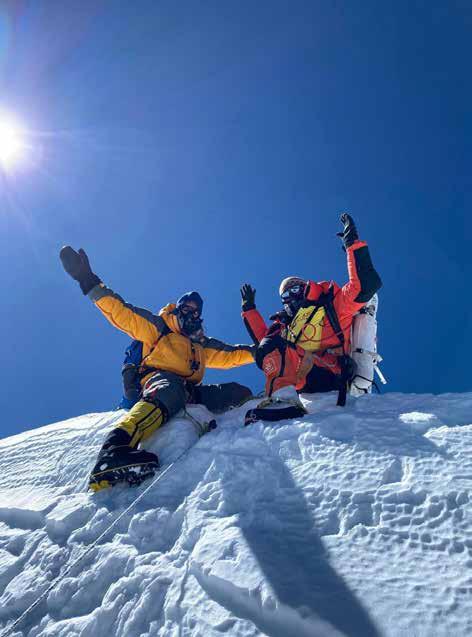
Warren Eva and Kaji Sherpa above 8000m on the peak of Annapurna.
green and admits to getting their “butts kicked”. It was an important learning experience which led them to summit both Bation and Nelion when next they next attempted Mount Kenya.
The mountaineering bug bit hard, and 25 years later, the duo have summited mountains on all seven continents, including the formidable K2.
Climbing K2 was a shared goal for years, and three years ago, they did it. “It was euphoric,” Warren says. “We both said we’d never go back — it’s too dangerous — but the 8000m bug wasn’t quite sated.” Their next mission? To summit an 8000m peak without oxygen.
Initially, their eyes were set on Cho Oyu, but the Chinese government’s tight restrictions on permits for Tibet made that impossible. Makalu and Manaslu were considered but dismissed due to overcrowding.
Amongst his many accomplishments are Iron Man competitions.
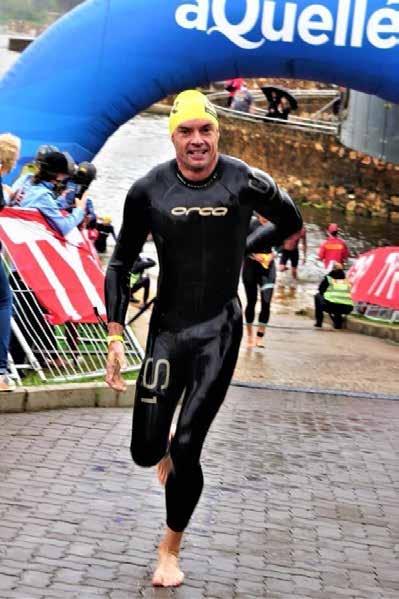
That left Annapurna—a rarely climbed, deadly peak with the highest fatality rate among the 8000-ers. “It lured us in,” Warren admits. “We knew it was wild, but it was also manageable from Camp 4 to the summit.”
In reality, the section between Camps 2 and 3 proved to be Russian Roulette.
“We underestimated it. Constant avalanches. Wild terrain. And you have to cross it multiple times to acclimatize.”
Tragedy struck when two Sherpas from Seven Summit Treks died in an avalanche just below Camp 3. His climbing partner John Black was descending at the same time they were ascending when their paths crossed. After sharing a chocolate, they continued in opposite directions. John was spared — thanks only to a crevasse that separated them. “That’s when things get real,” Warren reflects. “When the line between life and death is a few metres of snow and luck.”
Their original plan was to do three rotations to acclimatise properly, but the mountain had other ideas. Conditions deteriorated and weather forecasts forced them to bring the summit attempt forward by two and a half weeks. They had only done one night at Camp 2 and returned to base camp for three days before the storm closed in.
John sadly turned around on summit night above camp 3, feeling insufficiently acclimatised. Warren respected his decision; as he acknowledged that going into thin air ill-prepared would be reckless. With limited acclimatisation, they had made a critical decision: to use oxygen from Camp 3 onwards — despite only having one emergency bottle between them.
They used the oxygen at a reduced flow rate, aware that if they ran out, it could be fatal.
Despite all odds, Warren and Kaji Sherpa summited — and was the first and only South African ever to do so. “That wasn’t the goal, but it was a cherry on top,” he says. “We were raising money for Food For Hope, and knowing that the South African flag was on top of Annapurna — and something good was happening back home because of it — meant the world.”
These climbs are self-funded, supported by sponsorships of gear and minimal donations. It’s not cheap. Base camp alone means nearly two months of food, fuel, equipment and careful logistics. “The better you eat, the better you sleep. That means faster recovery, and better chances up there.”
When he’s not flying or climbing, Warren is a father to 9-year-old Grace and shares his life with a commercial pilot he met four years ago whilst skydiving. She joins him at the base camps whenever she can.
From executing barrel rolls over the aerobatic box to inching toward thin air on the world’s most perilous peaks, Warren Eva lives fully — both above the clouds and beyond them.
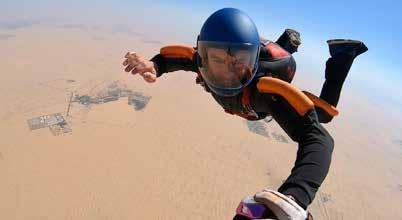



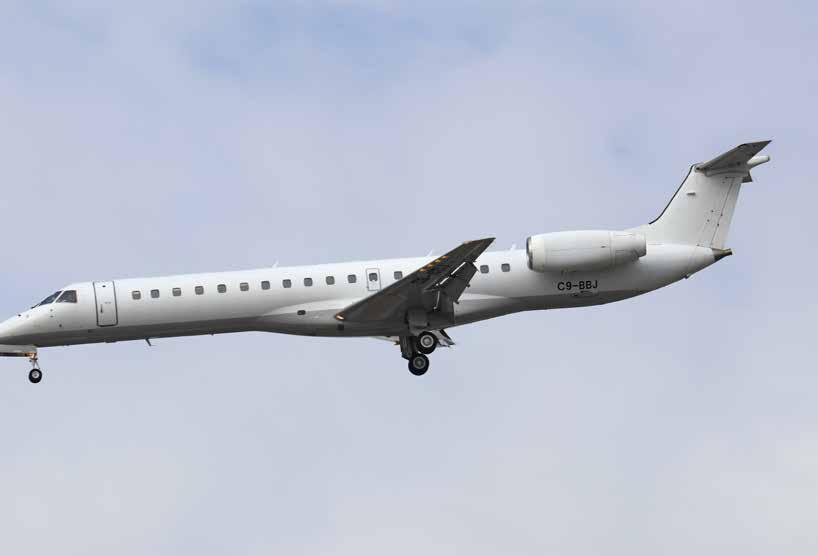

April was another busy month for aircraft importers with 13 new additions while seven registrations are deleted.
ABOVE: ZS-BBJ is now C9-BBJ in Mozambique. Image: Morne Booij-Liewes.
-June 2025
T’S a mixed bag of new planes and, unlike several preceding months, we only have one airliner, an Airbus A320-232, registered ZS-SZL(3192) that is destined for SAA’s growing fleet. This 2007 model A320 joined the fleet of Indian low cost carrier IndiGo as VT-INK via a lease agreement by owners Lare Leasing in July of that year and remained in service with the carrier for six years. In September 2013 the plane joined the fleet of SAS Scandinavian Airlines with registration OY-KAT and named Hildegun Viking. It remained in the carrier’s fleet until its retirement in November 2024.
It now starts the next chapter in Africa on lease to SAA. The aircraft was delivered to OR Tambo on 29 March
The sole helicopter registered this month

from Shannon (where it was repainted) with a stop in Accra and will soon start scheduled flights.
The first of the two Citation Is I mentioned in the May column have now been registered. The long-time Zimbabwean resident Citation I, N202MH (500-0260) has become ZS-MBR. Interestingly this registration was previously carried by another Citation model, a Mustang (510-0113), so perhaps the Mustang’s owner has decided he wants an early-model Citation I instead?
A type we don’t see so many of anymore is the Australian manufactured Gippsland Airvan but ZS-PGU (GA8-03-037) again takes up its previous South African registration after spending some years in Botswana as A2-ICE in service with Air Kavango.
The long-awaited new PC-12NGX, ZS-FAF (2449) was delivered to its new owners at Wonderboom Airport on 4 May after a leisurely ferry flight starting at Buochs Switzerland on 29 April and routing via Heraklion, Luxor, Djibouti, Zanzibar and Malawi before arriving at Lanseria to clear customs and immigration.
Air Tractor is having a good year with two more of their aircraft, this time two of the top-end model AT-802As being delivered and allocated the registrations ZS-JOW (802A1134) and ZS-MNA (802A-1144). I suspect these will be used for water-bombing duties combatting devastating fires around the country.
Two Cessnas, a U206 ZS-TAU (ex A2-AGR) and a 172N Skyhawk II, ZS-AJG are also registered. The sole helicopter registered this month is a Bell 407, ZS-ROB.
Four NTC types are registered, showing quite a slowdown from the previous month. It would seem gyrocopters are having a bit of a resurgence as yet another one is registered this month: a Magni Gyro M22, ZU-RLF.
One each of the homegrown Sling HW and a Kitplanes for Africa Safari are also registered. The last addition is a Picasso AB 206, ZU-FKZ. This registration was formerly allocated to an Aerocomp Comp Air 7 but I am unable to find any information on what a Picasso AB206 may be. Perhaps our readers can shed some light on this newly-registered type?
Turning next to the deletions, we note that Embraer-145LR ZS-BBJ (145277) has moved to the Mozambican registry as C9-BBJ. It did a test flight from OR Tambo on 3 May where I had the opportunity to photograph it. It was still painted white with a grey underside and no airline livery has been applied. soHawker 900XP ZS-TYG (HA-0167) departs our shores for America. It would seem that the sale of this jet to the DRC fell through and, after some time on the South African civil aircraft register, in now takes up the American registration N167XP . It had arrived at Lanseria on 10 September 2023 as 9Other deletions include a Cessna T337H ‘push-pull” exported to America. This is the plane used by the city of Cape Town’s Safety and Security Directorate to monitor crime and
BELOW: B-9900 of China Southern still in China but with SAA markings as ZS-SZM. Image: Aviation Changxing.
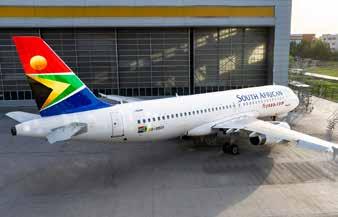
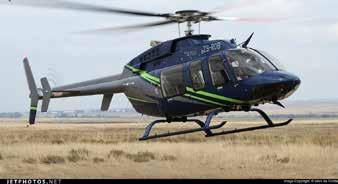
ZS-ROB is a Bell 407 - seen in 2016, is now noted as imported. Image: Marc de Fontaine.
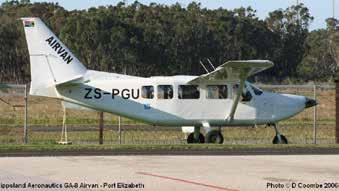
Despite being listed as newly registered, ZSPGU is seen here in 2006 at Port Elizabeth. Image: D Coombe.

ABOVE: ZS-NYL - seen already in Brampton Canada in 2023.
give law enforcement officers situational awareness and aerial imagery when they conduct operations. The plane was transferred to the South African register to comply with contract stipulations and legal compliance. Perhaps the contract has now ended and the plane again reverts to its former American registry?
Three light Cessnas are cancelled: A Cessna TR182 ZS-NYL is exported to Canada, and Cessna 182S ZS-TMK is registered in Mozambique. The last is a Cessna 182A, ZS-ORZ is cancelled as “destroyed” but I cannot seem to find any information on a crash or incident that this plane may have been involved in. Perhaps our readers can shed some light on its fate?
The final deletion for the month is the sole helicopter to be exported, a Robinson R44 Raven II ZS-RML moving to Mozambique.
In closing, let me first correct myself from last month’s column. It would seem that the Pilatus PC-24 seen at the manufacturer’s production plant in Stans earlier this year with a green and gold cheatline is in fact going to Tanzania (and not South Africa) where it will take up the registration 5H-SPF (572). The first engine runs were made on 28 April with the test registration HB-VZF.
C182T Skylane N9000S was seen on departure from Malta on 18 April with the registration ZS-KLV painted under the wing. The plane was ferried to South Africa on an arduous flight departing Goose Bay on 11 April and routing via Narsarsuaq, Reykjavik, Sleap, Malta, Hurgada, Addis Ababa, Nairobi, Lilongwe and finally arriving at Lanseria on the afternoon of 4 May.
And finally, a former China Eastern Airlines Airbus A320-232 with registration B-9900 (5461) was seen at Tianjin in China in April painted in full SAA livery. It is believed it will become ZS-SZM.j
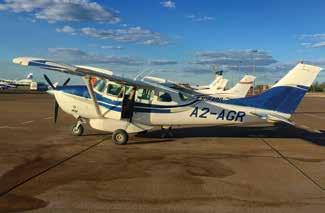
A2-AGR is a former Okavango Delta workhorse - now in SA as ZS-TAU.
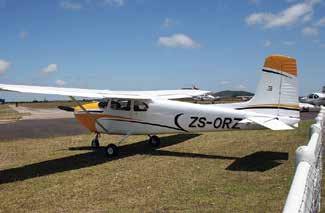
ZS-ORZ was one of the oldest C182s in South Africa - and now listed as destroyed. Image: Bob Adams.

Cessna T337H returns to America after a year as the city of Cape Town’s eye in the eky.
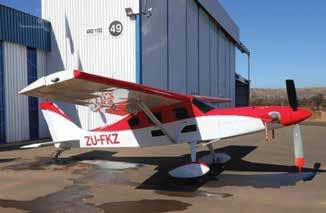
ZU- Registrations are being recycled - here is an earlier ZU-FKZ - A Compair 7.

























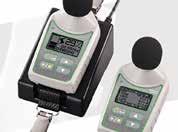

I am a wannabe pilot but too old and too poor, so I started flying drones. I was shocked to see how draconian SA drone laws actually are:
1. In South Africa, a drone is a drone. [There is no differentiation between drone types]. Thus in SA you need the same qualifications to fly a 249 gram mini-drone as you do to fly a giant crop-spraying drone.
2. It can cost anybody who wants to use their mini drone, in order to earn any money, up to R200,000 to obtain qualifications
3. A wedding photographer/estate agent etc etc etc must spend up to R200,000 to legally take a wedding photo (this includes a full medical).
4. The drone industry has been captured by some very rich people who are determined to keep small business out by hiding behind SA’s draconian laws
5. SA is light years behind the rest of the world as regards drone laws
6. There are thousands of illegal drone flyers
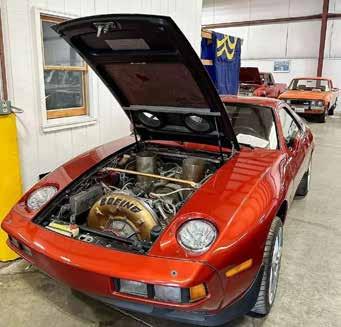
that bought their drones from some small retailer and are sharing the same airspace as manned aircraft. It is an accident waiting to happen if SACAA does not embark on an education campaign very, very soon
7. In most other countries there are online quizzes to educate people about the do’s and dont’s of drone flying . In USA it is called a TRUST certificate. SA has nothing like this.
8. This the YouTube video that got me thinking https://www.youtube.com/ watch?v=IKZnae5iTVQ&t=50s and illustrated the potential of drones in SA (not only as tools of trade but crime prevention, tourism etc etc)
I realise this is not the core focus of your magazine but it might make some investigative journalism.
j
Kind Regards
Mike Williams
VIO Aviation 083 230 7821
Mont Blanc Financial Services 0800 467 873

www.vioaviationsolutions.co.za
www.mbfs.co.za a PRETORIA
Ardent Aviation 082 784 0510
www.ardentaviation.co.za a a a yolanda@ardentaviation.co.za
Vektor Aviation 012 247 5010
www.vektoraviation.co.za a CAPE TOWN
Litson and Associates (Pty) Ltd
+27(0)21 851 7187
safety@litson.co.za NATIONAL iTOO
www.litson.co.za *FSF BARS/IOGP/IATA/ICAO/CAP 437 a
www.itoo.co.za a
The glory of a perfect flying day is sure to get any aviator’s blood pumping. And for a glider pilot, few places come close to the conditions in the Kalahari Desert.
SHOUTS of ‘Open!’ and ‘Release!’ reverberate across the blacktop runway as tow ropes are hooked up. ‘There’s an element of gliding that is almost as much art as it is science. You need to be pretty much at one with the aircraft. There’s a feel, and these glider pilots develop such a nuanced sense of the atmosphere and the environment,’ says Sling’s James Pitman.
In February 2025, Sling had the honour of being invited to tow gliders at the bi-annual Helli Lasch Challenge. The event, which takes place on the magnificent Tswalu Kalahari Game Reserve, brings three glider world champions to fly with South Africa’s most accomplished gliders and a group of younger development pilots.
Team Sling, comprised James Pitman and test pilot Riaan Denner, himself a glider

ABOVE: The two Slings did a great job launching all the gliders at 10,000ft density altitudes.
pilot who has recently competed at the world gliding championship in the US. It was a good showcase of the performance of the Sling 2 and Sling 4 TSi when used for glider towing.
A Rotax 915iS engine (141 hp) was fitted to the Sling 2, while the Sling TSi has the standard 160 hp 916iS Rotax. The density altitude was around 10,000 ft because it was so hot.’
Both planes could tug any glider, no matter how heavily ballasted. Most of the sleek, white gliders were the JS series by Jonker Sailplanes. With 13 gliders needing to get airborne in short succession each day at Tswalu and only the two tug aircraft, pilots have to have their
wits about them at all times.
‘There’s a lot going on. You need to land downwind with a 60-metre rope hanging out the back of the plane, stop before you get to the gliders, turn around, hitch up, take up the slack, and then go again’, says Pitman.
Once airborne, Pitman says, ‘You want to keep just the right tension in the rope. You don’t want a scenario where it’s jerking, becoming taught and catching up again. And of course you’re looking for an elusive thermal. You may think the thermal’s over here, but the glider pilot thinks it’s over there, so there’s a debate!’
Typically at Tswalu, gliders
would fly for three hours at an average speed of 150 km/h so pilots are covering about 450 kms on a day.
With a host of risky escapades already accomplished, Pitman says the event was “a steep learning curve I’ll never forget, set in one of the world’s most dramatic game reserves.”
‘How wonderfully generous of the Oppenheimer family to make available their magnificent 160,000-hectare game reserve, including the game rangers, the vehicles and their runway, to such a small group of people with a particular interest. What a privilege! Thank you to the Oppenheimers," Pitman concludes.
BELOW: Preparing the gliders.

you’re looking for an elusive thermal
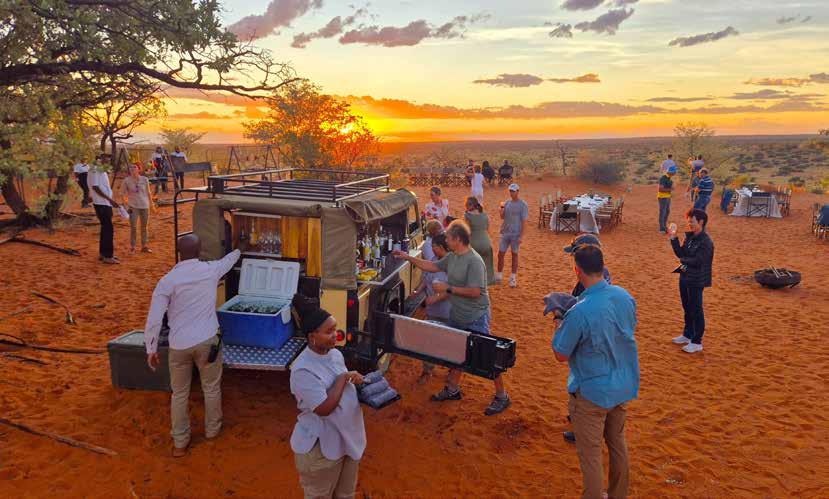
known for its unmatched hospitality and great vistas.


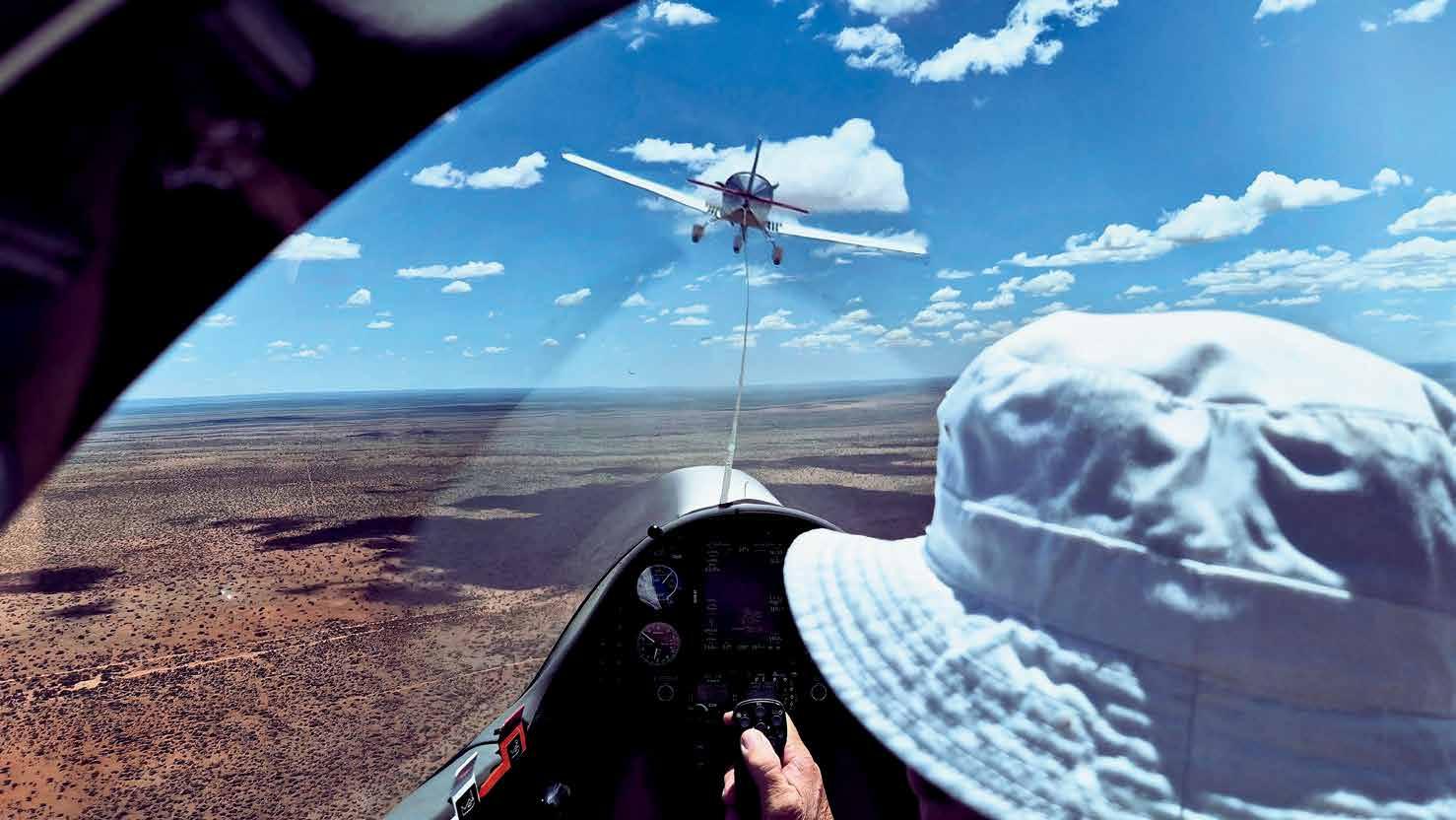
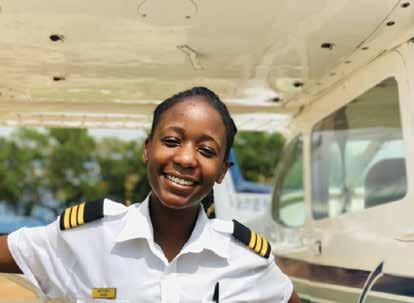
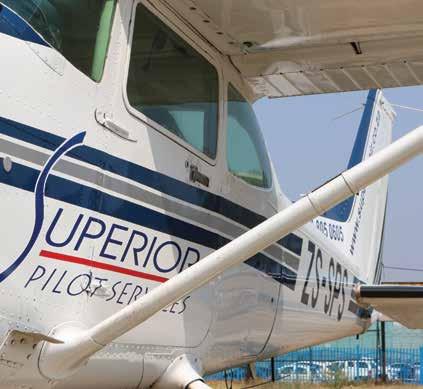



NAC (021) 425-3868 www.nachelicopterscapetown.com

Cape Town Helicopters (021) 418-9462 www.helicopterscapetown.co.za
GEORGE Titan (044) 878-0453 www.titanhelicopters.com
NAC (011) 267-5000 www.nac.co.za
Leading Edge (013) 741-3654 www.leadingedgeaviation.co.za
NAC (011) 345-2500 www.nac.co.za
VIRGINIA
BAC (031) 569-1531 www.bachelicopters.com
NAC (031) 944-1678 www.nac.co.za

ARRIVE ANYWHERE

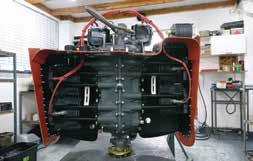



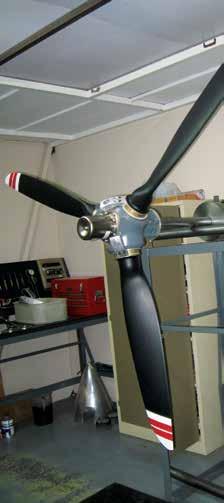

















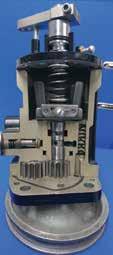
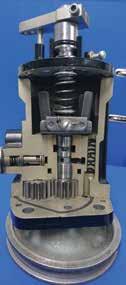

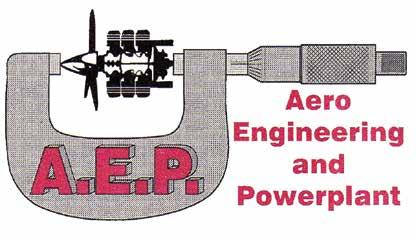






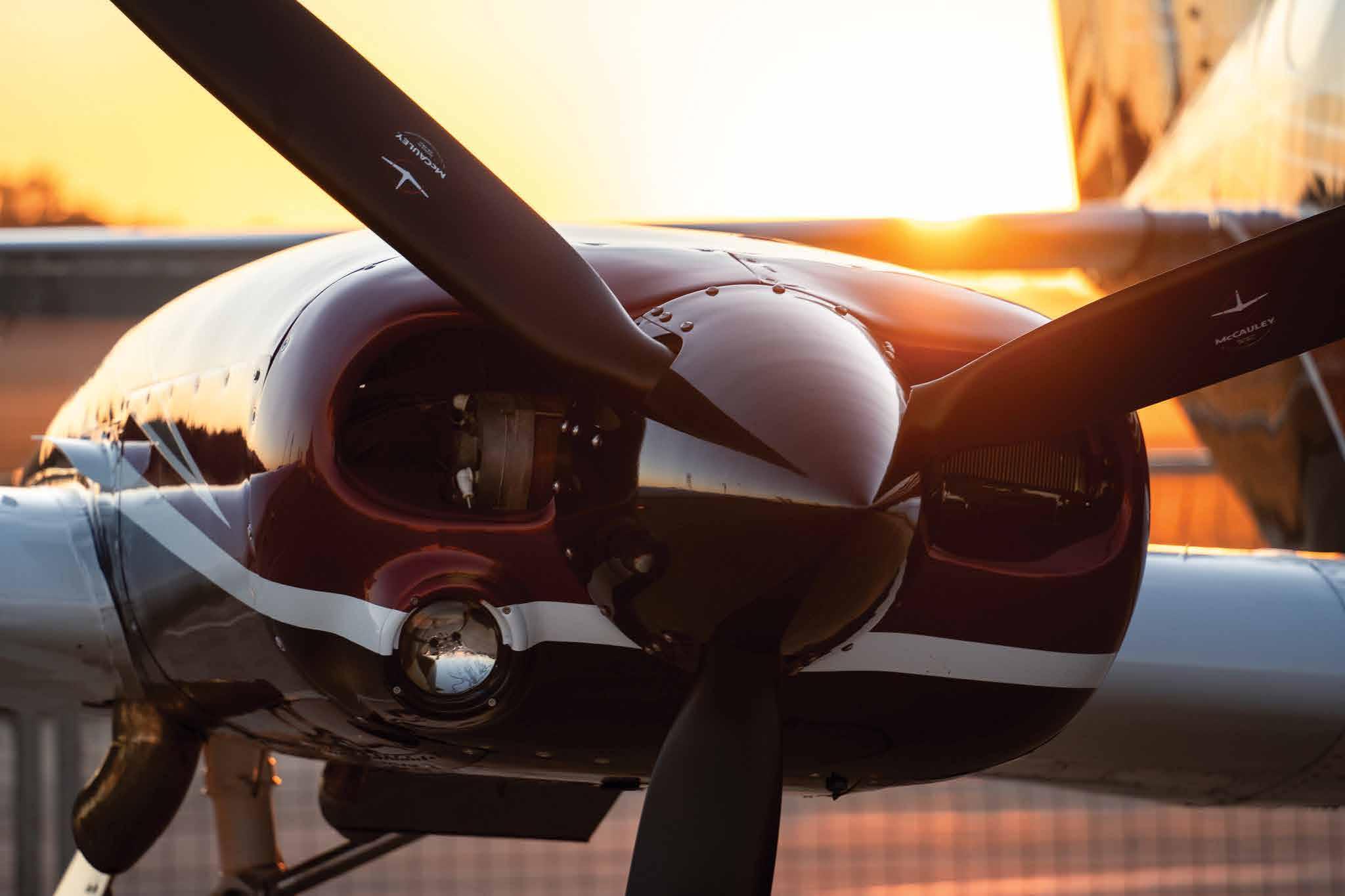





Over the past four editions, Aero Expo has shown steady growth, and so in January 2025, it was announced that it would move to the larger Lanseria International Airport.

THE 2025 edition of AERO South Africa is being held at Lanseria from 25 to 27 June.
AERO South Africa is the premier business-to-business trade show for the general aviation industry in Southern Africa. The event connects industry professionals, showcases innovations, and facilitates discussions on the future of aviation.
Making the announcement, AERO organisers Messe Frankfurt said; “This move marks an exciting new chapter for the event, which has become a cornerstone of the General Aviation sector in the region.”
Lanseria International Airport was selected for its comprehensive infrastructure and strategic location.
As a major general aviation hub, Lanseria handles a
BELOW: Messe Friedrichshafen CEO Michael Dehn opens the 2024 show.
BELOW: Rampa Ramopo CEO of Lanseria.
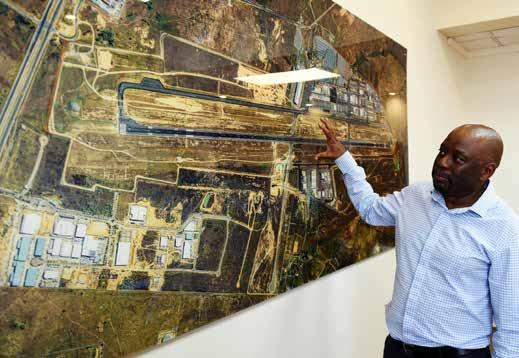
wide variety of general aviation operations, from charter flights to private aircraft services, making it a fitting backdrop for exhibitors and attendees alike.
“As part of our strategic intent, we have partnered with AERO South Africa to showcase what the airport has to offer to the GA community in terms of upgraded facilities and new facilities that we are constructing” said
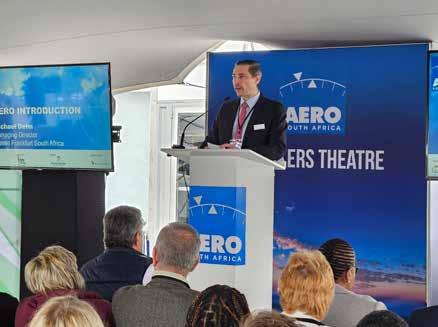
Rampa Rammopo the CEO of Lanseria International Airport.
Rammopo further noted that the event aligns perfectly with the airport’s strategy to establish itself as an innovation hub in the region. With the pipeline of capital projects to be launched in the near future, including the development of a Fixed Base Operator (FBO) precinct, the airport is well positioned to continue supporting the general aviation industry.
AERO South Africa places significant emphasis on fly-ins and demonstration flights, which are integral to connecting exhibitors with potential buyers. Lanseria’s modern facilities, including a runway capable of midsize widebody passenger jets, provide an excellent platform for showcasing the latest advancements in aviation technology.
Situated north-west of Johannesburg, Lanseria is accessible for attendees and exhibitors
from across South Africa - and beyond.
“The move to Lanseria International Airport reflects AERO South Africa’s dedication to evolving and enhancing the experience for its exhibitors and visitors. With its modern facilities, strong alignment with general aviation, and convenient accessibility, Lanseria is poised to elevate the event to new heights.” said Michael Dehn, the Managing Director of Messe Frankfurt South Africa.
Following on the well established model of AERO Friedrichshafen in Germany, and the previous four iterations of the Expo, AERO SA 2025 will feature:
• Park & Sell Area
• Demo Flights
• Fly-in
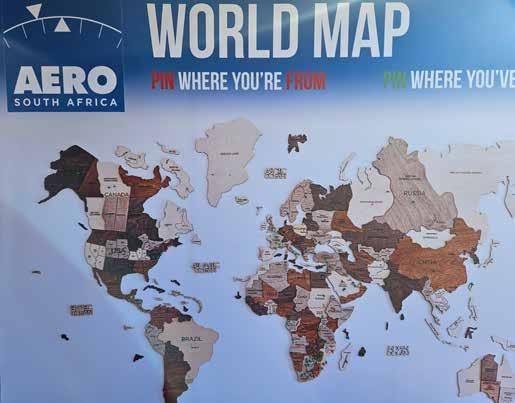
• Workshops
• Business Matchmaking Programme
• Youth Development Programme
There is thus something to appeal to everyone under the broad general aviation um-
brella. However, note that it is a business-to-business Expo, and not an airshow, and so children under 15 will not be admitted.
ABOVE: The focus on international connections is clear from the organisers clever use of this pin board.




























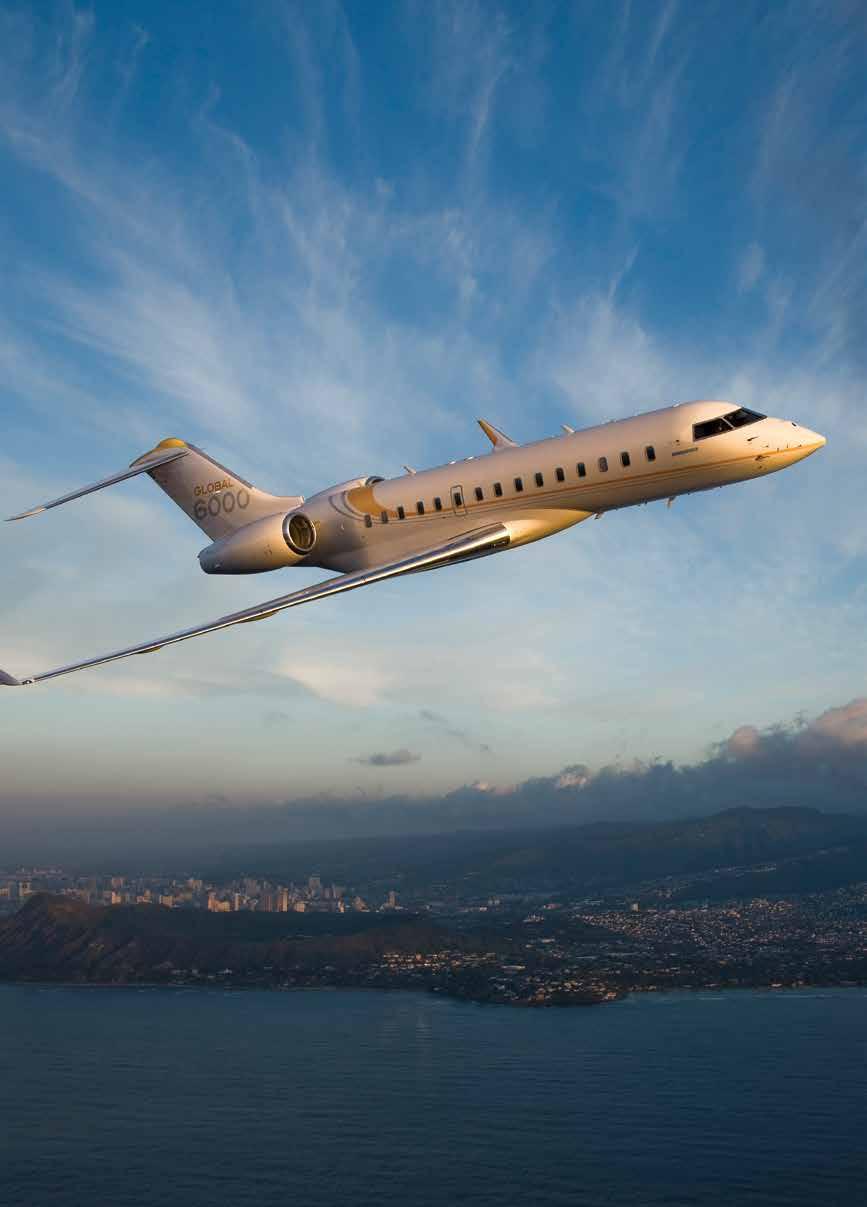




Absolute Aviation is a turnkey general aviation business, offering customers unparalleled levels of support and expertise in the form of a bespoke aviation service, and is the authorised sales, service and parts representative for Cessna, Beechcraft and Pipistrel in Southern and Central Africa.
In addition, the group represents a number of aircraft parts, engines and performance enhancement manufacturers in Africa, and offers a host of aviation services relating to aircraft and flight operations management through their Fixed Base Operations and Flight Services businesses.
Absolute’s mission is to remain with their valued customers for the duration of their aviation journey and to make sure that it is a safe and memorable one.
The African operations Head Office is at Lanseria International Airport where they operate a number of aviation businesses out of five hangars. Absolute Aviation also has satellite locations in Cape Town, Wonderboom, Maun, and Zurich. For more information visit: https:// absoluteaviation.co.za/
Since its founding 20 years ago by CEO Clinton Carroll, Aeronautical Aviation has developed a stellar reputation
for providing superior, reliable and cost-effective avionics for the whole general aviation industry.
Located at the general aviation hub of Lanseria International Airport, Aeronautical Aviation has been supporting and offering specialised services within the General Aviation industry with the repair, overhaul, and installation of aircraft instrumentation, avionics, electrical and pilot accessories.
As a pilot and aircraft owner, Clinton Carroll understands the challenges in the cockpit, the regulatory requirements, certification, and costs associated with the operation of an aircraft. This enables him to offer informed advice on upgrading equipment, repairs, and installations from a technical aspect as well as from a pilot’s point of view, without compromise to quality.
Asset Finance Corporation is a subsidiary of the well-known Aircraft Finance Corporation. Established in 2017, the company was formed to create tailor-made finance packages especially for bespoke asset classes.
Finance Corporation offers a complete end-to-end capital asset financing solution to meet all of client’s needs. It provides one point of contact for each specific client to alleviate confusion, as well as tailor-made
packages based on the client’s unique needs. After a thorough consultation, and deep-dive into the client’s needs, they steer the client in the right direction when it comes to capital asset sourcing, with no preference for a specific supplier or equipment brand. Visit: https://assetfincorp.co.za/
AXIS Aviation was successfully spun out of the Absolute Aviation Group to provide dedicated aircraft management, flight operations and aircraft charter. Axis uses a unique proprietary data platform to enable owners to choose between private and commercial operations in Austria and San Marino or South Africa, all managed under AXIS Aircraft Operating Certificates.
The Axis team is led by veteran Niall Olver, with Darryl Kent the managing director of AXIS Aviation Africa.
To find out more about how this new world class bizjet operator can meet your needs in aircraft acquisition and management, call Darryl Kent on 071 710 4374 or visit https:// za.axis-aviation.com/
Century Avionics has a proud history of more than 40 years at Lanseria International Airport. It is a company that has achieved
success: from one of the first Garmin GPS-100 installations, to much-admired glass cockpit upgrades like the Garmin G1000 NXi Integrated Flightdeck.
Century Avionics offers a wide range of avionic solutions for most general aviation platforms including fixed-wing and rotor-wing upgrades. The company excels in avionics sales and marketing, installations, repairs and maintenance, support, and certification to the highest standards. Notably, the company boasts an experienced design organisation that professionally implements modifications and designs for aircraft of all types. Century NAVCOM, is the SACAA Design Organisation approved for South Africa, Botswana, Namibia, Kenya, and Zimbabwe which makes the certification of the avionics installation hassle-free. Call: +27 11 701 3244 or email: salesadmin@centuryavionics.co.za
Based at Lanseria, CSA Aviation is Africa’s only authorised Cirrus Aircraft partner for Cirrus Aircraft Sales, Maintenance and Training. Cirrus Aircraft manufactures the world’s best-selling single engine piston aircraft, the SR20 and SR22/22T, for over 20 years, as well as their most recent product, the Cirrus Vision Jet.
In the Vision Jet Cirrus has created an aircraft that is safer, faster and more comfortable than any other personal aircraft that general aviation has ever seen. The design incorporates a state-ofthe-art interior, a multi-function instrument display to provide faster access to vital information and the exceptional Cirrus Airframe Parachute System (CAPS), a first and only for any certified production aircraft. Visit: https://cirrusaircraft.com/za/

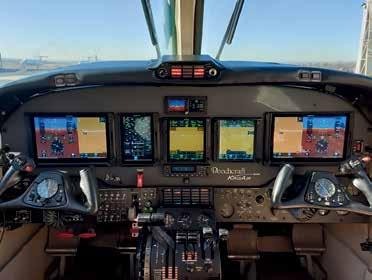



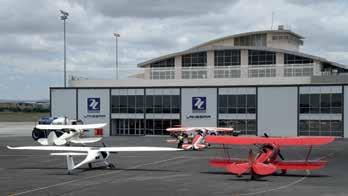
DJA is an aviation insurance broking specialist and we provide aviation coverage for individuals and companies. Our brokers will create a portfolio specific to your needs – balanced between cost, coverage, service and security.
DJA Aviation (Pty) Ltd was originally formed in 1969 and became dedicated to aviation insurance in 1976. DJA’s team is South Africa’s largest dedicated aviation insurance broking firm.
With a team of highly experienced aviation insurance specialists, it’s the greatest concentration of aviation insurance knowledge, expertise and experience available on the African continent. DJA provides insurance portfolios for its custom-
ers, which are balanced between cost, coverage, service and security.
DJA is part of the i capital Group and is an Authorised Financial Services Provider (FSP No: 15808).
The Aviation Union of Southern Africa, a trade union representing all individuals within the South African aviation industry.
Executive Aircraft Refurbishment ius based at Lanseria Airport’s south side and provides premium aircraft refurbishment. The company has a global reputation for quality and attention to detail. Our expert team will advise you on all aspects of the aesthetic and technical refurbishment process – from beginning to end, and
2

With a proven track record in the aviation industry, our knowledgeable and experienced team collaborates with clients to create tailored funding solutions that empower them to take to the skies


Investec For Business, a division of Investec Bank Limited. (Reg. No. 1969/004763/06) Investec Bank Limited is an authorised Financial Services Provider (FSP 11750) and a registered credit provider (NCRCP9). A member of the Investec Group.
nose-to-tail. Operating under licence AMO1540, all the company’s work complies with the relevant specifications – as stated on the approved drawings and aircraft maintenance manuals. It aligns with current regulations and standards put in place by: the SACAA EASA and the FAA. Visit: https://earefurbishment.com/ or email: francois@earefurbishment.com
Investec Aviation Finance provides value-adding, tailor-made finance solutions to the international aviation industry, from commercial and cargo airlines to leasing companies, helicopter operators, corporates and individuals. Investec Aviation Finance enables aircraft owners and operators to finance their aircraft with a partner who understands the client’s business and the industry. With high levels of service, low execution risk and streamlined operations, Investec Aviation Finance has earned the trust of its clients, resulting in successful, long-term relationships.
From humble beginnings as a grass airfield north-west of Johannesburg in 1974, to welcoming former President Nelson Mandela after his release from prison, all the way to welcoming dignitaries and celebrities alike, the airport continues its path to greatness.
Lanseria International Airport is continually earing up to handle more flights from destinations on the African continent. Continual growth has increased the passenger handling capacity from 3 million to 4.5 million per annum. With expanded facilities, the airport thus aims to attract more regional air traffic services. This includes new flights to regional destinations in countries including Zambia, Zimbabwe, Mozambique and Mauritius. Visit: https://lanseria.co.za/
The Aviation Union of SA (AUSA) is the voice of members of the aviation industry. As a member-driven union recognized under the Labour Relations Act, AUSA prides itself on providing expert representation and advocacy for its members, both locally and internationally. AUSA’s goal is not just to represent, but to empower each member within the aviation labour market, ensuring your voice contributes directly to the management, maintenance, and governance. Visit: https://ausa.co.za/
The Safomar Group was established in 1987 and represents global principals in the aviation sector. The company has long-term relationships with an established blue-chip principals base, encompassing leading clients in general, corporate, commercial and military organisations thus positioning Safomar Aviation at the leading edge of aviation products / services in Sub-Saharan Africa.
Specialising in: Training, Aircraft sales, maintenance products, and services from its head office is in Modderfontein Johannesburg, the group extends across the African Continent, affiliated with 10 facilities and a team of over 170 dedicated personnel.
Contact: sales@safomaraviation.co.za
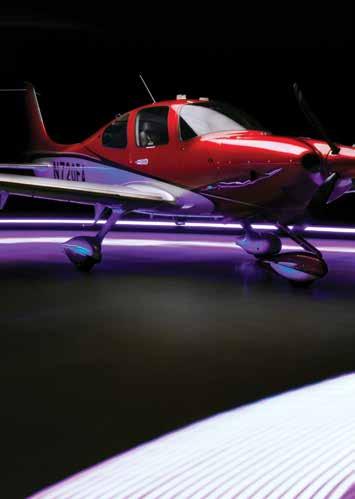

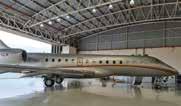




























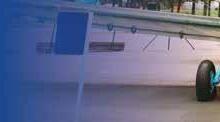



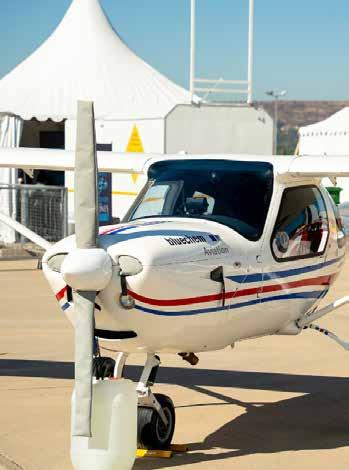
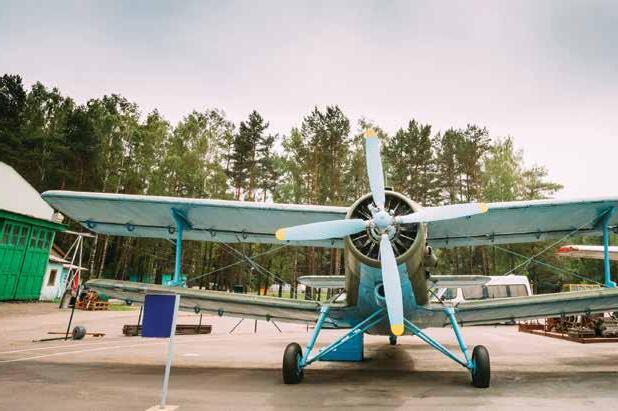



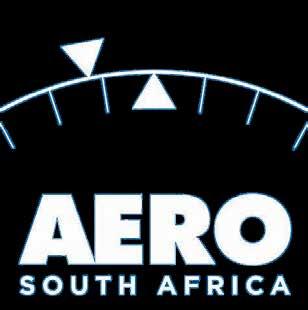
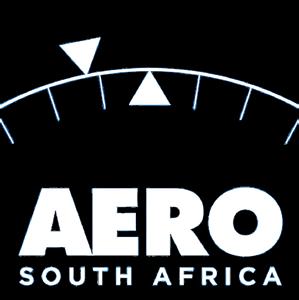



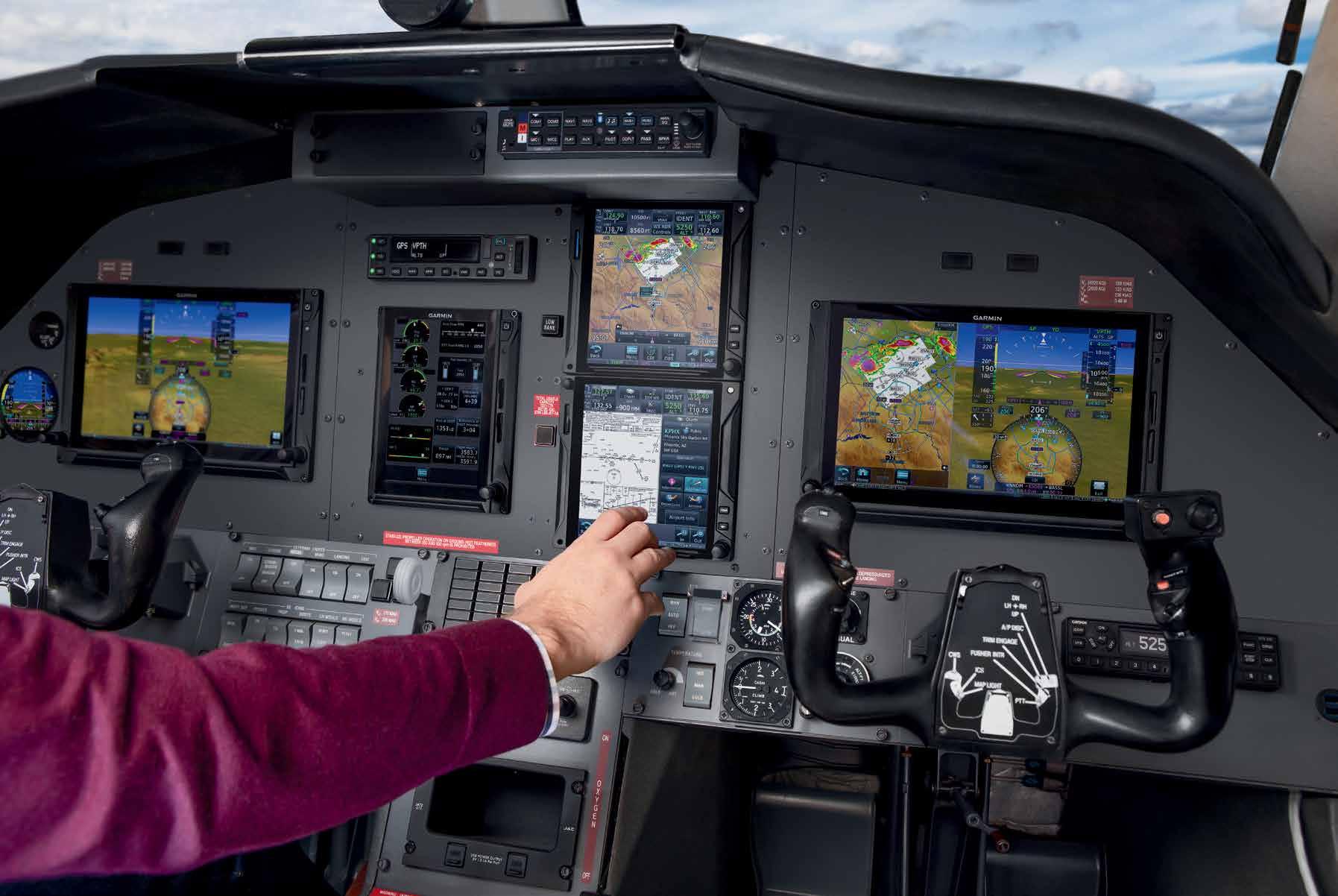

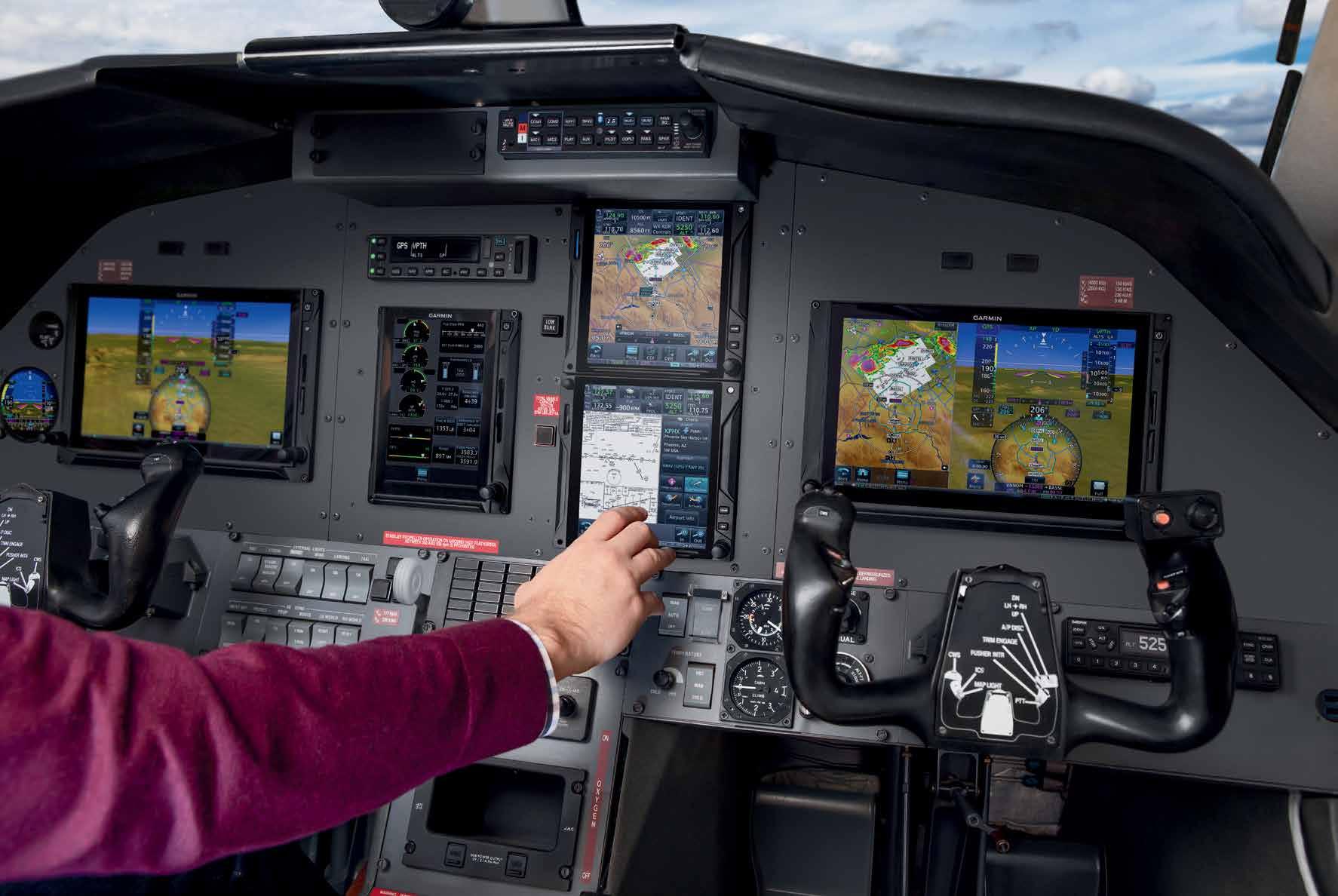











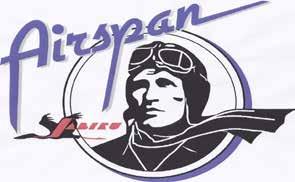
AIRSPAN EXECUTIVE AIRPORT, a dynamic, young, registered airport, just east of Rustenburg, NW. A tarred, lighted 900m runway, helipads, aprons, 1000+ people venue, restaurant, bar, accommodation. Extending the runway (1100m), registering a PPL school, building hangers, storage units, and an AMO. Looking forward to all fly-ins (no landing fees)!
Contact details: Renzia: 082 432 9228 / 083 229 5746, Fanie: 083 651 2254
Email: Airspan.fbf@gmail.com

Brits Flying Club, Founded in 1952, Brits Flying Club is one of South Africa's most respected aviation clubs, producing world-class aviators. Home to Springbok colours, we've nurtured champions. Located at FABS, our 900m asphalt runway (02/20) supports top aviation. Join us in honouring our rich heritage! Telephone: 012 255 0155
E-Mail: info@britsflyingclub.co.za Website: britsflyingclub.co.za

FABB is located central in the Ekurhuleni, close to OR Tambo. It houses various Flight Schools and AMOs, and has a lit 1440m runway. Jet-A1 and Avgas are available.
The clubhouse has a restaurant, lounge, pub, DSTV, outside braai area, pool, kids play area, and ablution facilities for overnight stays.
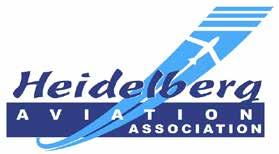
Fuel on airfield Avgas & Jet A1
FAHG 125.9
Contact – Andre Vorster +27 83 654 2793
Mail: Andre Vorster: andre@poxytech.co.za
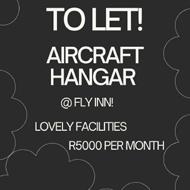
Fuel on airfield Avgas & Jet A1
FAHG 125.9
Contact –Andre Vorster
+27 83 654 2793
Mail: Andre Vorster: andre@poxytech. co.za
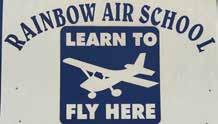
NPL/PPL Training Centre - SACAA accredited (SACAA1177ATO) NPL Part 62 and PPL Part 61 ATO in Ladysmith KZN (FALY) and we have been in business since 2009. Avgas sales are also available at FALY.
Contact Larry: +27 83 788 2704
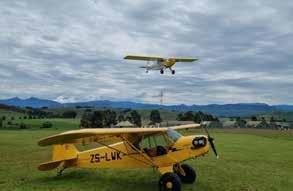
Himeville airfield is the gateway to Underberg and the southern Drakensberg surrounds. Sani Pass, Hiking, camping fishing, MTB biking, running trails, paddling the list of activities is long. Loads of accommodation options available
Co-ordinates: S29"44.9 E029"30.2
Runway: 05/23 900m grass
Frequency: 124.8
Contact:
Jayson van Schalkwyk +27 82 322 5722

Orient Airfield FAOI
S26°02’24” E027°35’42”
Situated 45km WNW of Johannesburg, the airfield features a 1.4km main runway, 36-18, 5100ft ASL. Training is provided in Gliders and TMG’s up to GPL level. The TMG’s are available for cost effective hour building for CPL and PPL Pilots.
Contact: http://mgc.org.za
OWN YOUR SLICE OF SKY AT TEDDERFIELD AIRPARK!
Ditch the rent and land your dreams at our fly-in community! Secure your hangar or stand in a buzzing aviation hub with epic facilities, security, SLING Aircraft, and a like-minded crew of aviators. SPACE IS LIMITED. INVEST NOW! https://tedderfield.co.za/home TedderfieldAirpark.co.za or contact Alan or Nic on +27 83 702 3680 or +27 82 900 4299.
FABB is located central in the Ekurhuleni, close to OR Tambo. It houses various Flight Schools and AMOs, and has a lit 1440m runway. Jet-A1 and Avgas are available.
The clubhouse has a restaurant, lounge, pub, DSTV, outside braai area, pool, kids play area, and ablution facilities for overnight stays.
208 Aviation
Ben Esterhuizen +27 83 744 3412 / 83 820 1513 ben@208aviation.co.za info@208aviation.co.za www.208aviation.com
A1A Flight Examiner (Loutzavia)
Jannie Loutzis 012 567 6775 / 082 416 4069 jannie@loutzavia.co.za www.loutzavia.co.za
AES (Cape Town)
Erwin Erasmus 082 494 3722 erwin@aeroelectrical.co.za www.aeroelectrical.co.za
AES (Johannesburg)
Danie van Wyk 011 701 3200 office@aeroelectrical.co.za www.aeroelectrical.co.za
Aerocolour cc
Alfred Maraun 082 775 9720 www.aeroeng@iafrica.com
Aero Engineering & PowerPlant
Andre Labuschagne 012 543 0948 www.aerocolour@telkomsa.net
Aerokits
Jean Crous 072 6716 240 aerokits99@gmail.com
Aeronav Academy Donald O’Connor 011 701 3862 info@aeronav.co.za www.aeronav.co.za
Aeronautical Aviation Clinton Carroll 011 659 1033 / 083 459 6279 clinton@aeronautical.co.za www.aeronautical.co.za
Aerospace Electroplating
Oliver Trollope 011 827 7535 petasus@mweb.co.za
Aerotel Martin den Dunnen 087 6556 737 reservations@aerotel.co.za www.aerotel.co.za
Aerotric Richard Small 083 488 4535 aerotric@aol.com
AIFA Sean Stopford +27 (23) 007 0100 seanst@aifa.co.za
Aviation Rebuilders cc Lyn Jones 011 827 2491 / 082 872 4117 lyn@aviationrebuilders.com www.aviationrebuilders.com
AVIC International Flight Academy (AIFA) Theo Erasmus 082 776 8883 rassie@aifa.co.za
Air 2000 (Pty) Ltd
Anne Gaines-Burrill 011 659 2449 - AH 082 770 2480 Fax 086 460 5501 air2000@global.co.za www.hunterssupport.com
Aircraft Finance Corporation & Leasing
Jaco Pietersen +27 [0]82 672 2262 jaco@airfincorp.co.za
Jason Seymour +27 [0]82 326 0147 jason@airfincorp.co.za www.airfincorp.co.za
Aircraft General Spares Eric or Hayley 084 587 6414 or 067 154 2147 eric@acgs.co.za or hayley@acgs.co.za www.acgs.co.za
Aircraft Maintenance International
Pine Pienaar 083 305 0605 gm@aminternational.co.za
Aircraft Maintenance International
Wonderboom
Thomas Nel 082 444 7996 admin@aminternational.co.za
Air Line Pilots’ Association
Sonia Ferreira 011 394 5310 alpagm@iafrica.com www.alpa.co.za
Airshift Aircraft Sales
Eugene du Plessis 082 800 3094 eugene@airshift.co.za www.airshift.co.za
Alclad Sheetmetal Services
Ed Knibbs 083 251 4601 ed@alclad.co.za www.alclad.co.za
Algoa Flying Club
Sharon Mugridge 041 581 3274 info@algoafc.co.za www.algoafc.co.za
Alpi Aviation SA
Dale De Klerk 082 556 3592 dale@alpiaviation.co.za www.alpiaviation.co.za
Apco (Ptyd) Ltd
Tony/Henk + 27 12 543 0775 apcosupport@mweb.co.za www.apcosa.co.za
Ardent Aviation Consultants
Yolanda Vermeulen 082 784 0510 yolanda@ardentaviation.co.za www.ardentaviation.co.za
Ascend Aviation Marlo Kruyswijk 079 511 0080 marlo@ascendaviation.co.za www.ascendaviation.co.za
Atlas Aviation Lubricants
Steve Cloete 011 917 4220 Fax: 011 917 2100 sales.aviation@atlasoil.co.za www.atlasaviation.co.za
AVDEX (Pty) Ltd
Tania Botes 011 954 15364 info@avdex.co.za www.avdex.co.za
Aviatech Flight Academy
Nico Smith 082 303 1124 viatechfakr@gmail.com www.aviatech.co.za
Aviation Direct Andrea Antel 011 465 2669 info@aviationdirect.co.za www.aviationdirect.co.za
Avtech Riekert Stroh 082 749 9256 avtech1208@gmail.com
BAC Aviation AMO 115 Micky Joss 035 797 3610 monicad@bacmaintenance.co.za
Blackhawk Africa Cisca de Lange 083 514 8532 cisca@blackhawk.aero www.blackhawk.aero
Blue Chip Flight School Henk Kraaij 012 543 3050 bluechip@bluechip-avia.co.za www.bluechipflightschool.co.za
Border Aviation Club & Flight School
Liz Gous 043 736 6181 admin@borderaviation.co.za www.borderaviation.co.za
Bona Bona Game Lodge
MJ Ernst 082 075 3541 mj@bonabona.co.za www.bonabona.co.za
Breytech Aviation cc 012 567 3139 Willie Breytenbach admin@breytech.co.za
Celeste Sani Pak & Inflight Products Steve Harris 011 452 2456 admin@chemline.co.za www.chemline.co.za
Cape Town Flying Club
Beverley Combrink 021 934 0257 / 082 821 9013 info@capetownflyingclub.co.za www.capetownflyingclub.co.za
Cape Town Flight Training Centre Frans 021 976 7053 admin@cape-town-flying.co.za www.cape-town-flying.co.za
Capital Air
Tanya Vinagre 011 827 0335 / 083 928 7265 tanya@capitalairsa.com www.capitalairsa.com
Century Avionics cc Carin van Zyl 011 701 3244 sales@centuryavionics.co.za www.centuryavionics.co.za
Chemetall
Wayne Claassens 011 914 2500 wayne.claassens@basf.com www.chemetall.com
Chem-Line Aviation & Celeste Products
Steve Harris 011 452 2456 sales@chemline.co.za www.chemline.co.za
Clifton Electronics cc CJ Clifton / Irene Clifton 079 568 7205 / 082 926 8482 clive.iclifton@gmail.com
Comair Flight Services (Pty) Ltd Reception +27 11 540 7640/FAX: +27 11 252 9334 hello@flycfs.com www.flycfs.com
Cornerstone Sharon Muller 082 941 4018 sharon.muller@liblink.co.za
Corporate-Aviators/Affordable Jet Sales Mike Helm 082 442 6239 corporate-aviators@iafrica.com www.corporate-aviators.com
CSA Aviation – Cirrus South Africa Alex Smith 011 701 3835 alexs@cirrussa.co.za www.cirrussa.co.za
C. W. Price & Co Kelvin L. Price 011 805 4720 cwp@cwprice.co.za www.cwprice.co.za
Dart Aeronautical Pieter Viljoen 011 827 0371 pieterviljoen@dartaero.co.za www.dartaero.co.za
Dart Aircraft Electrical Mathew Joubert 011 827 0371 Dartaircraftelectrical@gmail.com www.dartaero.co.za
Diepkloof Aircraft Maintenance cc Nick Kleinhans 083 454 6366 diepkloofamo@gmail.com
DJA Aviation Insurance 011 463 5550 0800Flying mail@dja-aviation.co.za www.dja-aviation.co.za
Dynamic Propellers Andries Visser 011 824 5057 082 445 4496 andries@dynamicpropeller.co.za www.dynamicpropellers.co.za
Eagle Flight Academy Mr D. J. Lubbe 082 557 6429 training@eagleflight.co.za www.eagleflight.co.za
Execujet Africa 011 516 2300 enquiries@execujet.co.za www.execujet.com
Federal Air Rachel Muir 011 395 9000 shuttle@fedair.com www.fedair.com
Ferry Flights int.inc. Michael (Mick) Schittenhelm 082 442 6239 ferryflights@ferry-flights.com www.ferry-flights.com
F Gomes Upholsters Carla de Lima 083 602 5658 delimaCarla92@gmail.com
Fireblade Aviation 010 595 3920 info@firebladeaviation.com www.firebladeaviation.com
Flight Training College Cornell Morton 044 876 9055 ftc@flighttrainning.co.za www.flighttraining.co.za
Flight Training Services Amanda Pearce 011 805 9015/6 amanda@fts.co.za www.fts.co.za
Fly Jetstream Aviation Henk Kraaij 083 279 7853 charter@flyjetstream.co.za www.flyjetstream.co.za
Flying Unlimited Flight School (Pty) Ltd Riaan Struwig 082 653 7504 / 086 770 8376 riaan@ppg.co.za www.ppg.co.za
Flyonics (Pty) Ltd Michael Karaolis 010 109 9405 michael@flyonics.co.za www.flyonics.co.za
Gemair Andries Venter 011 701 2653 / 082 905 5760 andries@gemair.co.za
GIB Aviation Insurance Brokers Richard Turner 011 483 1212 aviation@gib.co.za www.gib.co.za
Guardian Air 011 701 3011 082 521 2394 ops@guardianair.co.za www.guardianair.co.za
Heli-Afrique cc Tino Conceicao 083 458 2172 tino.conceicao@heli-afrique.co.za
Henley Air Andre Coetzee 011 827 5503 andre@henleyair.co.za www.henleyair.co.za
Hover Dynamics Phillip Cope 074 231 2964 info@hover.co.za www.hover.co.za
Indigo Helicopters Gerhard Kleynhans 082 927 4031 / 086 528 4234 veroeschka@indigohelicopters.co.za www.indigohelicopters.co.za
IndigoSat South Africa - Aircraft Tracking Gareth Willers 08600 22 121 sales@indigosat.co.za www.indigosat.co.za
International Flight Clearances
Steve Wright 076 983 1089 (24 Hrs) flightops@flyifc.co.za www.flyifc.co.za
Investment Aircraft
Quinton Warne 082 806 5193 aviation@lantic.net www.investmentaircraft.com
Jabiru Aircraft Len Alford 044 876 9991 / 044 876 9993 info@jabiru.co.za www.jabiru.co.za
Jim Davis Books
Jim Davis 072 188 6484 jim@border.co.za www.jimdavis.co.za
Joc Air T/A The Propeller Shop Aiden O’Mahony 011 701 3114 jocprop@iafrica.com
Johannesburg Flying Academy
Alan Stewart 083 702 3680 info@jhbflying.co.za www.jhbflying.co.za
Kishugu Aviation +27 13 741 6400 comms@kishugu.com www.kishugu.com/kishugu-aviation
Khubenker Energy (Pty) Ltd T/A Benveroy Vernon Bartlett 086 484 4296 vernon@khubenker.co.za www.khubenker.co.za
Kit Planes for Africa
Stefan Coetzee 013 793 7013 info@saplanes.co.za www.saplanes.co.za
Kzn Aviation (Pty) Ltd
Melanie Jordaan 031 564 6215 mel@kznaviation.co.za www.kznaviation.co.za
Lanseria Aircraft Interiors
Francois Denton 011 659 1962 / 076 810 9751 francois@aircraftcompletions.co.za
Lanseria Flight Centre
Ian Dyson Tel: +27 11 312 5166, F: +27 11 312 5166 ian@flylfc.com www.flylfc.com
Lanseria International Airport
Mike Christoph 011 367 0300 mikec@lanseria.co.za www.lanseria.co.za
Leading Edge Aviation cc
Peter Jackson Tel 013 741 3654 Fax 013 741 1303 office@leaviation.co.za www.leadingedgeaviation.co.za
Legend Sky 083 860 5225 / 086 600 7285 info@legendssky.co.za www.legendsky.co.za
Litson & Associates (Pty) Ltd
OGP/BARS Auditing & Advisory Services & Aviation Safety Training
Email: Phone:enquiries@litson.co.za 27 (0) 8517187 www.litson.co.za
Litson & Associates Risk Management Services (Pty) Ltd
eSMS-S™/ eTENDER/ e-REPORT / Aviation Software Systems
Email: Phone:enquiries@litson.co.za 27 (0) 8517187 www.litson.co.za
Loutzavia Aircraft Sales
Henry Miles 082 966 0911 henry@loutzavia.co.za www.loutzavia.co.za
Loutzavia Flight Training
Gerhardt Botha 012 567 6775 ops@loutzavia.co.za www.loutzavia.co.za
Loutzavia-Pilots and Planes
Maria Loutzis 012 567 6775 maria@loutzavia.co.za www.pilotsnplanes.co.za
Loutzavia Rand Frans Pretorius 011 824 3804 rand@loutzavia.co.za www@loutzavia.co.za
Lowveld Aero Club
Pugs Steyn 013 741 3636 Flynow@lac.co.za
Maverick Air Charters
Lourens Human 082 570 2743 ops@maverickair.co.za www.maverickair.co.za
MCC Aviation Pty Ltd
Claude Oberholzer 011 701 2332 info@flymcc.co.za www.flymcc.co.za
Mistral Aviation Services
Peter de Beer 083 208 7249 peter@mistral.co.za
MH Aviation Services (Pty) Ltd
Marc Pienaar 011 609 0123 / 082 940 5437 customerrelations@mhaviation.co.za www.mhaviation.co.za
M and N Acoustic Services cc Martin de Beer 012 689 2007/8 calservice@mweb.co.za
Metropolitan Aviation (Pty) Ltd
Gert Mouton 082 458 3736 herenbus@gmail.com
Money Aviation Angus Money 083 263 2934 angus@moneyaviation.co.za www.moneyaviation.co.za
Mont Blanc Financial Services
Devon Ford 0800 467 873 info@mbfs.co.za www.mbfs.co.za
MS Aviation Gary 082 563 9639 gary.templeton@msaviation.co.za
North East Avionics
Keith Robertson +27 13 741 2986 keith@northeastavionics.co.za deborah@northeastavionics.co.za www.northeastavionics.co.za
Orsmond Aviation 058 303 5261 info@orsmondaviation.co.za www.orsmondaviation.co.za
Owenair (Pty) Ltd
Clive Skinner 082 923 9580 clive.skinner@owenair.co.za www.owenwair.co.za
Par-Avion Exclusive Catering
Jakkie Vorster 011 701 2600 accounts@par-avion.co.za www.par-avion.co.za
PFERD-South Africa (Pty) Ltd Hannes Nortman 011 230 4000 hannes.nortman@pferd.co.za www.pferd.com
Plane Maintenance Facility
Johan 083 300 3619 pmf@myconnection.co.za
Powered Flight Charters
Johanita Jacobs Tel 012 007 0244/Fax 0866 66 2077 info@poweredflight.co.za www.poweredflight.co.za
Powered Flight Training Centre
Johanita Jacobs Tel 012 007 0244/Fax 0866 66 2077 info@poweredflight.co.za www.poweredflight.co.za
Precision Aviation Services
Marnix Hulleman 012 543 0371 marnix@pasaviation.co.za www.pasaviation.co.za
Propeller Centre
Theuns du Toit +27 12 567 1689 / +27 71 362 5152 theuns@propcentre.co.za www.propcentre.com
Rainbow SkyReach (Pty) Ltd
Mike Gill 011 817 2298 Mike@fly-skyreach.com www.fly-skyreach.com
Rand Airport
Kevin van Zyl Kevin@horizonrisk.co.za +27 76 801 5639 www.randairport.co.za
Dr Rudi Britz Aviation Medical Clinic Megan 066 177 7194 rudiavmed@gmail.com Wonderboom Airport
SAA Technical (SOC) Ltd SAAT Marketing 011 978 9993 satmarketing@flysaa.com www.flysaa.com/technical
SABRE Aircraft
Richard Stubbs 083 655 0355 richardstubbs@mweb.co.za www.aircraftafrica.co.za
Savannah Helicopters
De 082Jager 444 1138 / 044 873 3288 dejager@savannahhelicopters.co.za www.savannahhelicopters.co.za
Scenic Air
Christa van Wyk +264 612 492 68 windhoek@scenic-air.com www.scenic-air.com
Sheltam Aviation Durban Susan Ryan 083 505 4882 susanryan@sheltam.com www.sheltamaviation.com
Sheltam Aviation PE Brendan Booker 082 497 6565 brendanb@sheltam.com www.sheltamaviation.com
Signature Flight Support Cape Town
Alan Olivier 021 934 0350 cpt@signatureflight.co.za www.signatureaviation.com/locations/CPT
Signco (Pty Ltd)
Archie Kemp Tel 011 452 6857 Fax 086 504 5239 info@signco.zo.za www.signco.co.za
Skytrim Rico Kruger +27 11 827 6638 rico@skytrim.co.za www.skytrim.co.za
SleepOver
Michael Richardson 010 110 9900 michael.richardson@sleepover-za.com www.sleepover-za.com
Sling Aircraft Kim Bell-Cross 011 948 9898 sales@airplanefactory.co.za www.airplanefactory.co.za
Solenta Aviation (Pty Ltd) Paul Hurst 011 707 4000 info@solenta.com www.solenta.com
Southern Energy Company (Pty) Ltd
Elke Bertram +264 8114 29958 johnnym@sec.com.na www.sec.com.na
Southern Rotorcraft cc Mr Reg Denysschen Tel no: 021 935 0980 execheli@iafrica.com www.rotors-r-us.com
Starlite Aero Sales Klara Fouché +27 83 324 8530 / +27 31 571 6600 klaraf@starliteaviation.com www.starliteaviation.com
Starlite Aviation Operations Trisha Andhee +27 82 660 3018/ +27 31 571 6600 trishaa@starliteaviation.com www.starliteaviation.com
Starlite Aviation Training Academy Durban: +27 31 571 6600 Mossel Bay: +27 44 692 0006 train@starliteaviation.com www.starliteaviation.com
Status Aviation (Pty) Ltd
Richard Donian 074 587 5978 / 086 673 5266
info@statusaviation.co.za www.statusaviation.co.za
Superior Pilot Services Liana Jansen van 0118050605/2247Rensburg info@superiorair.co.za www.superiorair.co.za
Swift Flite Linda Naidoo Tel 011 701 3298 Fax 011 701 3297 info@swiftflite.com / linda@swiftflite.com www.swiftflite.co.za
The Aviation Shop Karel Zaayman 010 020 1618 info@aviationshop.co.za www.aviationshop.co.za
The Copter Shop Bill Olmsted 082 454 8555 execheli@iafrica.com www.execheli.wixsite.com/the-copter-shop-sa
The Pilot Shop
Helen Bosland 082 556 3729 helen@pilotshop.co.za www.pilotshop.co.za
Titan Helicopter Group 044 878 0453 info@titanhelicopters.com www.titanhelicopters.com
Top Flight Academy Nico Smith 082 303 1124 topflightklerksdorp@gmail.com
Turbo Prop Service Centre 011 701 3210 info@tpscsa.co.za www.tpscsa.co.za
Ultimax Aviation (Pty) Ltd
Aristide Loumouamou +27 72 878 8786 aristide@ultimax-aviation.com www.ultimax-aviation.com
United Charter cc Jonathan Wolpe 083 270 8886 jonathan.wolpe@unitedcharter.co.za www.unitedcharter.co.za
United Flight Support
Clinton Moodley/Jonathan Wolpe 076 813 7754 / 011 788 0813 ops@unitedflightsupported.com www.unitedflightsupport.com
Velocity Aviation Collin Pearson 011 659 2306 / 011 659 2334 collin@velocityaviation.co.za www.velocityaviation.co.za
Villa San Giovanni Luca Maiorana 012 111 8888 info@vsg.co.za www.vsg.co.za
Vortx Aviation
Bredell Roux 072 480 0359 info@vortx.co.za www.vortxaviation.com
Wanafly Adrian Barry 082 493 9101 adrian@wanafly.net www.wanafly.co.za
Windhoek Flight Training Centre
Thinus Dreyer 0026 40 811284 180 pilots@flywftc.com www.flywftc.com
Wings n Things Colin Blanchard 011 701 3209 wendy@wingsnthings.co.za www.wingsnthings.co.za
Witbank Flight School Andre De Villiers 083 604 1718 andredv@lantic.net www.waaflyingclub.co.za
Wonderboom Airport Peet van Rensburg 012 567 1188/9 peet@wonderboomairport.co.za www.wonderboomairport.co.za
Zandspruit Bush & Aero Estate Martin Den Dunnen 082 449 8895 martin@zandspruit.co.za www.zandspruit.co.za
Zebula Golf Estate & SPA
Reservations 014 734 7700 reception@zebula.co.za www.zebula.co.za
